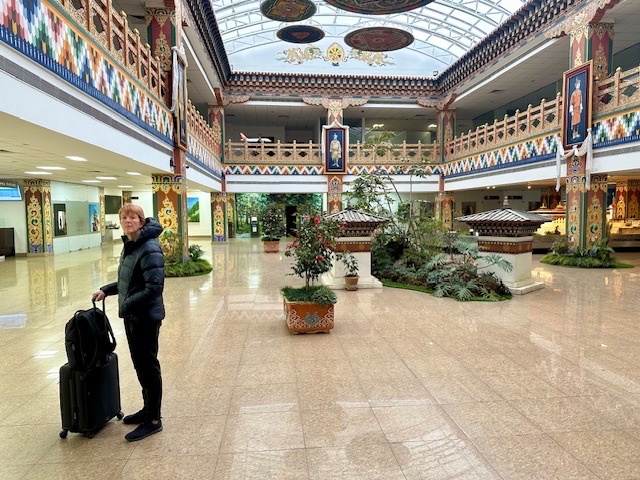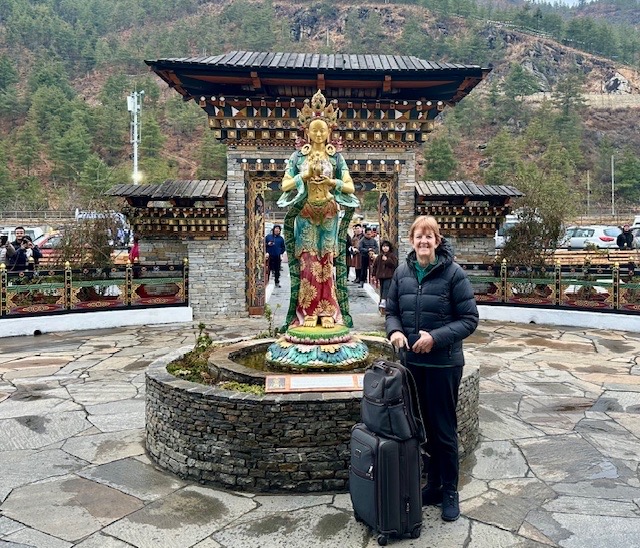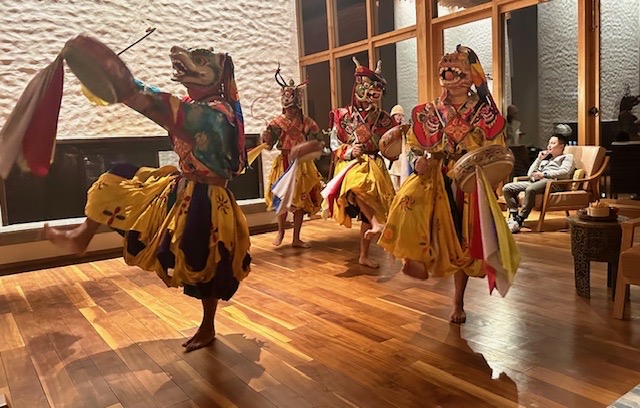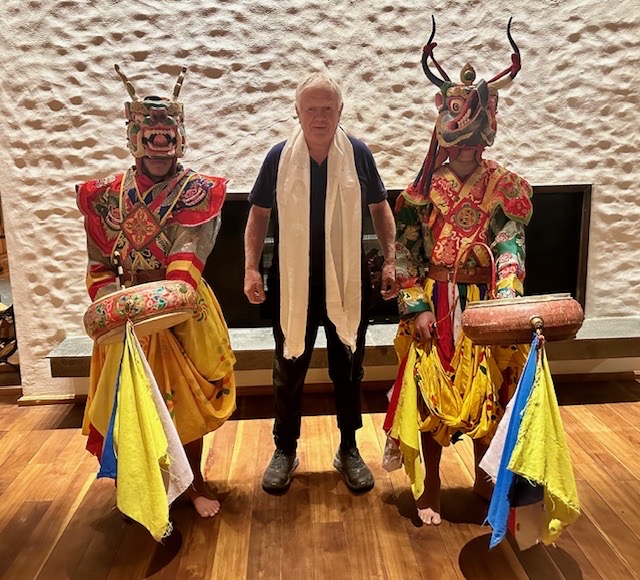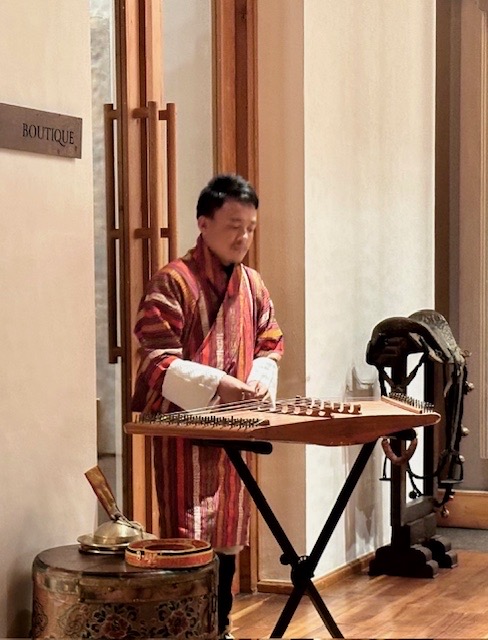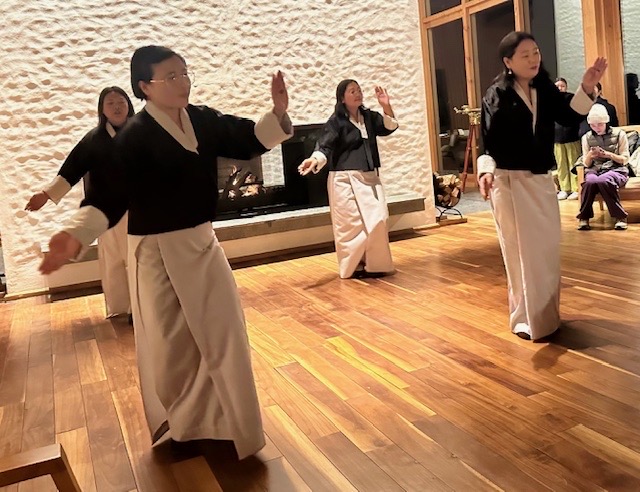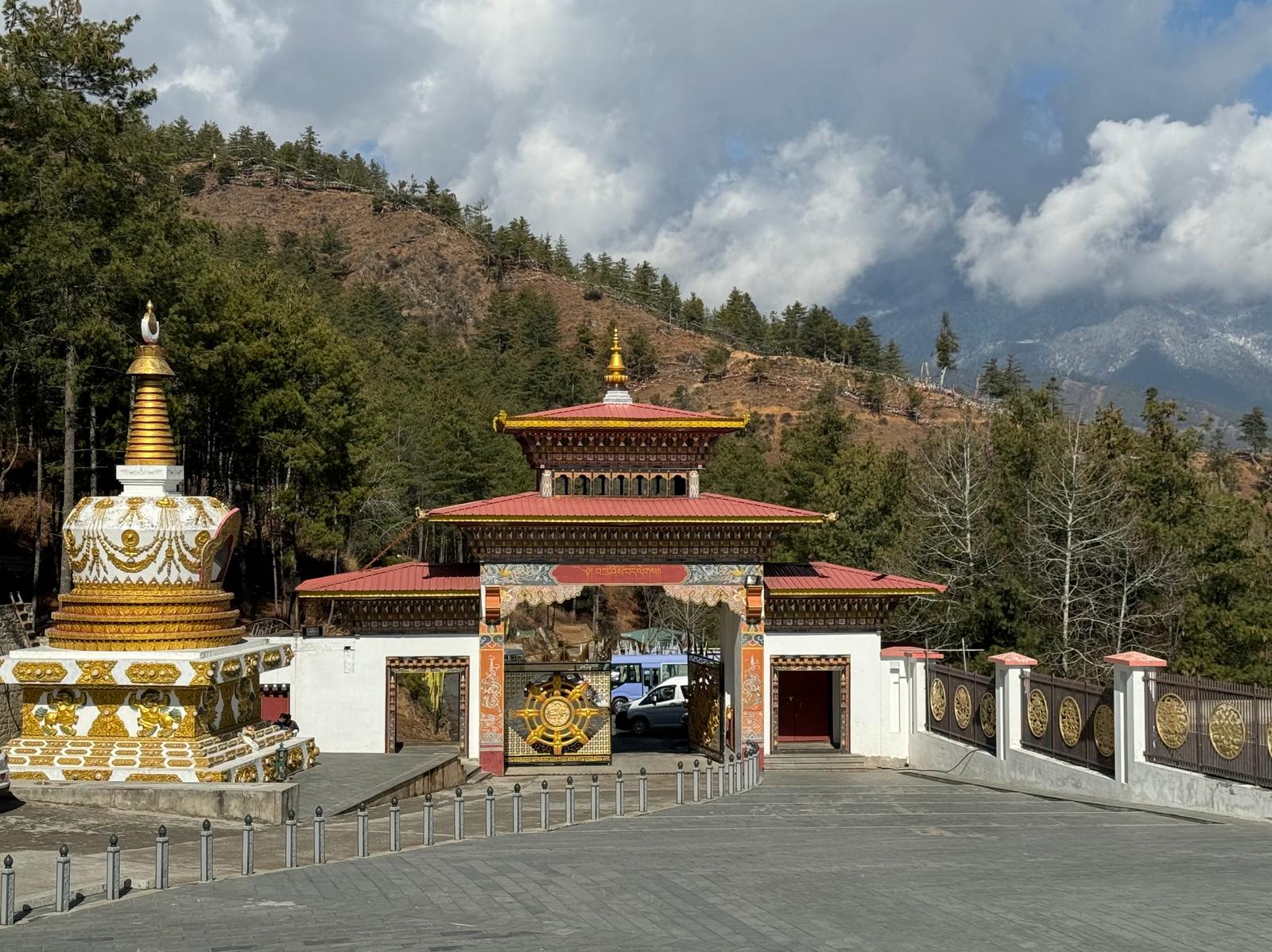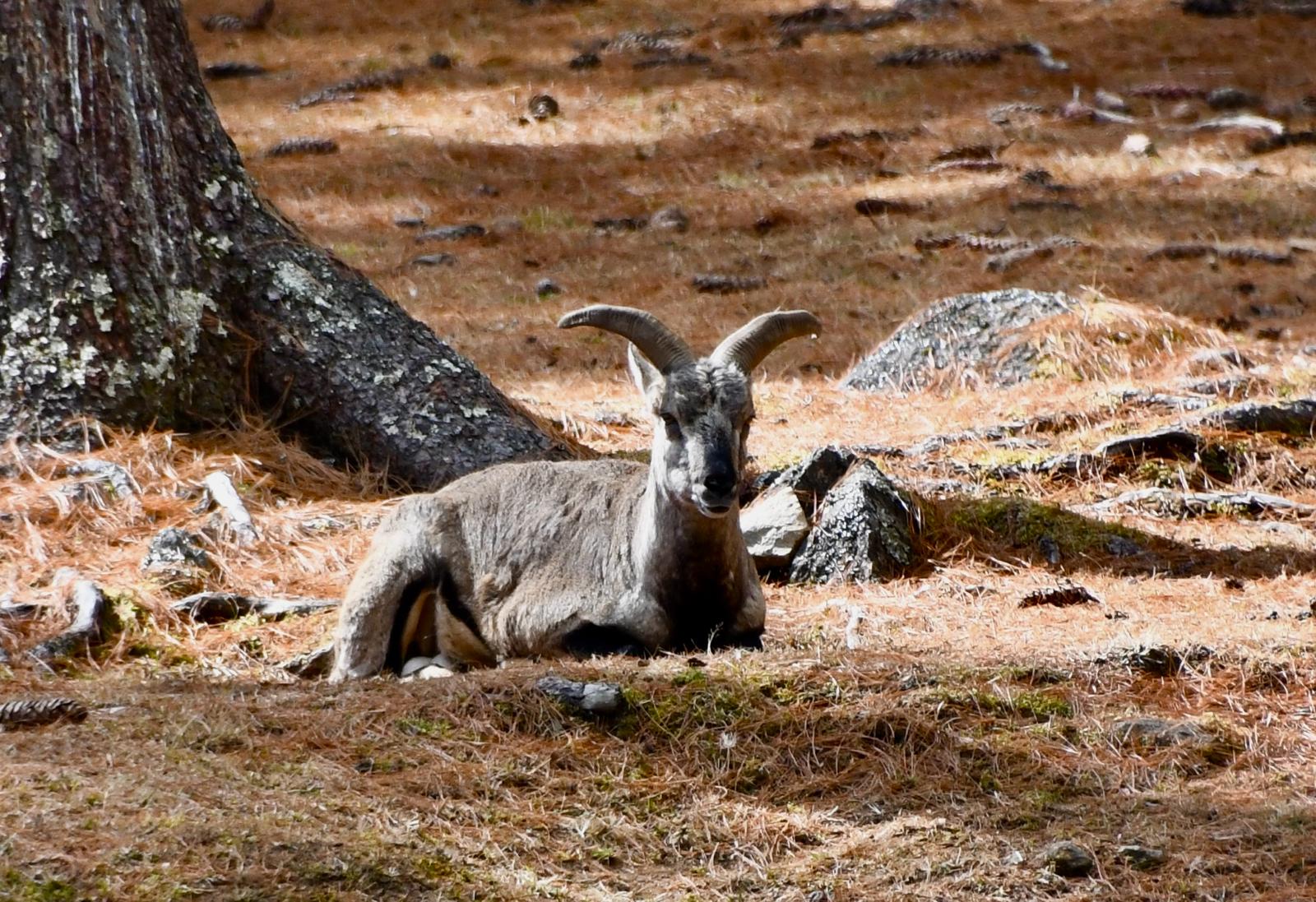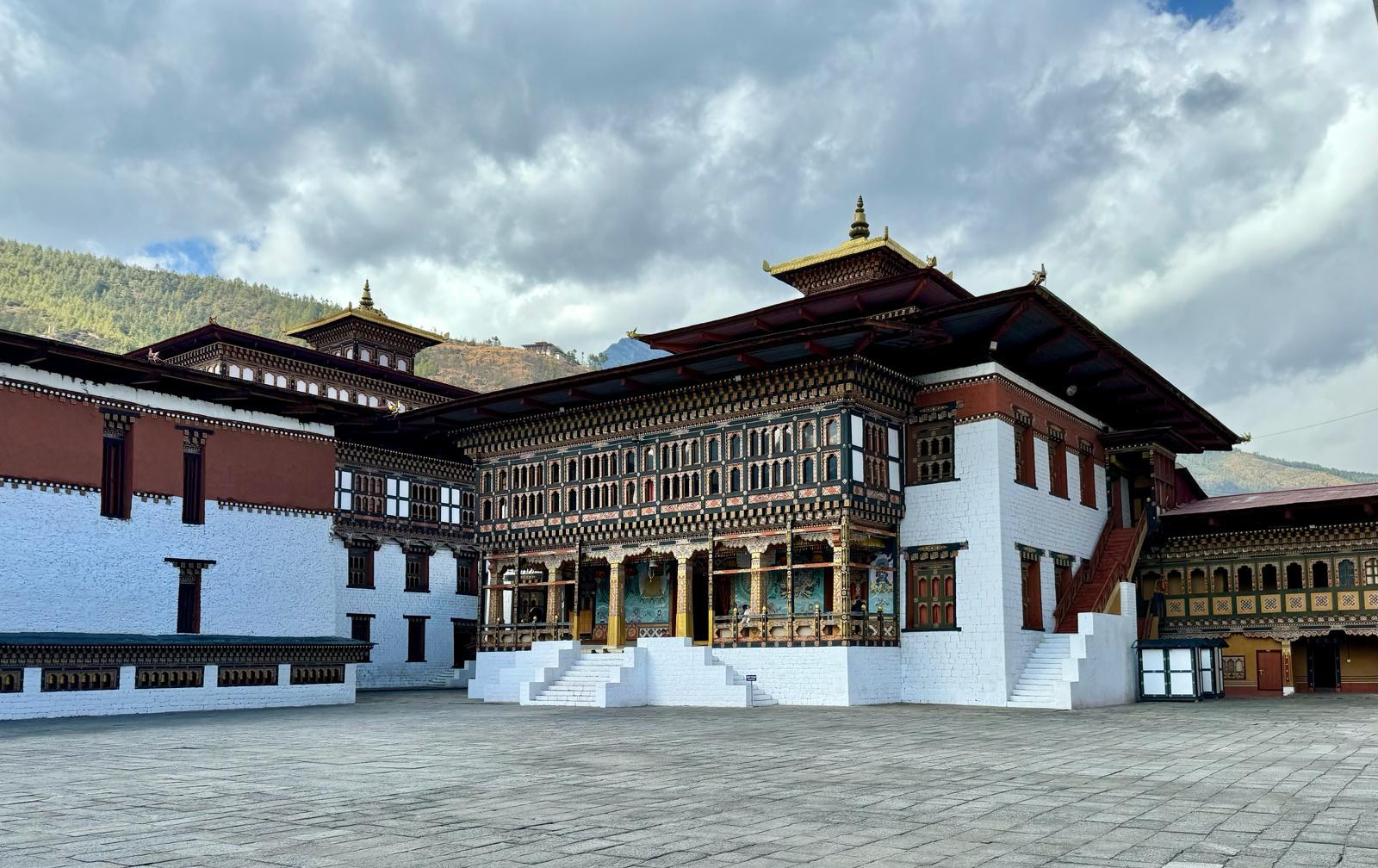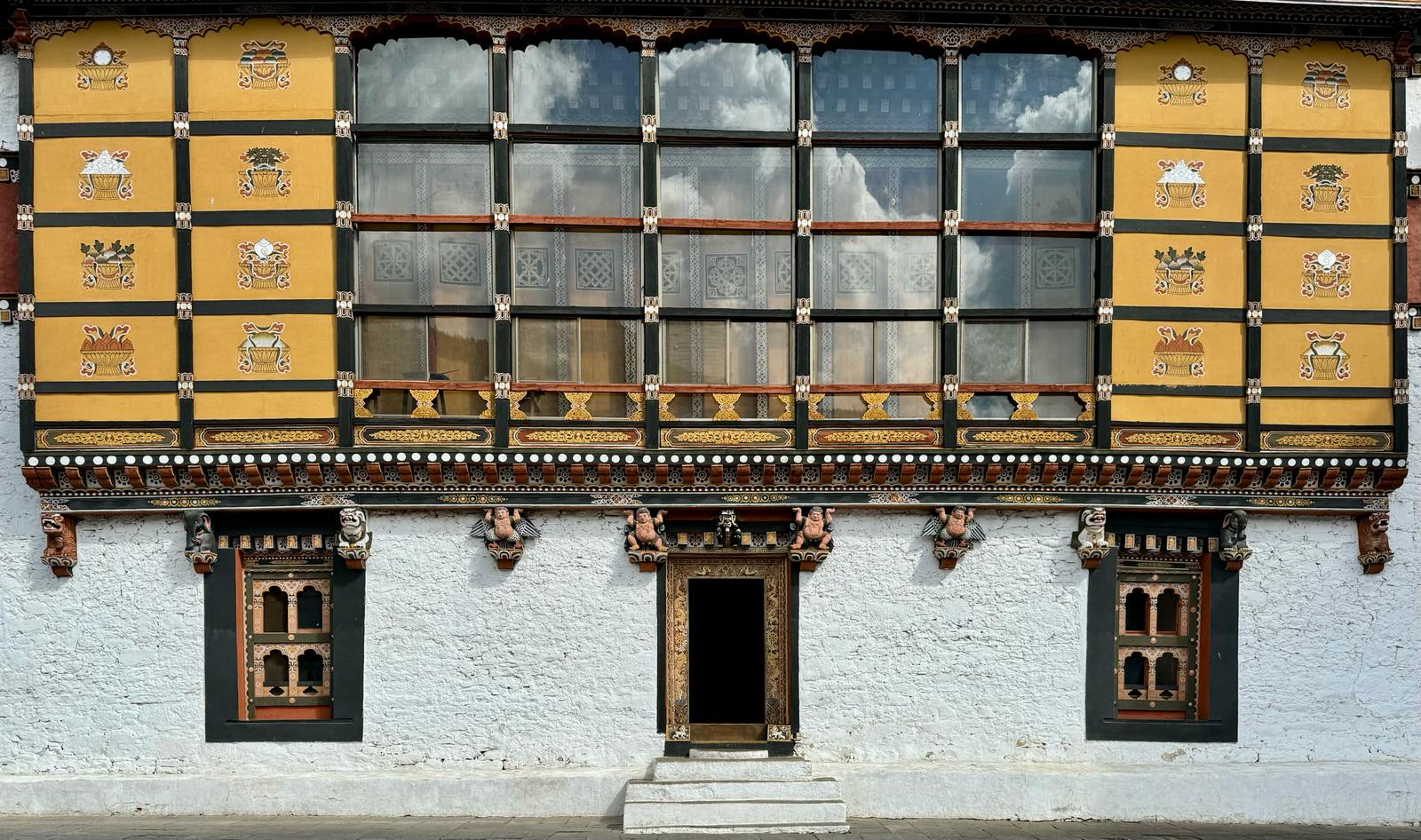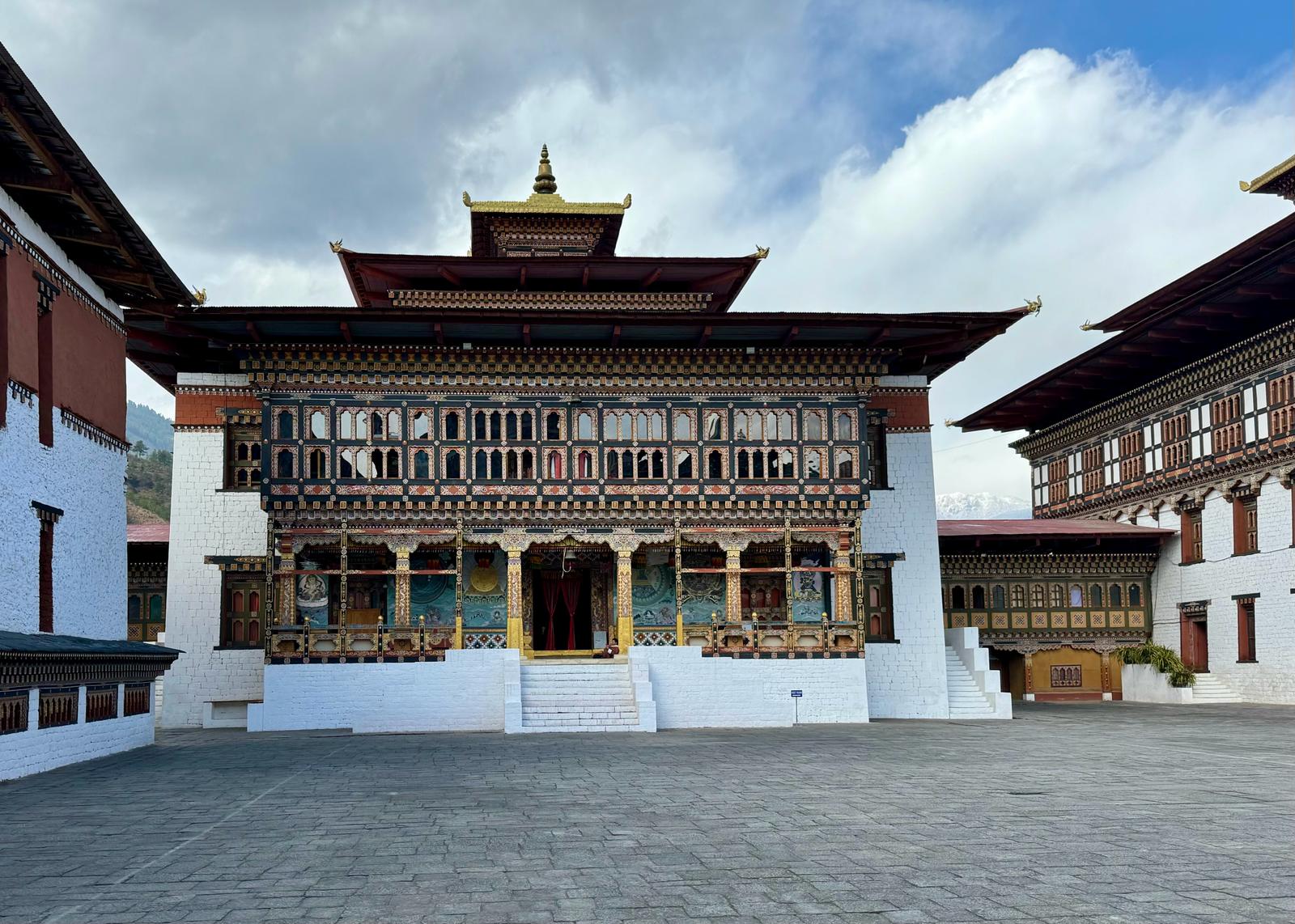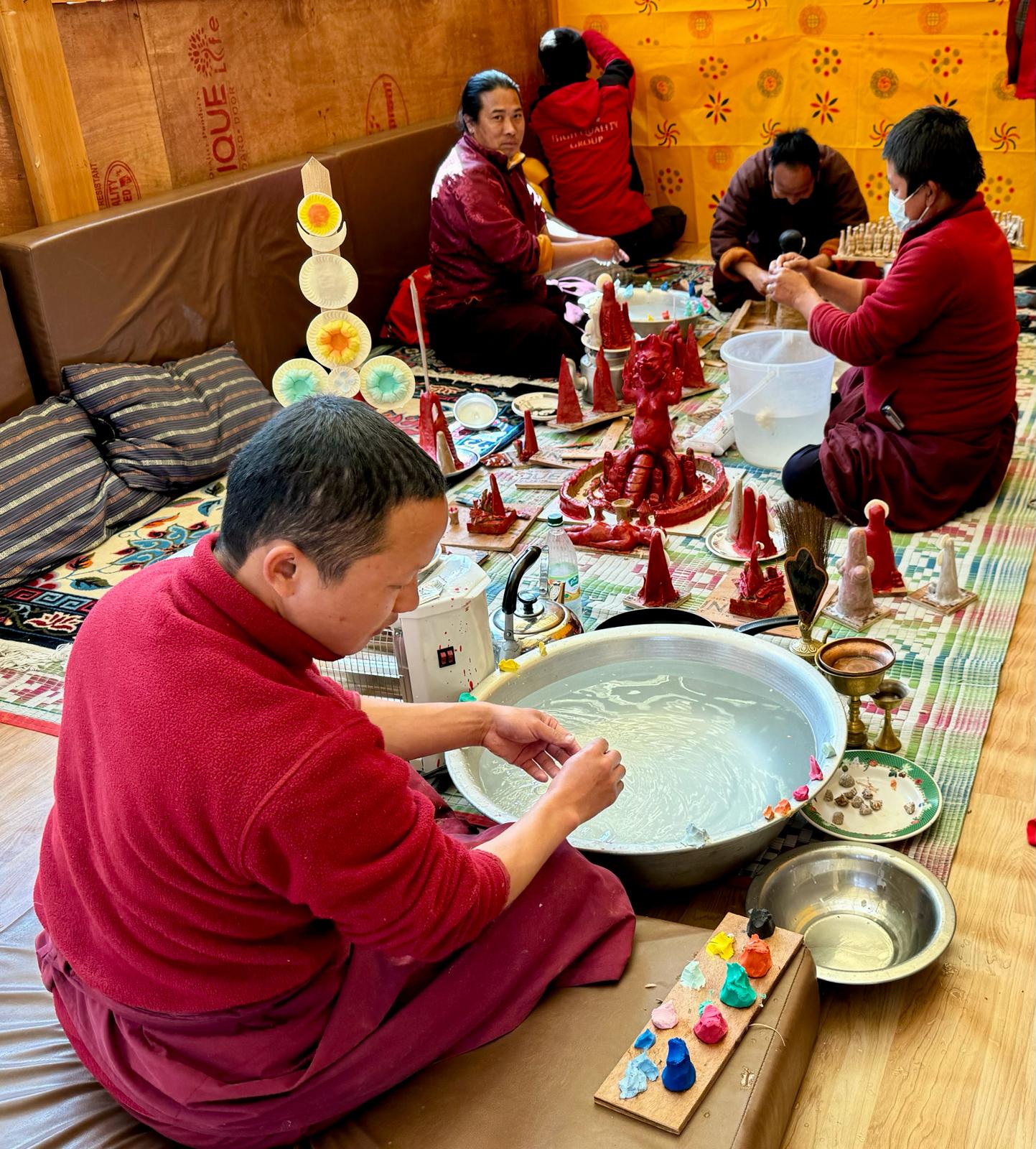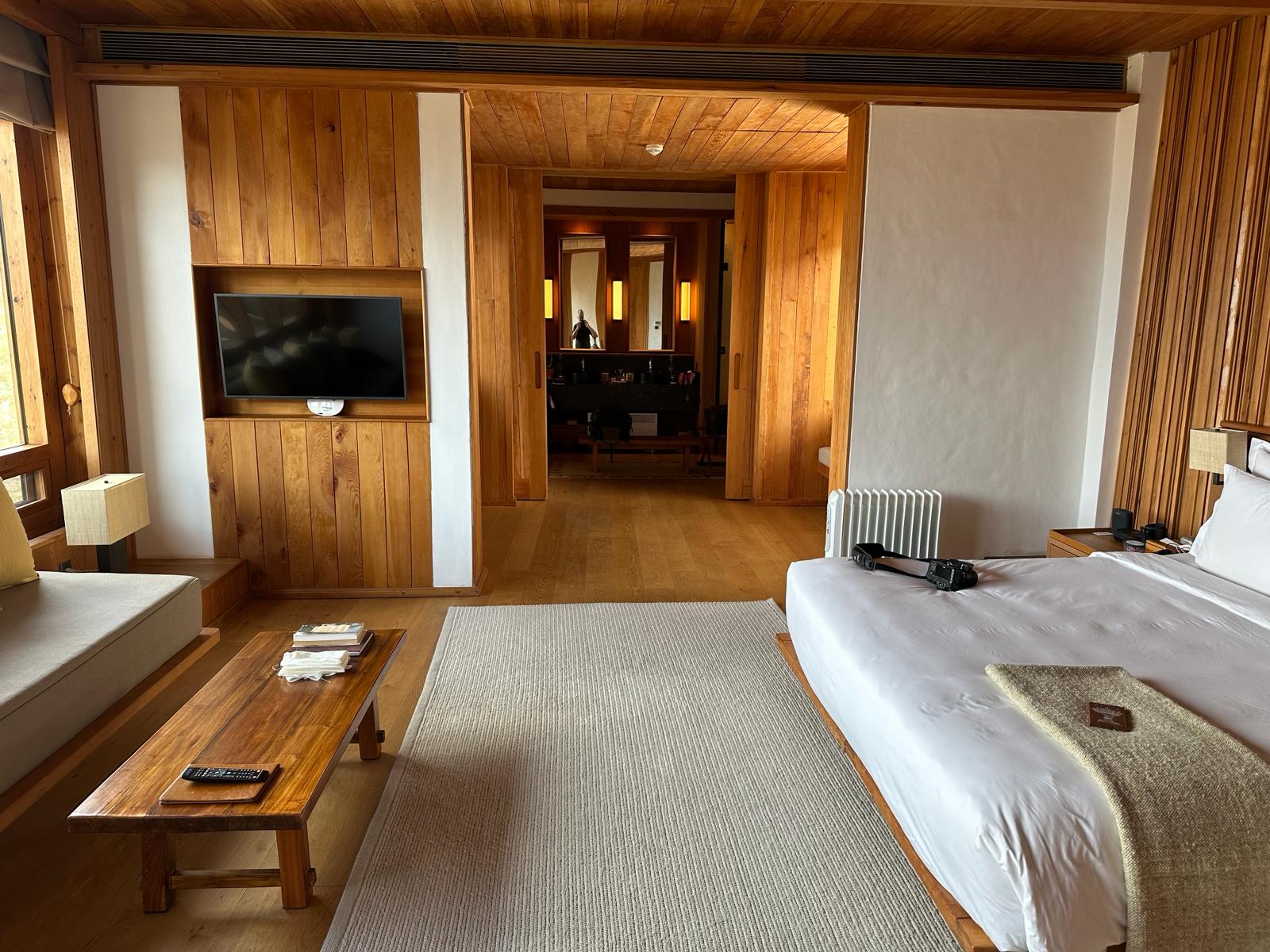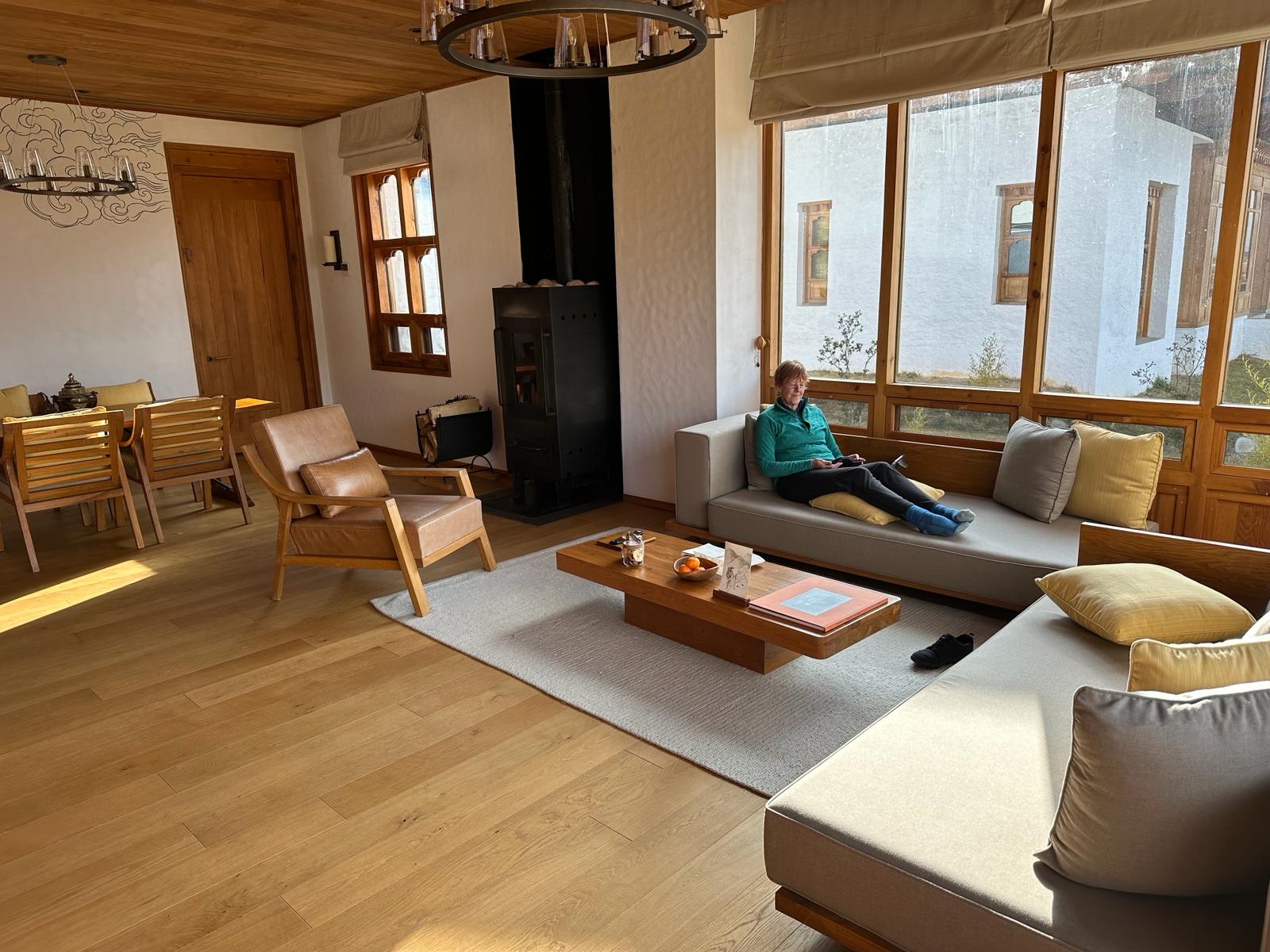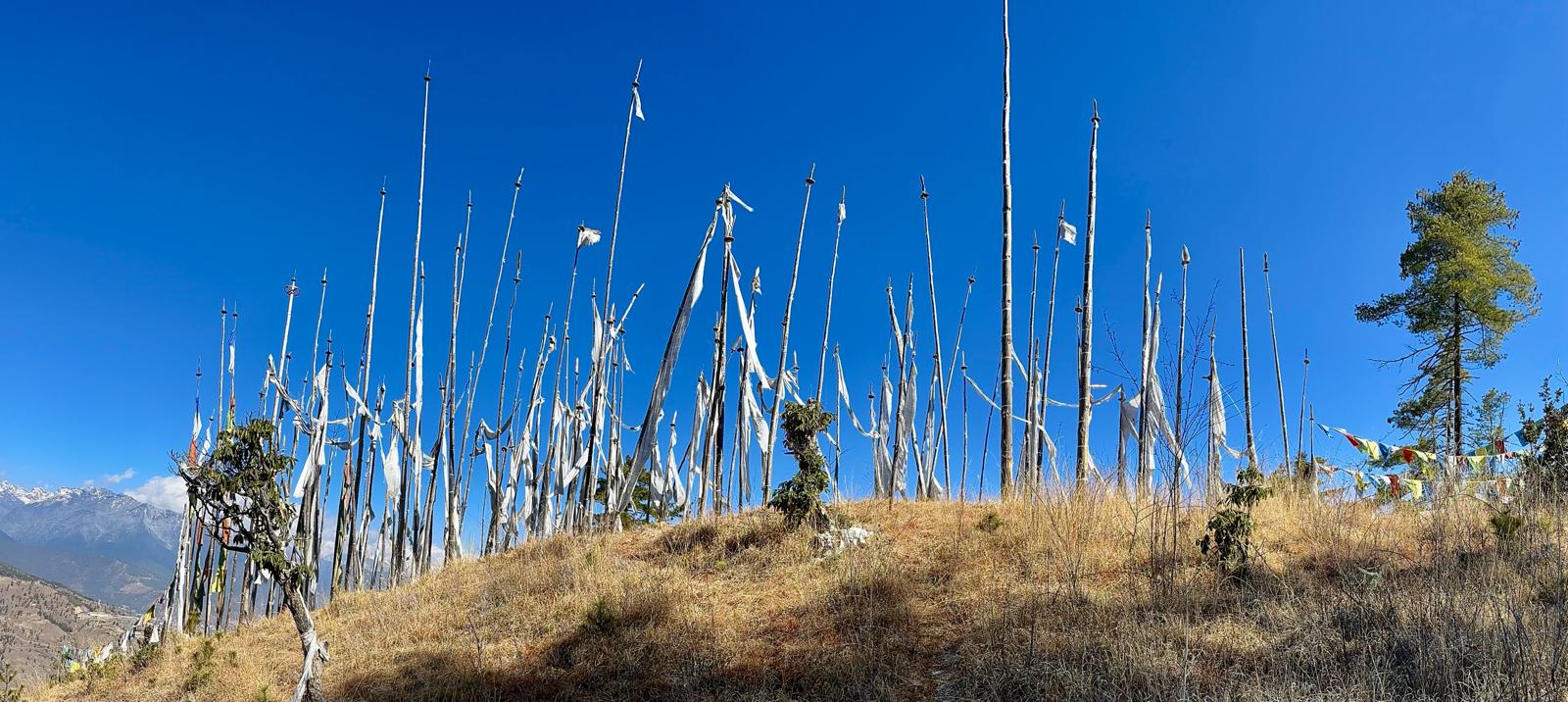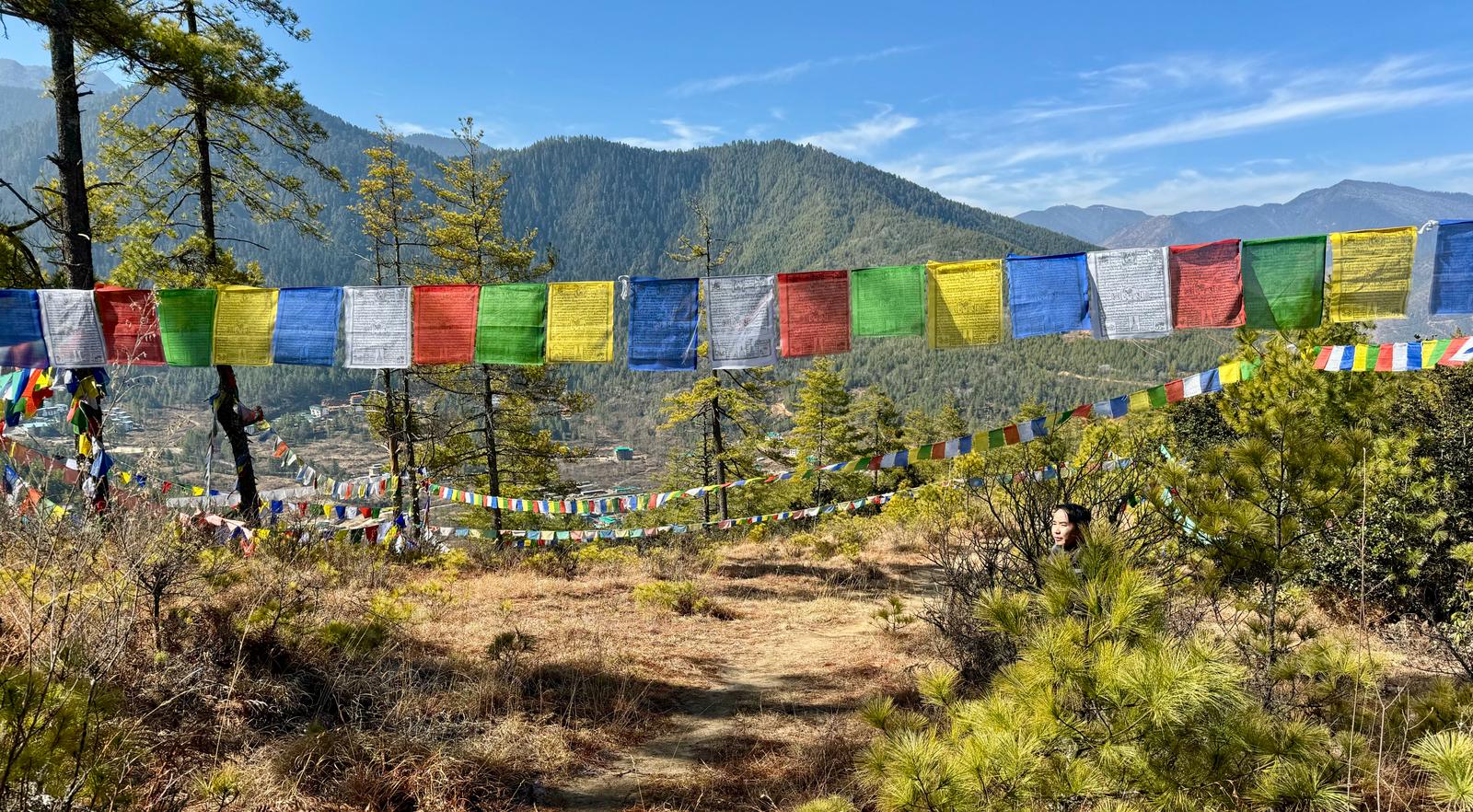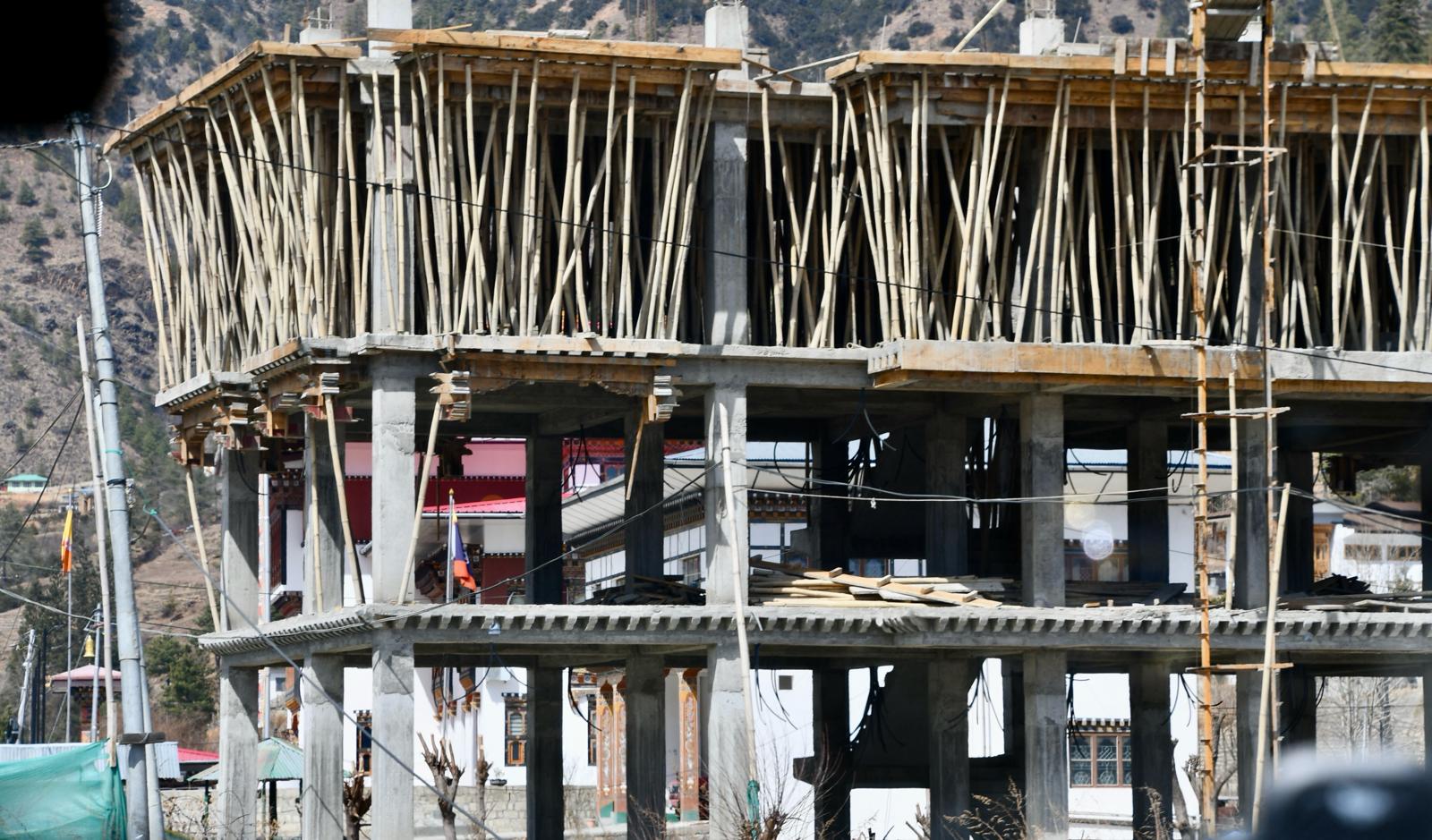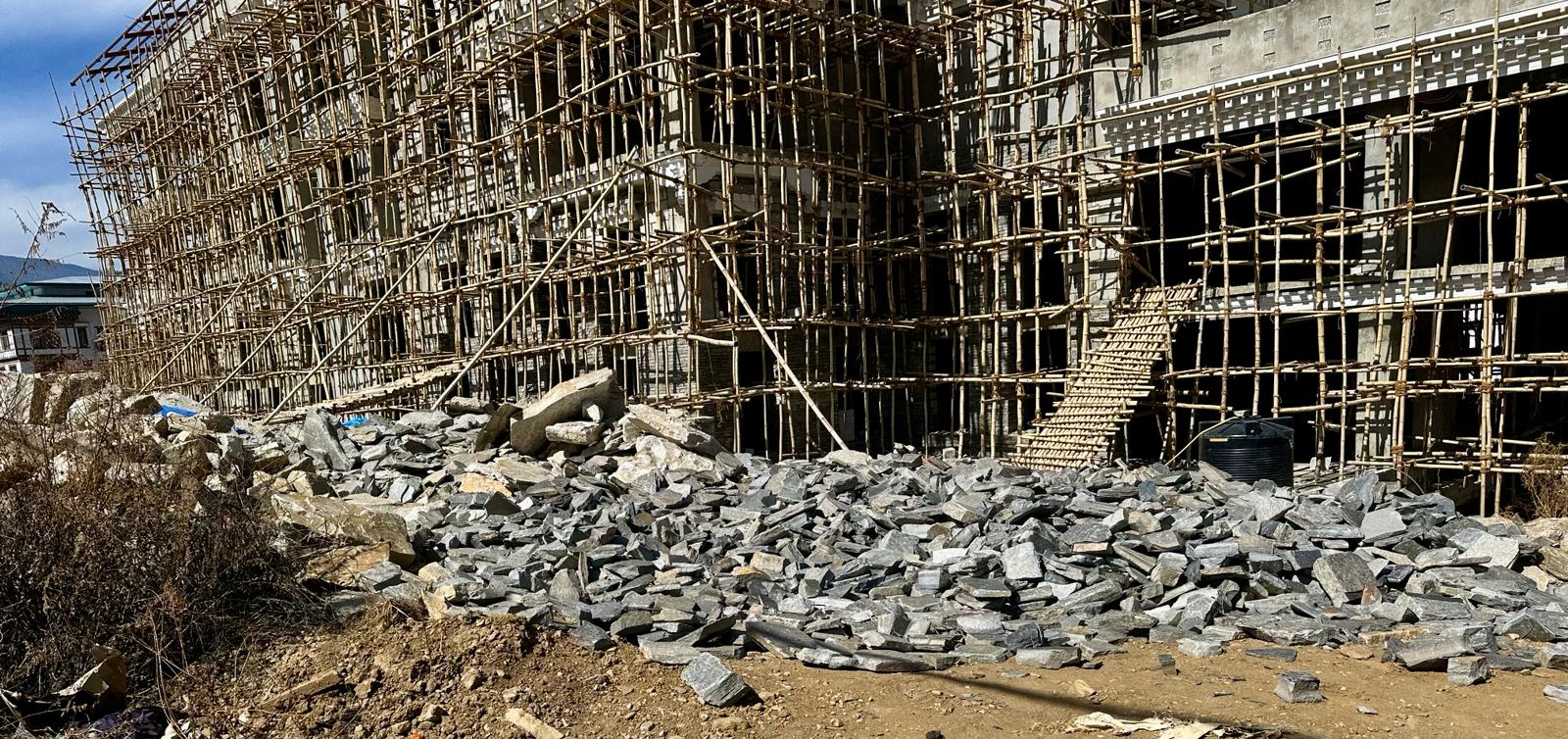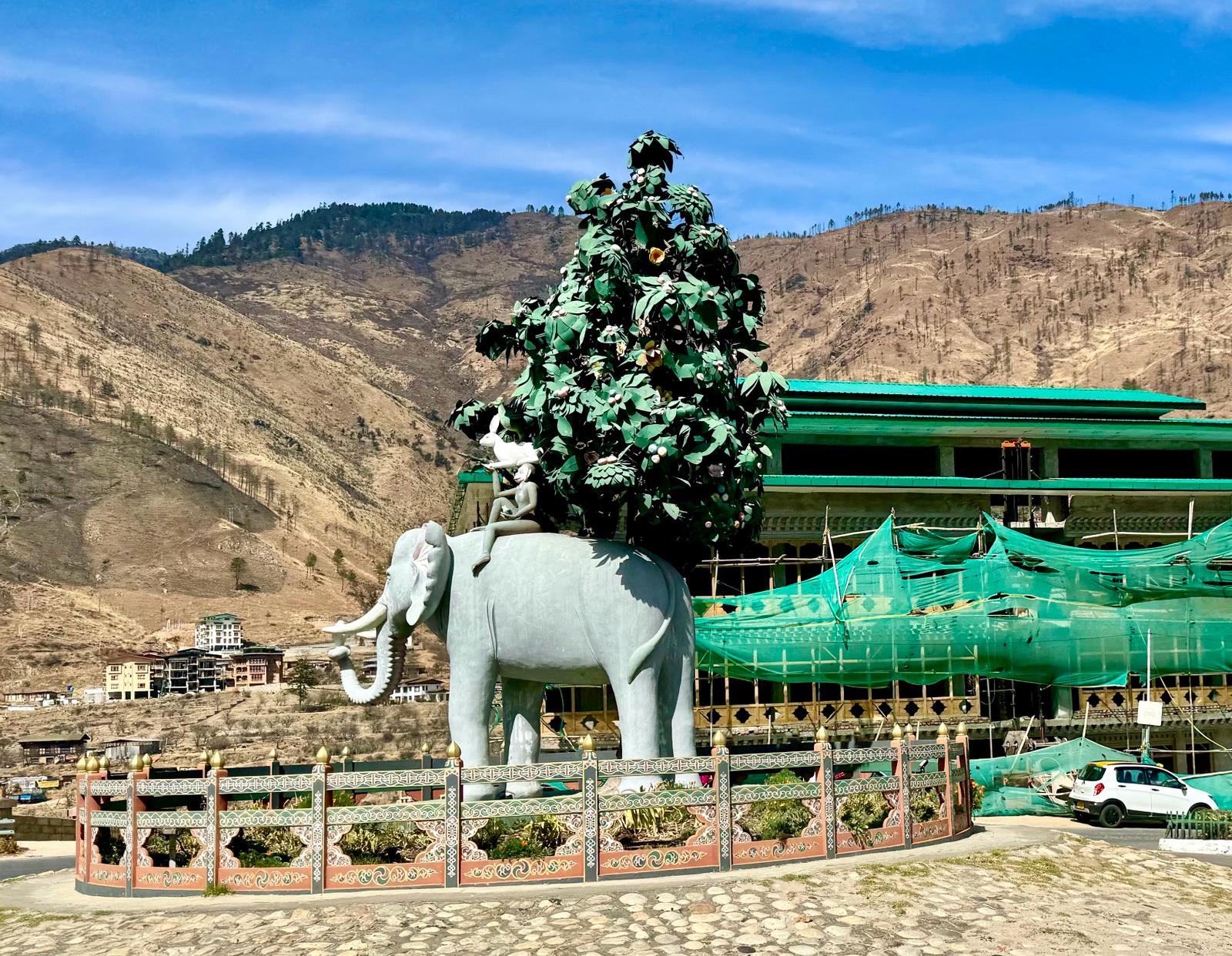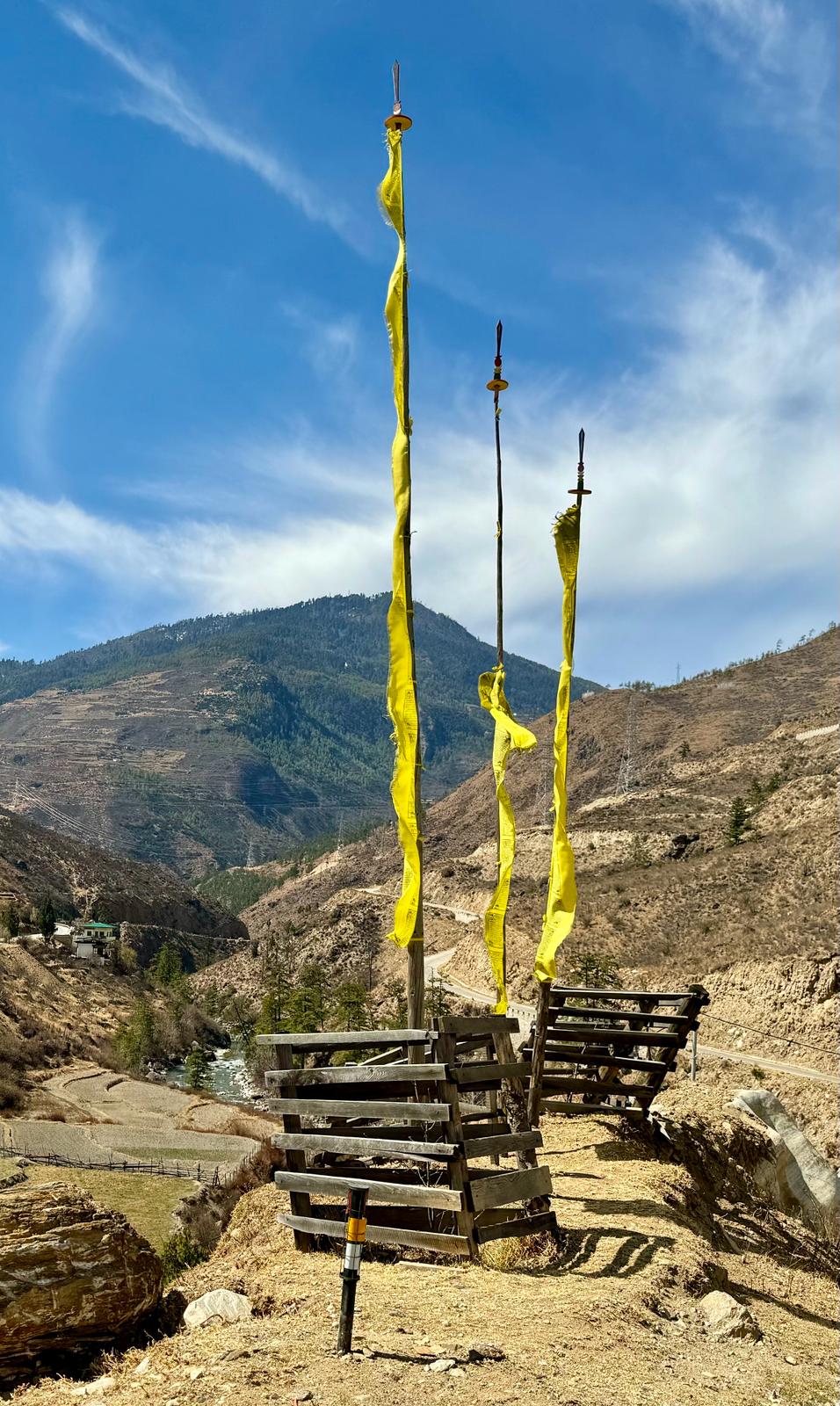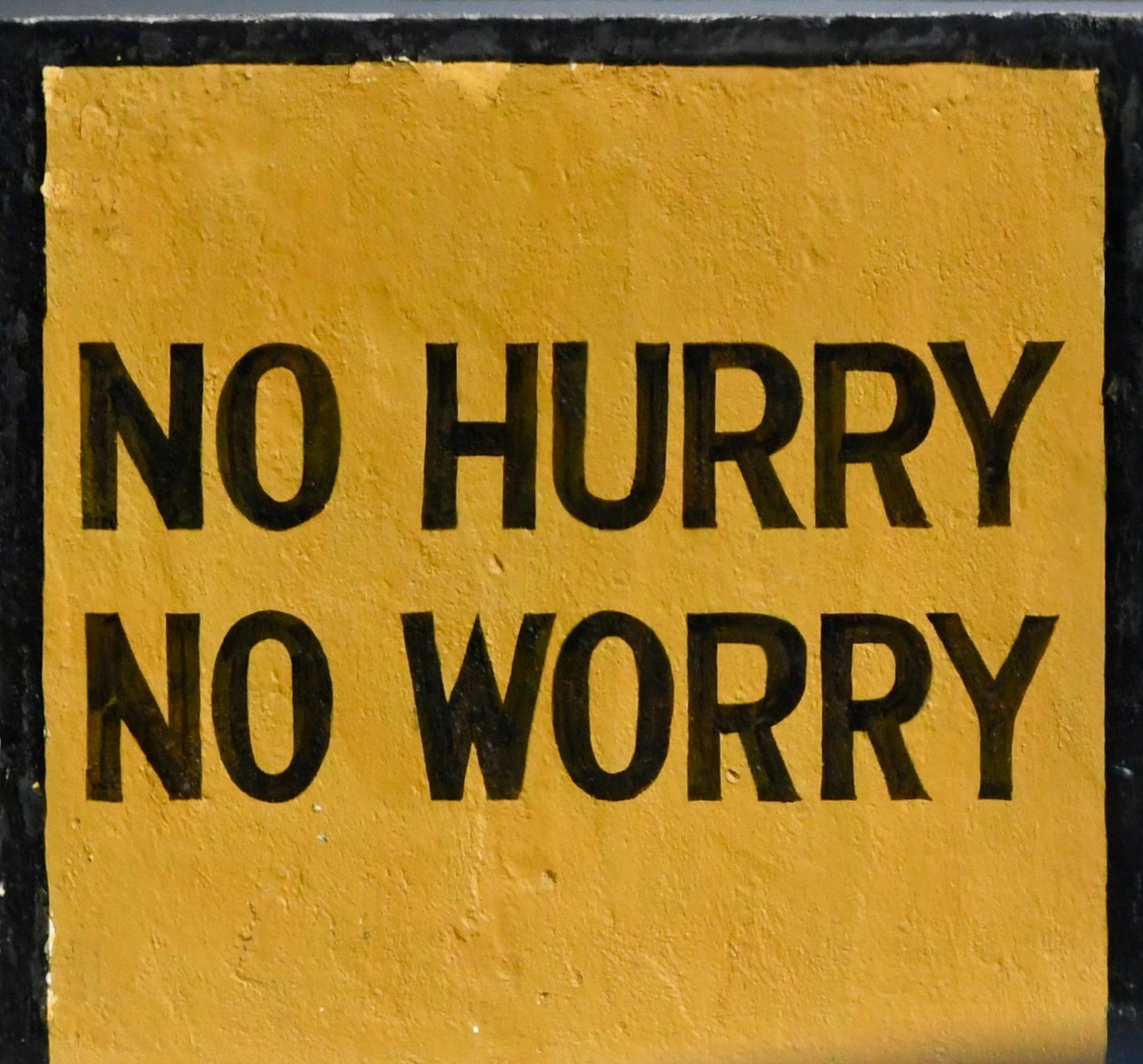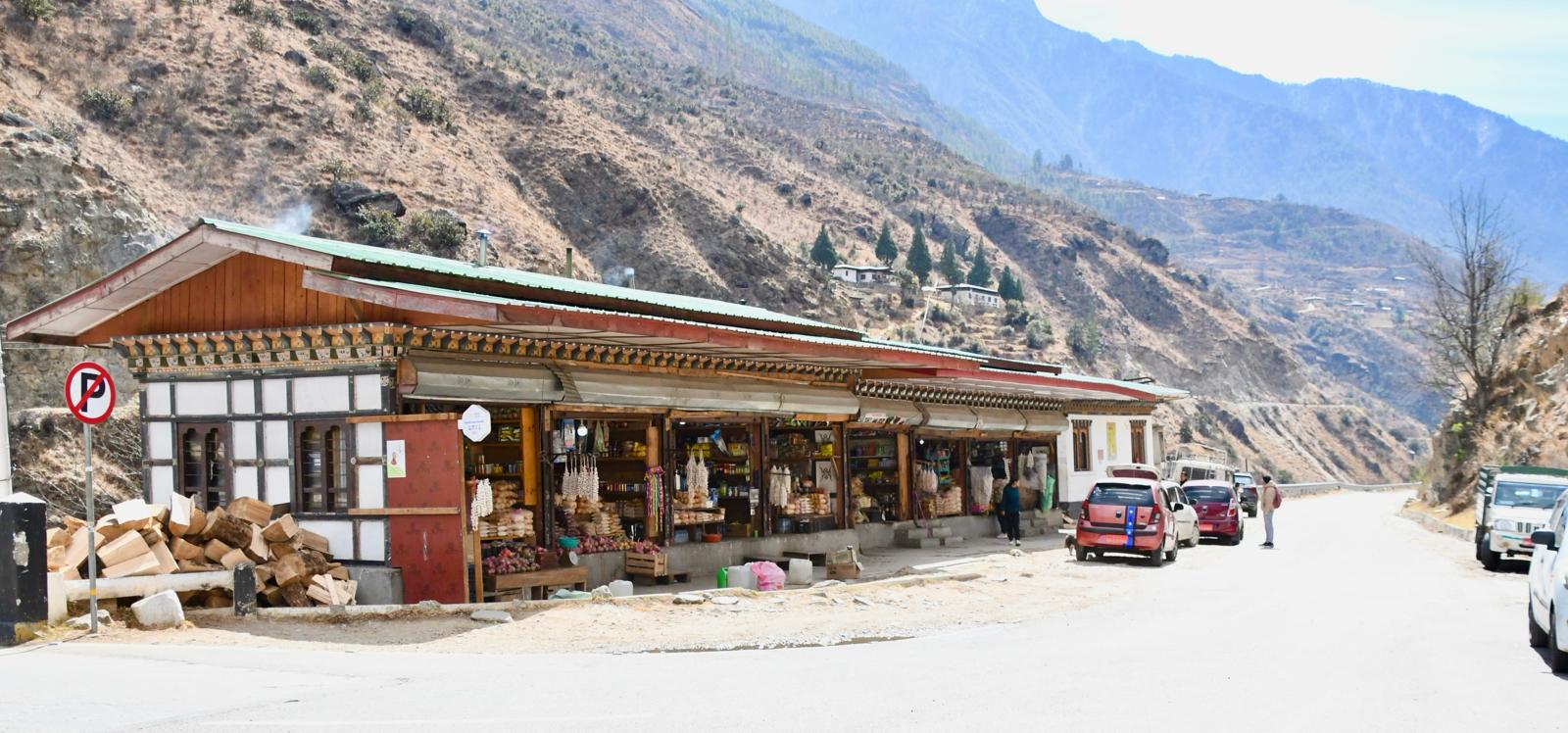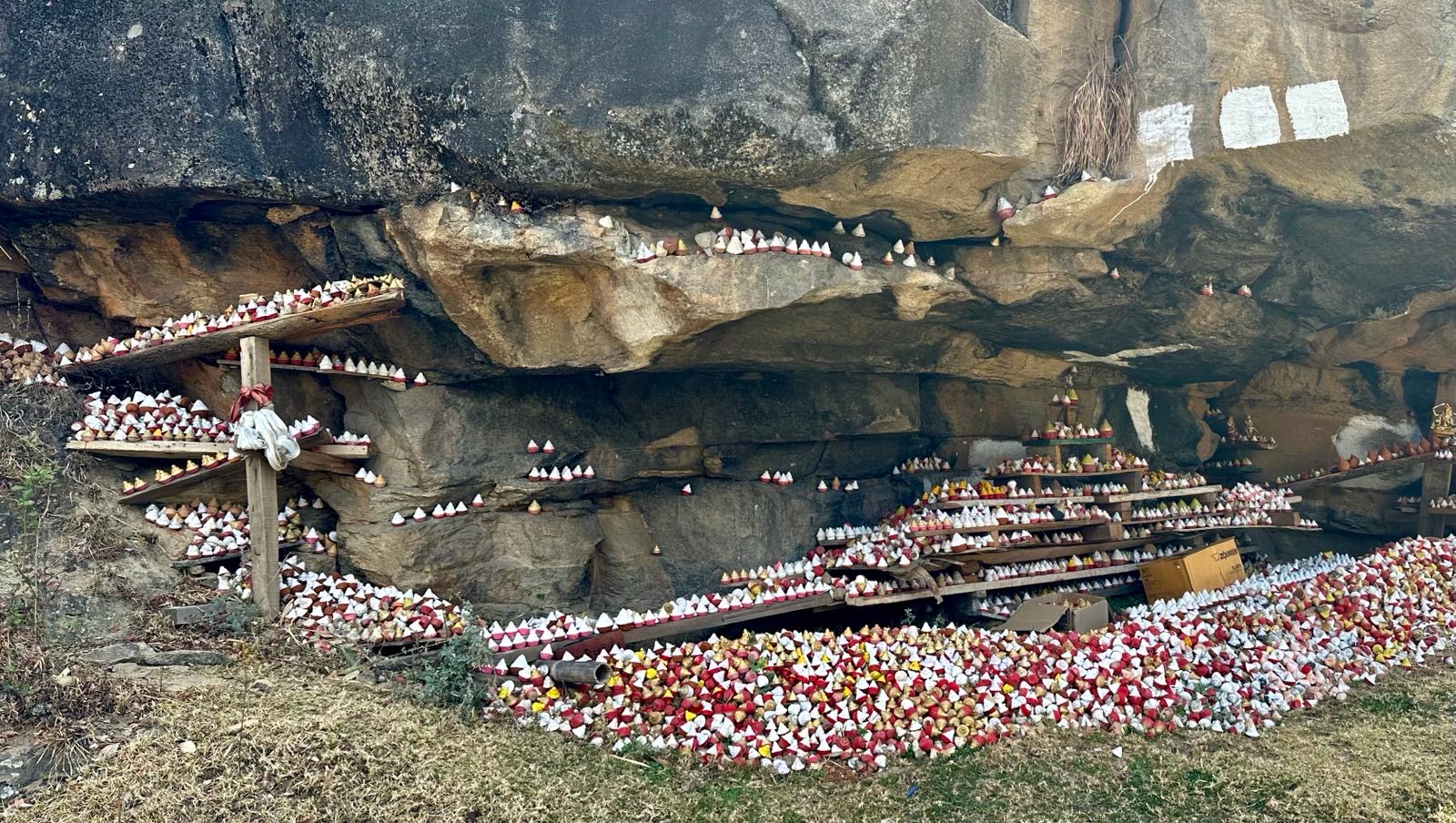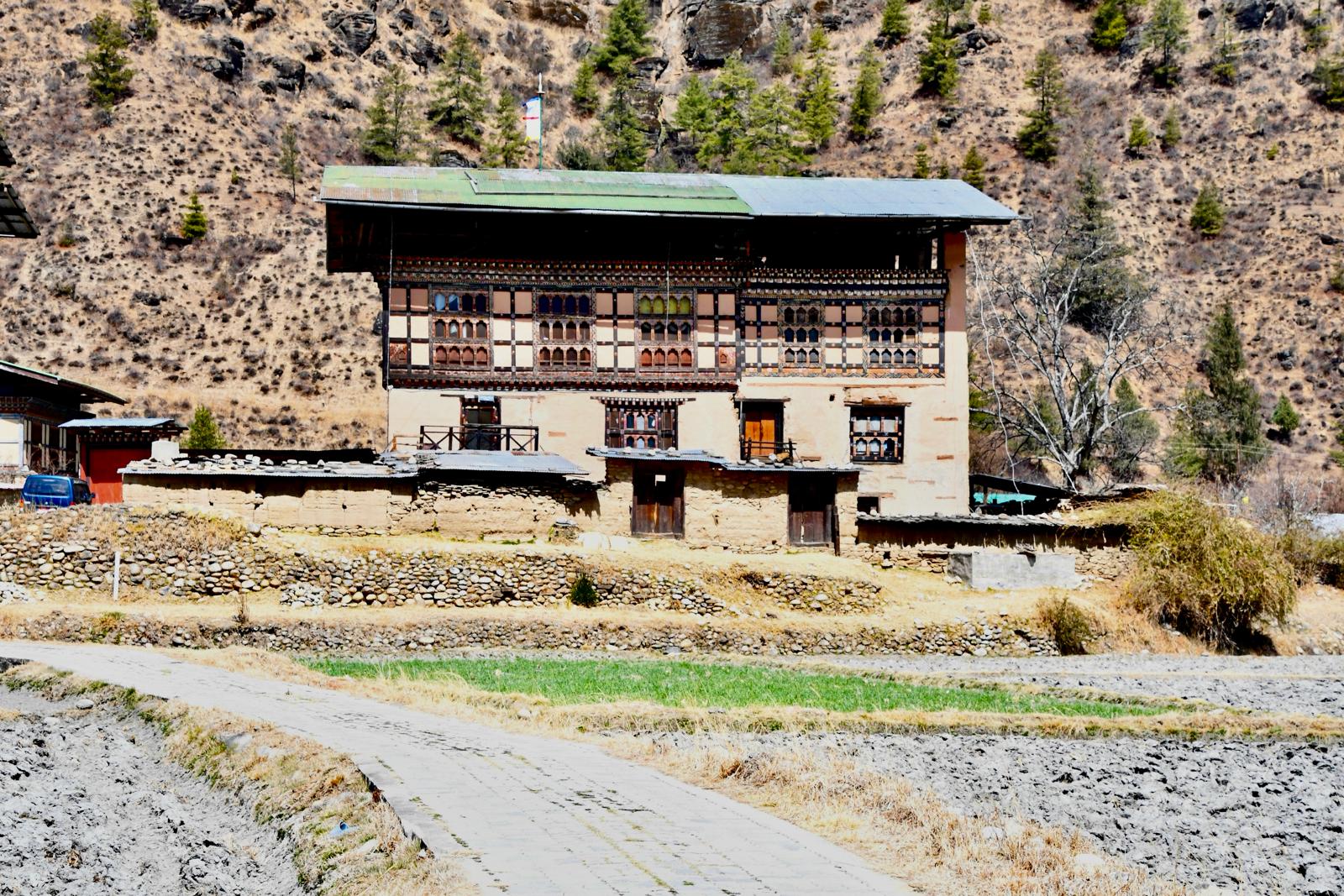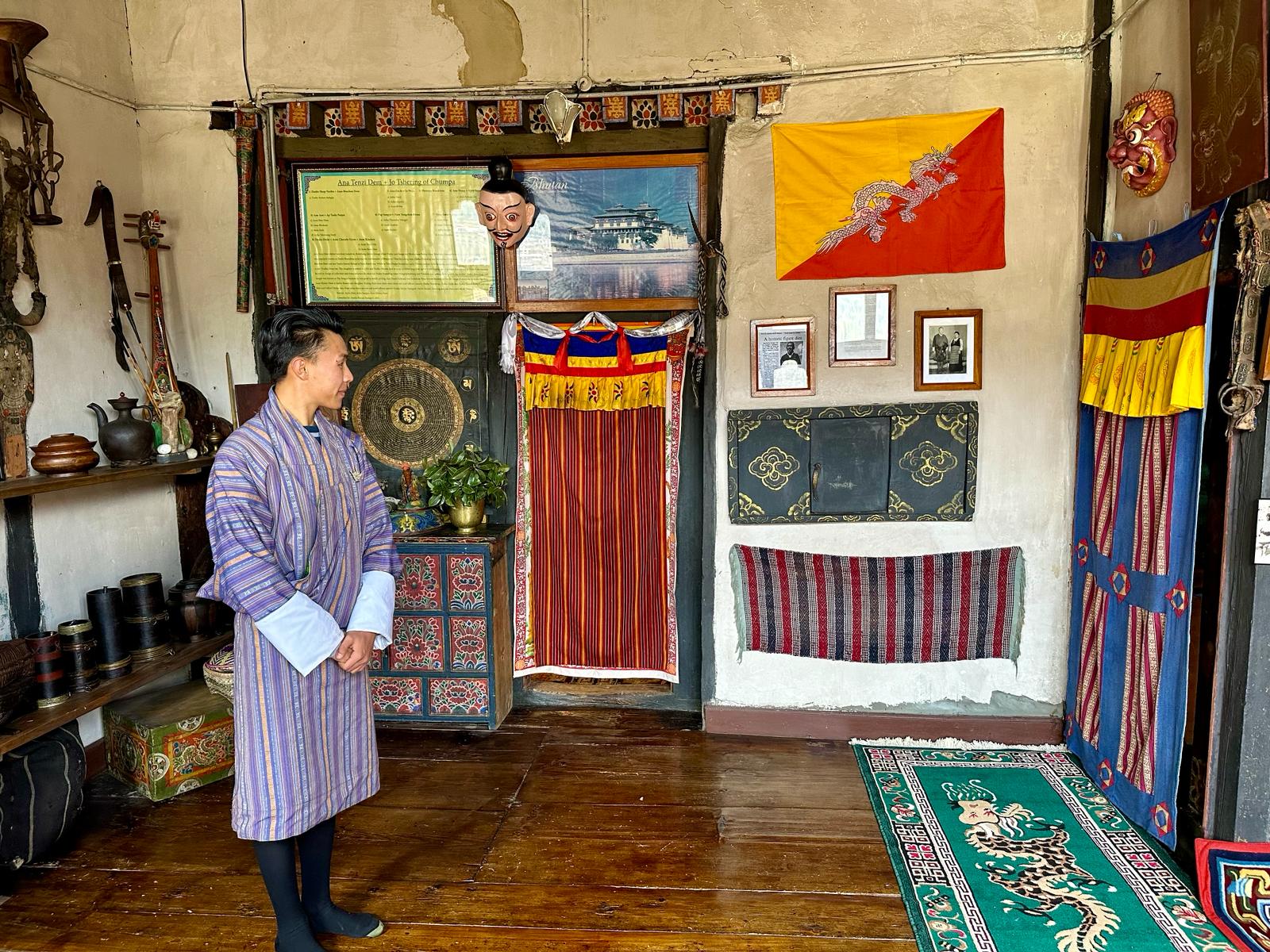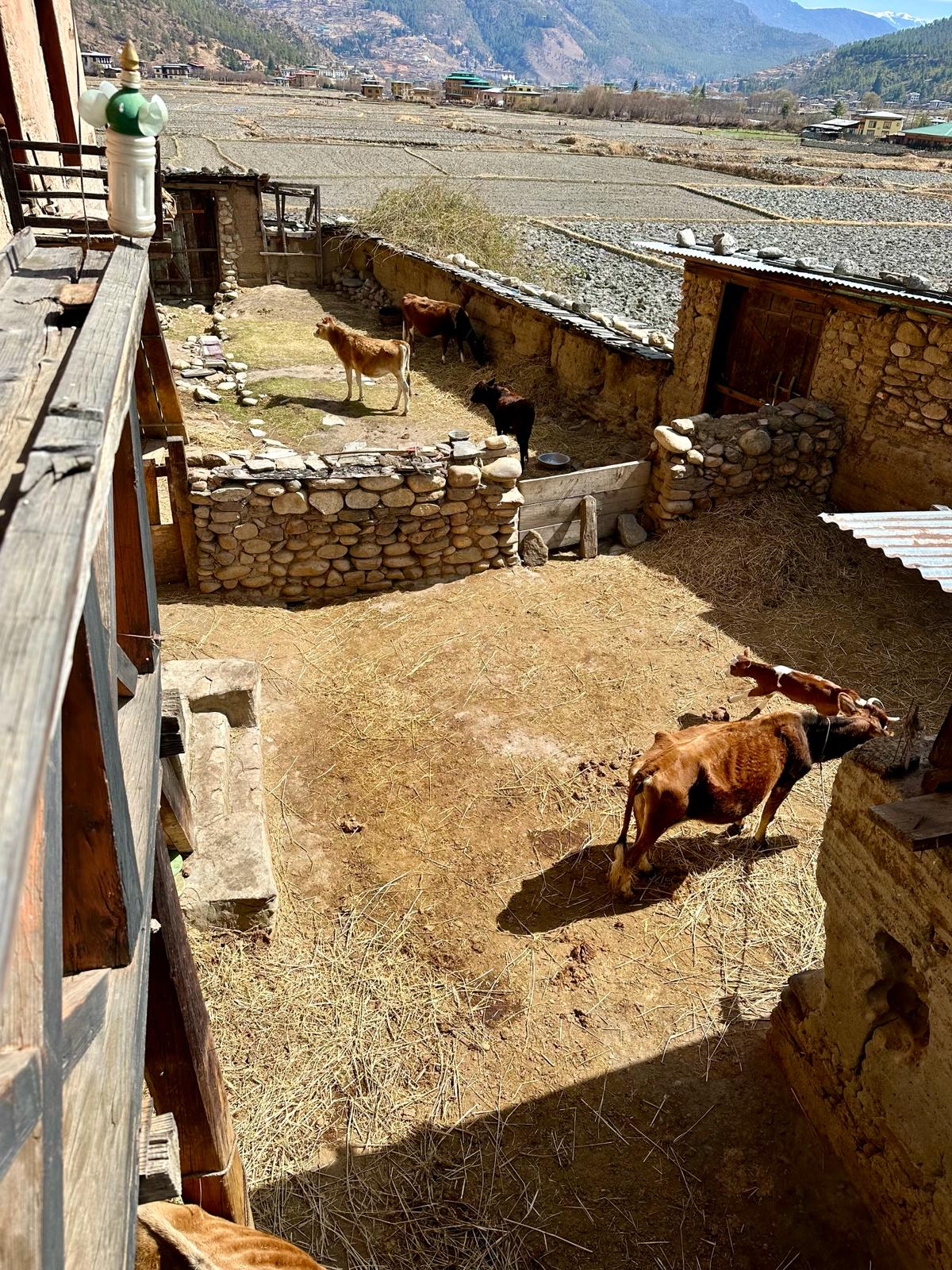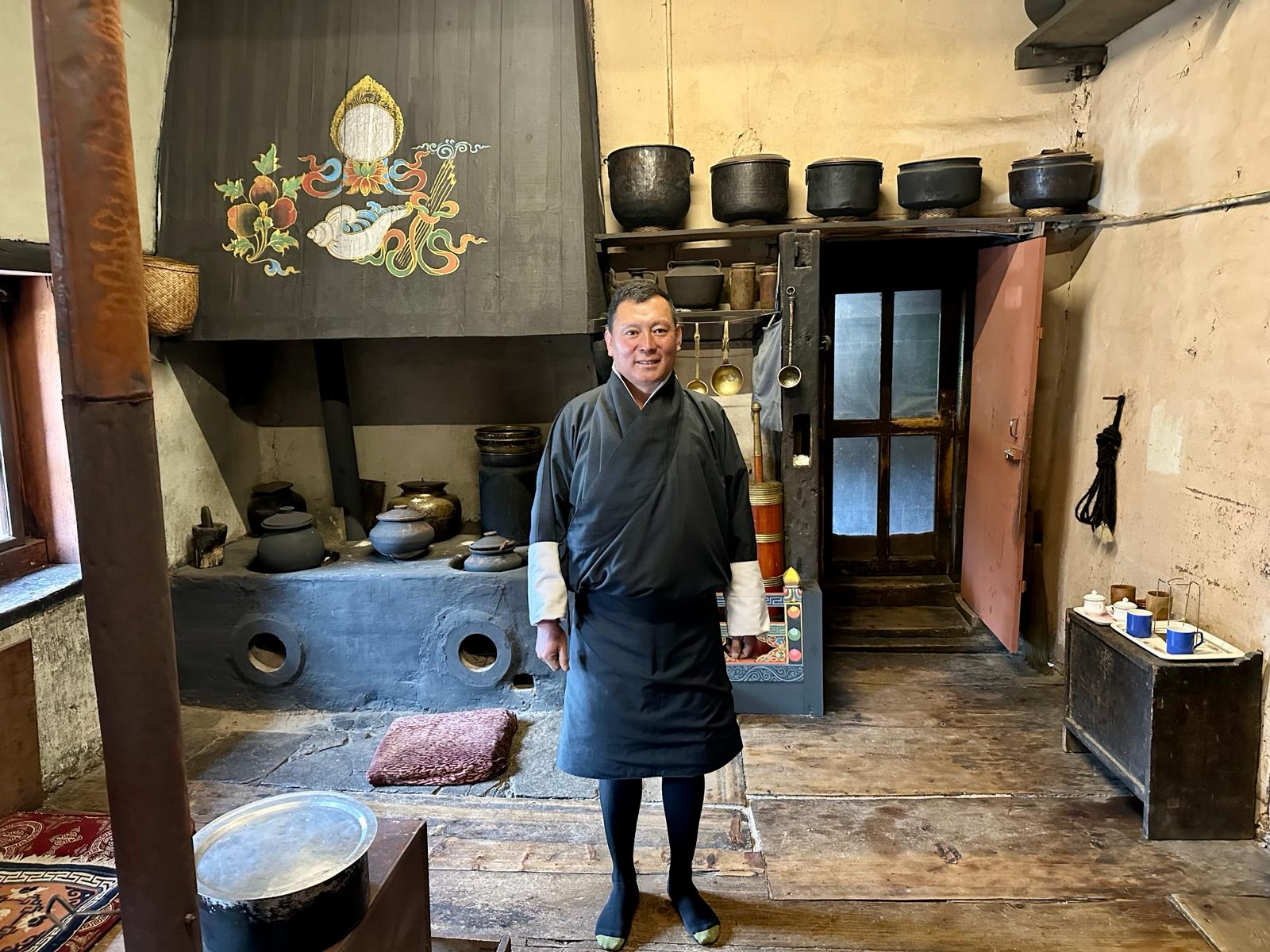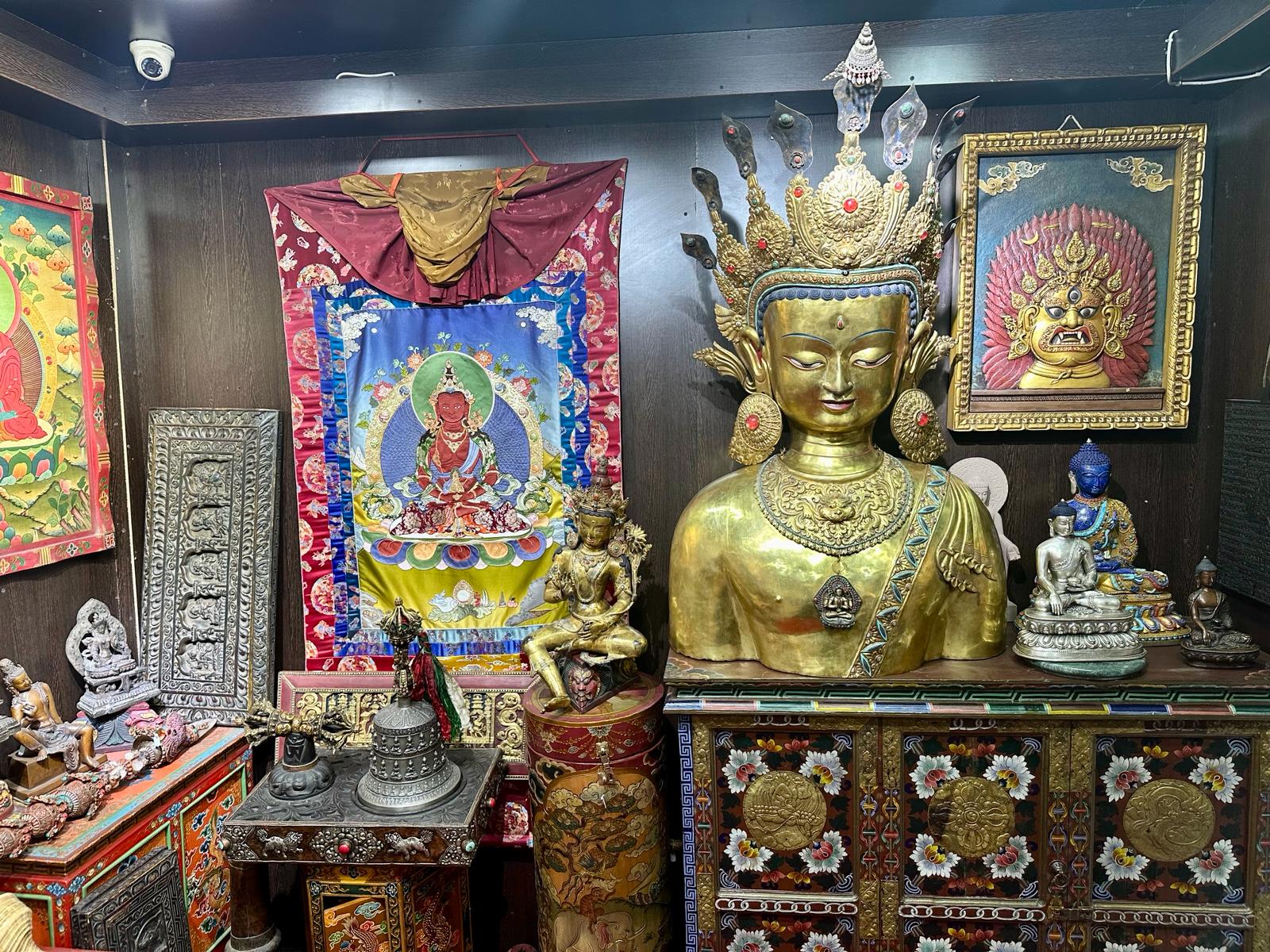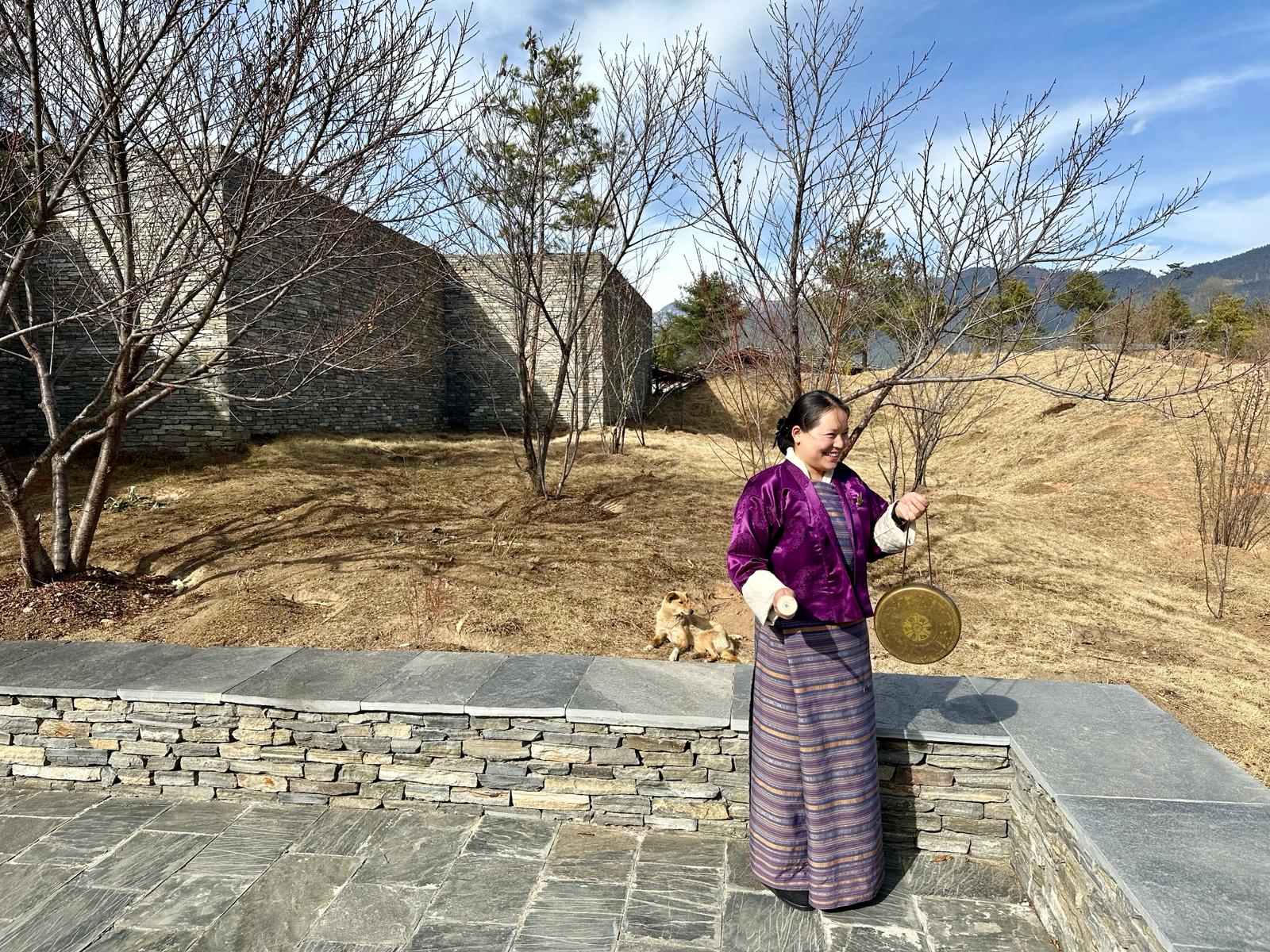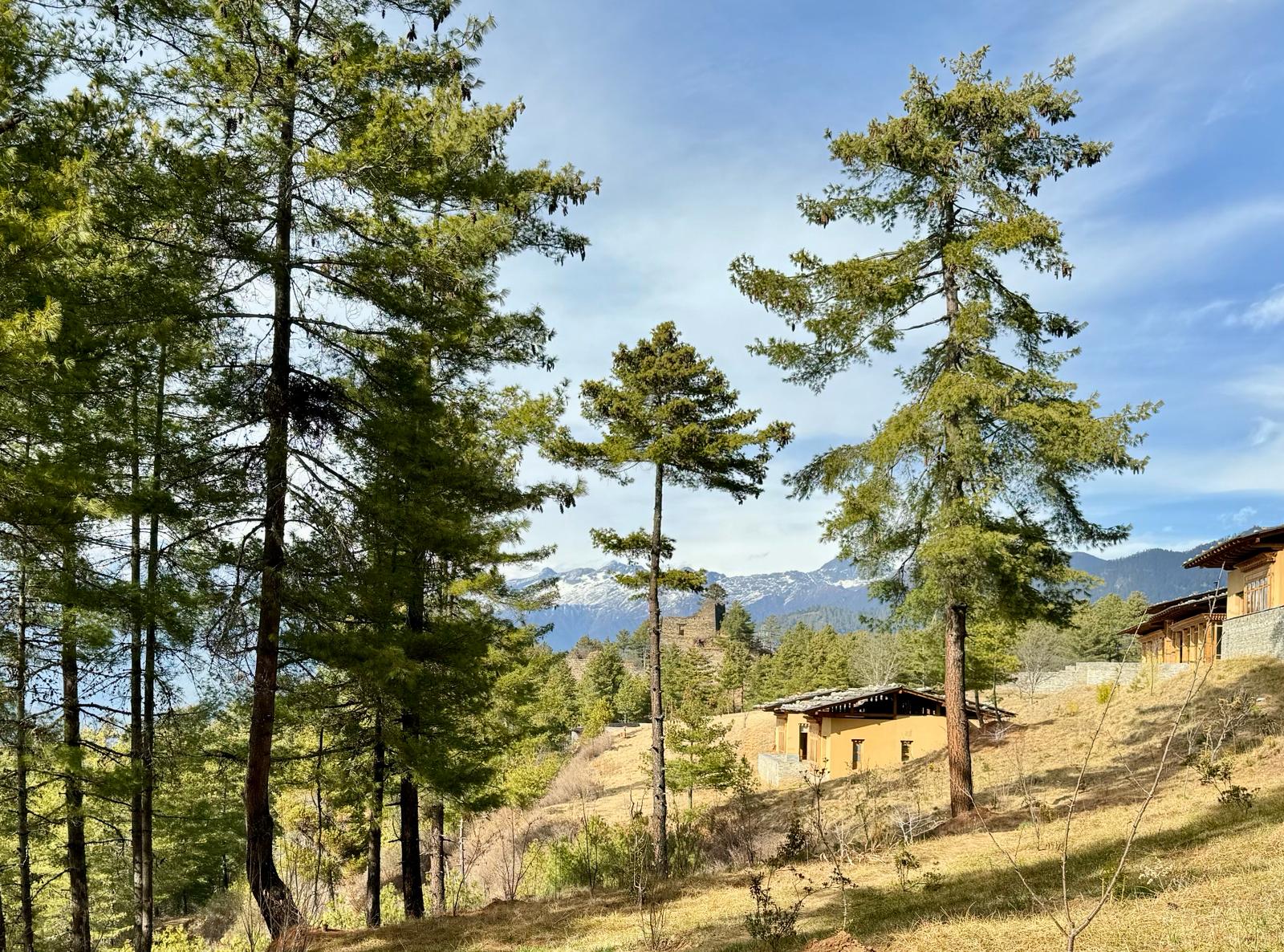Saturday 2 March: Gangtey – Sylvia
We had a leisurely start to our day, meeting Chimi and Singye at 9:30am after a late breakfast. As with all the other lodges, we started with healthy shots. I have been blown away by the flavours they are able to get into the food here. Every meal we have had has been absolutely delicious. Roger tried one of the local breakfast dishes with buckwheat noodles and yak meat. I was not so brave.

The do not disturb signs at each of the Six Senses Hotels. When the yaks head is tucked away, do not disturb.

The Six Senses Gangtey resort is set in the Phobjikha Valley, at about 3,000 m. This high altitude valley is dotted about by small villages and is home to yak herders and the rare black-necked cranes, which spend their winters here before heading to Tibet for the summer breeding season. A small serpentine river runs through the valley, which in the summer becomes a wetland. Legend has it that a pig and a snake had a race from one end of the valley to the other. The pig won because it went straight, and gave its name to the valley – Phobjikha means pig won – while the snake left its mark in the form of the river. It is truly stunning country and the views from the hotel are extremely peaceful and somewhat mesmerising.

Our first stop today was the 16th century, golden-topped, Gangtey Goemba, a large monastic institute and temple complex, encompassing a schools, meditation facilities and living quarters for the resident monks. It is another impressive complex. As we entered the ornate temple, we were offered the privilege of lighting some butter lamps – this is done to dispel darkness and ignorance. Large piles of scriptures stood ready to be given to the monks for their studies. As we exited the temple, a gong was sounding and the young monks scurried to join the group in the upstairs room. One very young monk was being tended to by the disciplinary master. His robes were clearly not right and the look of love and compassion on the elder monk’s face as he helped the young boy was really endearing.











We left the monastery on foot and started the ±4.1km Gangtey nature hike, passing through the small village before entering the pine forest. It is potato planting season here in this valley and we passed several fields which had been recently planted or were being planted. Stone walls have been built around many of the fields to keep the livestock and other pests out.







I have never thought of pine forest as being particularly attractive but walking here on the pine needle paths I am changing my mind. About 3/4 of the way through the hike we reached a shelter, where Singye met us with tea and snacks. We had fantastic views back across the valley towards the hotel. While this valley is famous for the black-necked cranes, the majority have already left for Tibet and I was hoping to see some of the stragglers. As we were finishing our tea we spotted four of the majestic birds on the valley floor – good for viewing through binoculars, but not much more. We noted a small bird watching hut a bit closer so made our way down and had a great sighting of a family of two adults and two juveniles before they took off and soared into the sky.






We continued along the trail, passing prayer flags, prayer wheels and memorials as we entered back into open farmland. Cows grazed peacefully alongside a babbling brook. It is truly a peaceful place. We reached the car and had only gone 50m or so when we came across another family of four cranes about 120m from the car. We also noted many healthy looking horses grazing in the valley. Apparently someone has paid for these horses to release them from their labour, and has then transported them here and left them in the valley to go wild, much to the chagrin of the locals.






Six Senses Gangtey in the background; Black-necked Cranes in the foreground

We stopped in at the Black-necked Crane information centre, where they house two birds that have been injured and are unable to fly. They also have a very informative video presentation but unfortunately the power was out so we headed back to the hotel.

Six Senses do things really well and continually surprise us with small treats. Today they offered us complimentary 15-minute back and shoulder massages. Then at lunch they brought us beautiful glasses of pomegranate syrup with lime and sparkling water. I tried to photograph them but just didn’t do it justice. We enjoyed a delicious, flavour infused meal of grilled chicken with vegetables- something I would usually find quite bland. Whether it is the altitude, the fresh ingredients or the capability of the chef, I am incredibly impressed.
After lunch we headed back to see the video at the information centre. It was well worth watching, with some great footage of the birds as well as foxes and leopards, shot from the camera traps set up to monitor the habitat to protect the cranes.
The rest of the afternoon passed peacefully, blogging and enjoying the bucolic views before heading to the spa to enjoy 90-minute massages in the early evening. The spa at each of these Six Senses hotels offers a slightly different menu and uses a different crystal in their practices so I had booked a massage at each location so we could try them all out. We have certainly been enjoying them.
Sunday 3 March: Gangtey to Punakha – Roger
The lights in the houses of the potato farmers come on just after 5am in the morning. They are very hard working people around here. It was 7am when we fronted up at the spa for our light yoga (Sun Salutations) session. There wasn’t much sun about because the morning mist was still being slowly burnt off in the valley beyond. With three brass bowls in front of her, our instructor led us first through some breathing and meditation exercises before we launched into the sun salutation itself, which consisted of a few stretching exercises, like touching toes, plank position, downward dog to name just a few. We went through this several times, then sat on the floor while she played the singing bowls and chanted a mantra a few times. Suddenly the 45 minute session was over.

We arrived for breakfast just after 8am, with mist still hanging over much of the valley, as the waitress arrived with the morning ‘goodness shots’. Today ne was for good health and one was for digestion. Breakfast over, we were farewelled and, as at our departure from each of these amazing hotels we were given a small locally representative gift – today some buckwheat in a traditional pouch.


We mounted the vehicle with Chimi and Singye, and drove back up the valley. This Gangtey valley is becoming a really big tourist area with some 8-10 hotels already developed and more under construction. Most Bhutanese houses seem to have a large gap between the ceiling and the underside of the roof. Apparently this is used for storage and drying grains. In some houses it is left open and in others it is boarded up. We passed potato planters still working in the same fields as yesterday and wound our way back up to the Lawala Pass, where just below the top of the pass was a nomadic yak herder with a couple of tents set up below the road and another beside the road that they use as a stall. It is about this time of the year that the yak herders will start driving their herds up into the high country for the summer, having brought them to the valley for the winter.


We stopped at the stalls at the top of the pass, where I was given some yak cheese to try – not something I’ll be in a hurry to try again. There are a number of stalls here, most of which are manned by a woman with a baby blanketed to her back. We purchased a couple of yak wool shawls before starting our journey down to the main road, just over a kilometre further on. Stalls were set up at the intersection of the two roads at ±3,200m and from here we switched back and forth down through the valley, consistently losing altitude along the way. The pine forest rapidly gave way to mixed broad leaf forest with a lot of rhododendrons scattered about.





We passed through the town of Nobding at 2,600 and continued along the side of the valley 4-500m above the valley floor. There was a new service station being constructed on one corner with a small sign up saying ‘Men working’ but no evidence of any road cones like you would see in New Zealand. We stopped a little further down the valley to look at a group of bee hives hanging from a cliff above the road as a few yellow-rumpled honey guides flitted around. A little further on we came across a few grey langur monkeys with their light grey coats, white collars and black faces.






As has become the norm here, there are houses built in places that look really hard to access but people have terraced out the land and are obviously able to scratch out a living. Eventually we arrived at the city of Wangdue Phodrang at about 1200m above sea level.





We drove through the city and continued along the valley a wee way until we reached the place where the Mo Chhu (Mother River) and the Pho Chhu (Father River) converge to form the Punatang Chhu river, where the Punakha Dzong (fort) is situated. We drove into the carpark on the other side of the river and crossed a traditional cantilevered bridge to access the fort. Looking down from the bridge we could see a huge school of brown trout gathered below -apparently they are fed here and fishing from the bridge is forbidden.





As we climbed the steep front steps to the dzong, we looked up to see another honeycomb and bee swarm in the upper rafters. This riverside palace, which like the others we have visited, is truly spectacular. It was constructed in the 17th century and houses both an administrative and a monastic centre. We wandered through the various parts of the fort until we reached a large temple at the back. Gathered in the courtyard at the base of the temple stairs was a group of American students, here for three months at the courtesy of one of the non-profit organisations, studying environmental sciences. After they left we headed into the temple, which was, like all the others unique in its own right. The entire back wall was a series of drawings depicting the life of Buddha from his birth under a tree, to becoming a king, o walking away from his kingdom to pursue enlightenment and eventually to his death, and the coming of the second Buddha some 1200 years later. Chimi did a great job of explaining the intricate details to us.















The tour of the dzong over, we wandered up a track to the longest suspension bridge in Bhutan, crossing the Punatang Chhu River. At a bit over 200m long and bedecked in prayer flags, this bridge is quite spectacular and remarkably stable, to the point that even cows make their way across it.




From there we followed the Mo Chhu river for some distance, eventually heading up to the Six Senses Punakha “Flying Farmhouse” at abut. 1,600m above sea level. We were greeted with the banging of a drum, presented with yellow scarves and taken to the living room, which is cantilevered out over the swimming pool with an. Area of glass floor overlooking the pool below. We were then escorted to the restaurant, where we were served a delicious lunch; Sylvia had a seekh kebab and I had a local yak dish with some local vegetables and salad.




After lunch we were escorted to our villa and after settling in we joined Chimi and Singye at the. Archery range at the back of the complex. Chimi gave us a demonstration hitting the target on his first try. After some practice it was confirmed that neither Sylvia nor I were going to become Bhutanese archers. We moved on to try the hand thrown darts, neither of us doing particularly well at this one either, even when I tried to emulate the mantra type noise Chimi made as he threw his dart. The rather fun archery session over, we headed back to our villa to settle in for the evening.






Monday 4 March: Punakha – Sylvia
I left Roger in the hotel room this morning, catching up on some sleep and recovering from a cold. After the usual delicious breakfast, I met Chimi and Singye at 8am and we headed off to the other side of the valley to go white-water rafting on the Pho Chhu (Father River). This is a grade 3-3+ river and apparently much more aggressive than the milder Mo Chhu (Mother River). We had chosen to do the rafting to try and see some of the bird life in the area.
On the drive to the launching point we passed the school where peaceful volunteers train. They were doing their daily parade, resplendent in their orange uniforms as we drove past. At one point we came across a small herd of cows being driven down the road. Even when the farmer tried to get them to move over so we could pass they kept walking down the middle of the road so we ended up following them until they turned off a little further on.




This billboard shows the five kings of Bhutan. Current king is on the left, first king in the centre.
There were two specific birds that Chimi was keen to try and find on the rafting trip and we spotted one on the way, the endemic and highly endangered Pallas’s Fish Eagle, perched high on a tree on the other side of the river. This area is quite different from the other parts of Bhutan we have been in. The diversity of flora is quite impressive with many different plants, even including the Prickly Pear Cactus. Small termite nests hang from branches high in the trees. Where there are pine trees they are now Chiri Pine, with their cones standing up on the end of the branches, many sprouting new growth. The land has been extensively terraced and at present is planted with a variety of different crops including wheat, mustard, chilli and beans. Come the monsoon season it will all be planted with rice.
Eventually we arrived at the raft launching site and after a safety briefing and paddling instruction we headed off down river for the ±90minute ride. A small herd of cows wandered down to the river to drink as the briefing was happening. For safety we were accompanied by a smiling young man in a kayak and there were clear instructions on how to be rescued if I fell in. In reality the rafting itself was fairly easy – just follow the instructions and enjoy the rapids. We did see numerous birds including Great Cormorants, Crested and Common Kingfishers and lots of Ruddy Ducks.



At one point we had to take the very shallow and quite technical right hand path as with only Chimi, me and the guide on board we didn’t have enough paddle power to take the faster flowing left hand path. It was quite hilarious as we did end up a bit stuck on the rocks once or twice, but with lots of manoeuvring we made it through safely, passing under the long suspension bridge we had crossed yesterday and eventually finishing the trip just after the river converged with the Mo Chhu and became the Punatang Chhu, right by the Punakha Dzong we had visited yesterday.

We headed back to the hotel for lunch and to pick up Roger. Just before 2pm we headed down the hill again to a much smaller suspension bridge. We walked across and wandered our way through the well-tended, terraced fields, hiking up a hill to the Khamsen Yulley Namgyel Chorten, that was built by the Queen Mother in 1999 to bring peace to the world. Just yesterday Roger had been commenting that many of the temples we have been in have multiple floors but we never see beyond the ground level. Here, we were able to climb up through three levels of ornately decorated temple, eventually arriving at a large external deck, from where we had amazing 360 degree views over the surrounding countryside. We then made our way back down to the car. By this time it was starting to cool down a bit and many farmers were out tending their crops, shoring up the sides of their terracing, weeding and other such chores.
















Our last stop for the day was to the Chorten Nyingpo Lhakhang, a traditional 16th century monastery, high up above the valley floor. On the way up we passed a rammed-earth house under construction, with several women pounding the earth in a small section.We had initially been scheduled to have breakfast with the monks at this temple but there is currently a five-day event underway with one of the masters speaking. We felt incredibly privileged to be able to witness this event, hosting at least 1,000 people. We joined some in circumambulating the temple, before one of the monks starting ringing a gong to indicate the master was about to start speaking again. We watched as everyone settled themselves in rows on the ground under a canvas, monks started beating drums and blowing horns and the master started chanting. I felt like I was intruding on something very private but people were incredibly welcoming and friendly, smiling, posing for photographs and in at least three cases, offering us tea. They were even happy to let Roger take video. It was all a bit overwhelming and quite an emotional experience.







It was obviously going to go on for quite a while. There were bags and bedrolls stacked against the side of the temple so some people were clearly planning to stay the night. We had massages booked back at the hotel so had to leave. As we were driving out we passed a group of men playing some sort of gambling game at a series of stalls that had been set up at the entry/exit point to the temple. I found this an interesting activity to be taking place at a religious event.
Tuesday 5 March: Punakha to Thimphu – Roger
It was just after 8:30am by the time we finished packing up and went to the restaurant for another lovely breakfast. As per normal we got provided with three healthy shots, each offering different health benefits. The one of the left contains fermented cider vinegar and if I good knees, after drinking that I would be running up these hills. Next came the breakfast – I had Gongdo Datshi, which consistes of scrambled eggs, probably the nicest I’ve ever eaten, chilli on the right and some red rice. On top of that came avocado, a poached egg, and some garnishes on sourdough bread along with pomegranate seeds, which give it a unique taste. I must say the food here has been outstanding. I even had a chicken dish the other day that was really, really tasty.



At 9:30am Chimi and Singye were waiting with the car and we headed off down the valley. In places people were working in the fields and the road went alongside the Mo Chhu river that runs through the valley. At one stage we passed a large number of horses. Chimi explained that the people that own these horses are like the nomadic yak herders; they bring their horses down here during the winter and in the summer they head back up into the high country where they forage for the Cordyseps Sinensis mushrooms that only grow at very high altitudes. The horses are used to pack provisions up there for the summer as if they are able to gather these particular mushrooms they can become very wealthy.



We continued down the valley past the Punakha Dzong, where the two rivers join and followed the river along the opposite side from where we had been the day before, starting to head up into the hills. We turned off onto a very narrow road that led us into a town full of penises. We dismounted at the carpark and strolled up the hill to the temple of fertility. This place gets its reputation from a bit of a rogue monk known as the divine mad man, who preached a little differently from the other Buddhist monks and roamed around the country in the 17th century drinking, partying and womanising, apparently even getting another man’s wife pregnant during his escapades. Many of his offspring are said to have become divine teachers. Chime Lhakhang is now a monastery of fertility where couples who are having trouble conceiving come from all over the world to be blessed. There is a photo album in the temple of many couples who have become fertile after their visit and had children so it looks like Drukpa Kinley, the ‘Divine Madman’ didn’t do too bad a job after all.

Out the back was a large structure that looks like an aerial for communicating with the aliens but is in actual fact a place where during festivals they hang a large tapestry. As we entered the monastery there was an old chap sat by the prayer wheel constantly spinning it and keeping the bell ringing. One of the orange-uniformed me sat reading from a prayer book. A couple, who already had two children, exited the temple as we were entering. Inside we found something a little different from the last temple – probably the reason I haven’t gotten templed out yet. Chimi when through his prostrations and went on to explain the many statues and drawings on the wall.


As we exited the temple there was a monk in the yard mixing incense and as we exited the courtyard another man sat spinning the prayer wheel to keep the bell ringing, and he had another small prayer wheel in his hand.


We wandered down to the village, entering one or two of the shops with their phallic symbols prominently displayed either painted on the buildings, in statues outside and as their main wares. This area is definitely all about fertility. We have seen these phallic symbols painted on buildings all over Bhutan and last night when I went to go to bed there was a small carved penis laying on the pillow, with a cord attached so I could hang it round my neck, along with a typed explanation, about how this symbol is revered in Bhutan both for fertility and to drive away evil spirits.




As we left the village on the very narrow road, we had a little trouble on occasions negotiating oncoming traffic and noted that in this valley there is a huge amount of construction of new hotels and residences being built to cater for the future tourism in the area.
Back on the main highway we wound our way up and up. People had cultivated every possible area with nice houses and contoured land full of crops. Along the roadside there were many stalls selling vegetables and other local produce. We passed a couple of broken down vehicles and were surprised by the amount of traffic on the road, including many medium-sized trucks carrying large loads up the hill. It was interesting, as we had come up this valley on the far side was a nunnery with 108 stupas around it and higher up the hill was a monastic institue. They seem to like to build these places high up – it must be good for the nuns and monks to do all the walking.






Eventually we reached the Lamperi Botanical Park at 2,700m above sea-level. Established by the queen in 2008 to commemorate 100 years of the Wangchuck dynasty, this park apparently contains deer, tigers, red pandas, yaks and various other native animals. We wandered over to the pond and then Sylvia and Chimi strolled along the bike trail bird watching and I tagged along as the photographer. At one stage we saw a Sambar deer disappearing into the scrub up the hillside. Chimi played bird calls on his phone to try and attract some of the various bird life while all I wanted to do was see a tiger wandering down the track but no such luck. They did get to see some green-tailed sunbirds, which Sylvia studied excitedly and intently through her binoculars, and I tried rather unsuccessfully to photograph. I did have more luck with the Rufous Sibia.





After the bird watching was over we enjoyed a picnic lunch by the pond, after which we recommenced our drive to the Six Senses Thimphu. According to Google Maps we were only 13 kms away but the road signs indicated that there was still well over 30kms to go, indicating just how windy the roads around here are.
Reaching the top of the Dochula Pass, 108 stupas had been constructed, almost on the summit. Each stupa had images of such things as the first Buddha, the second Buddha and the unifier of Bhutan. Sylvia wandered off up the hill to take a photo of the stupas and temple from the other side of the road so I decided to wander up to the temple to get a good photo from there – despite the fact that my knees were right out of steps. Arriving at the temple I wandered around clockwise, having gone the wrong way at the stupas and took some photos looking back over the stupas, took my shoes off to enter the temple just as Sylvia and Chimi arrived. The local monk unlocked the temple and reminded me no photos. I said ‘no shoes, no photographs’ and he smiled. While Sylvia and Chimi were doing their circumambulation the monk indicated a little room off to the side, which I entered and looked around, exiting just as Sylvia and Chimi arrived. Sylvia went to walk into the same room and was told ‘no’. Chimi very tactfully said ‘you’re not allowed in there’ but when I said I had just been in he had to explain that it is for men only.










We continued the drive down the valley, at one point passing a large group of vehicles, apparently at a crematorium where a funeral was taking place. The road wound its way down to Thimphu and then up to the hotel. Arriving about 4pm we were given a complimentary shoulder massage and then sat in the restaurant overlooking the valley and enjoyed a quiet drink while we watched the sunset. While we were enjoying our drink, Andrew, the General Manager for Six Senses in Bhutan, came over and had a yarn, telling us that there are less than 50 expats in Bhutan, most working for NGOs, only a few in the hospitality industry. He also told us how one of his guests was recently on a flight out of Paro, who happened to have the King and his wife on the same flight. After the flight was airborne, the king got up and spoke to all the other passengers, and apparently anyone in Bhutan who asks for an audience with the king will get one. We then headed back to the same villa we stayed in at the beginning of our trip, which feels almost like yesterday.



As this is the end of my Bhutan story I have to say that this is the most friendly and enlightening country I have ever visited. I have never struck so many friendly and polite people anywhere else in the world and can only wish that Bhutan maintains its present course into the future.
Wednesday 6 March: Thimphu to Singapore – Sylvia
We had a leisurely start to the day, meeting Chimi and Singye after breakfast at 10am, and heading first to the Bhutan Post Office in Thimphu, where we were able to buy some personalised stamps to send some postcards to our grandkids. Once again the staff could not have been more friendly or polite – not something I have always experienced at a post office.
We took the main road to Paro – even though we have done this road a few times now we still enjoyed the scenery and admired the architecture. We could see some good progress on some of the building sites since we were here last a couple of weeks ago. We stopped at one point along the way to photograph one of the oldest cantilevered bridges in Bhutan.



We arrived at the airport with plenty of time to spare and passed easily through the check in, emigration and security processes, and waited in the lounge for our flight. I had noticed through the window that a red carpet was being rolled out to the plane and thought it was a little odd. As we were boarding we noticed a full colonel at the gate and another serious looking officer at the top of the stairs to the plane. We were starting to get suspicious. Not long after we had taken our seats at the back of business class, a cabin crew member came over and advised that the Queen, her thee children and three nieces would be on the flight and explained protocol (no photos, do not approach, use the toilets down the back!).
Several suitcases were loaded into the overhead compartments and then we watched as the queen walked down the red carpet and onto the plane, surrounded by her children, at least two nannie’s and several other people, who all took their seats and we took off. It was quite amusing to watch the cabin crew falling all over themselves – obviously a big day for them.
When we stopped at Guwahati, after about 30 minutes of flying, to let some passengers on and off, the Queen came down and chatted with us for about 5 minutes. She seemed really lovely and genuine, asking us lots of questions about our trip to Bhutan. She explained she was taking her nieces to see the Taylor Swift concert in Singapore, and how excited they were. During the rest of the flight we were impressed with how she interacted with her children, often carrying her 6-month old baby down the aisle, and at one stage stepping in to deal with her 4 year-old. Roger was quick to remark at the end of the flight that she was the nicest Queen he had ever met. Quite the way to end our holiday in Bhutan.

Arriving in Singapore, we were met by a hotel driver and transferred to the Raffles Hotel. We had decided to splurge and stay here as it had been being done up when we were living here and we wanted the experience. I had checked in on line and we were met at the car and whisked straight to our rather beautiful suite.


Bhutan has been an incredible place to visit – the people are humble, welcoming and friendly and the scenery is stunning. Visiting all the temples, monasteries and nunneries has given me an insight into a different way of life and we enjoyed the different hiking and wellbeing activities. The Six Senses team have been simply outstanding; food and service were fantastic and Chimi and Singye went above and beyond to make sure our stay exceeded our expectations.
Thursday 7 March: Singapore to Home – Sylvia
We woke late and enjoyed a leisurely breakfast in the very stylish restaurant. I caught up with a friend from work and then we did a little bit of shopping before catching up with Mitch, a long-time friend of Rogers. He kindly dropped us at the airport for our flight back to Auckland. I will continue on to Wanaka and Roger will join me in about 10 days after catching up on some things in Auckland.


































































































































































































































































































































































































































































































































































































































































































































































































































































































































































































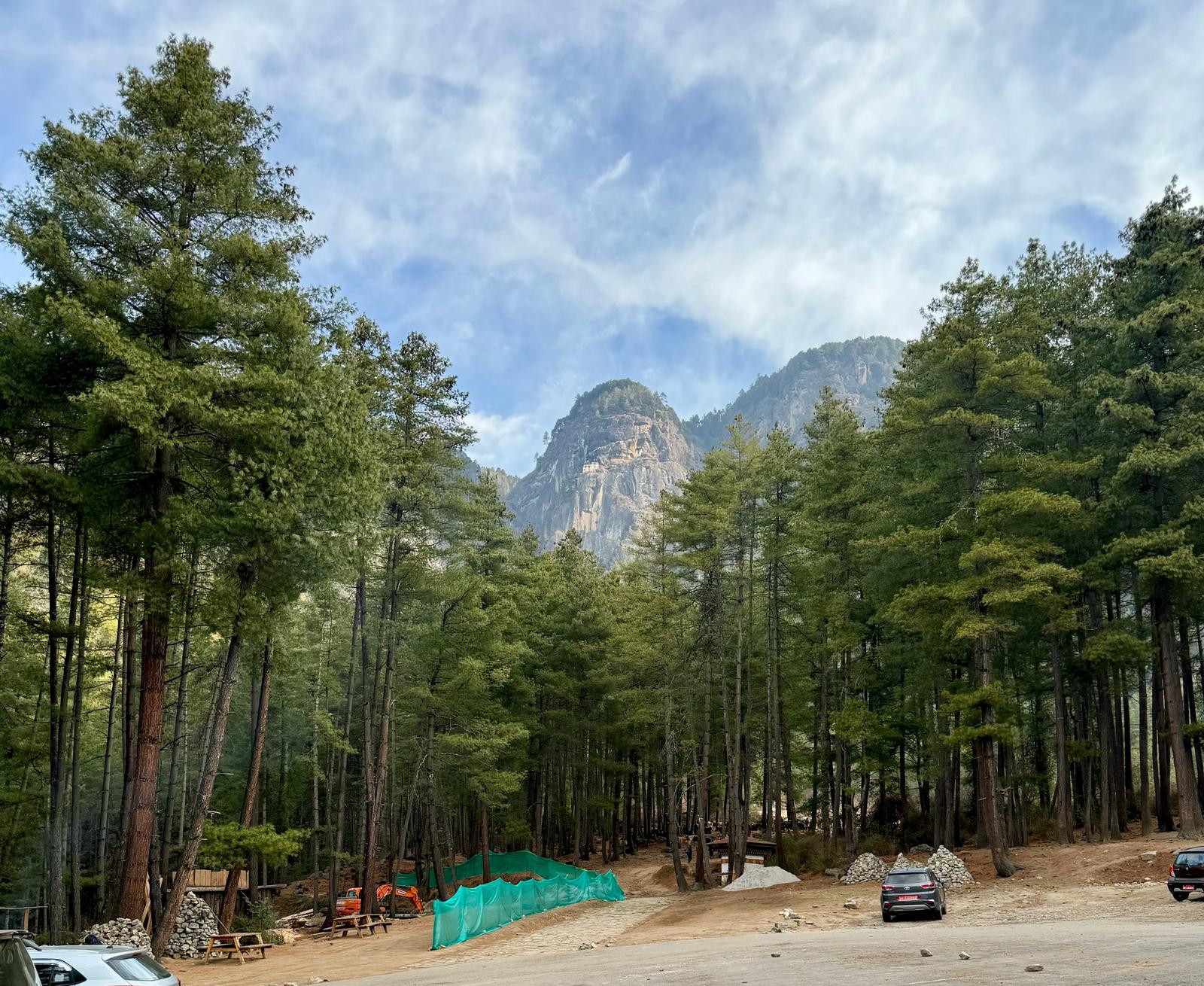
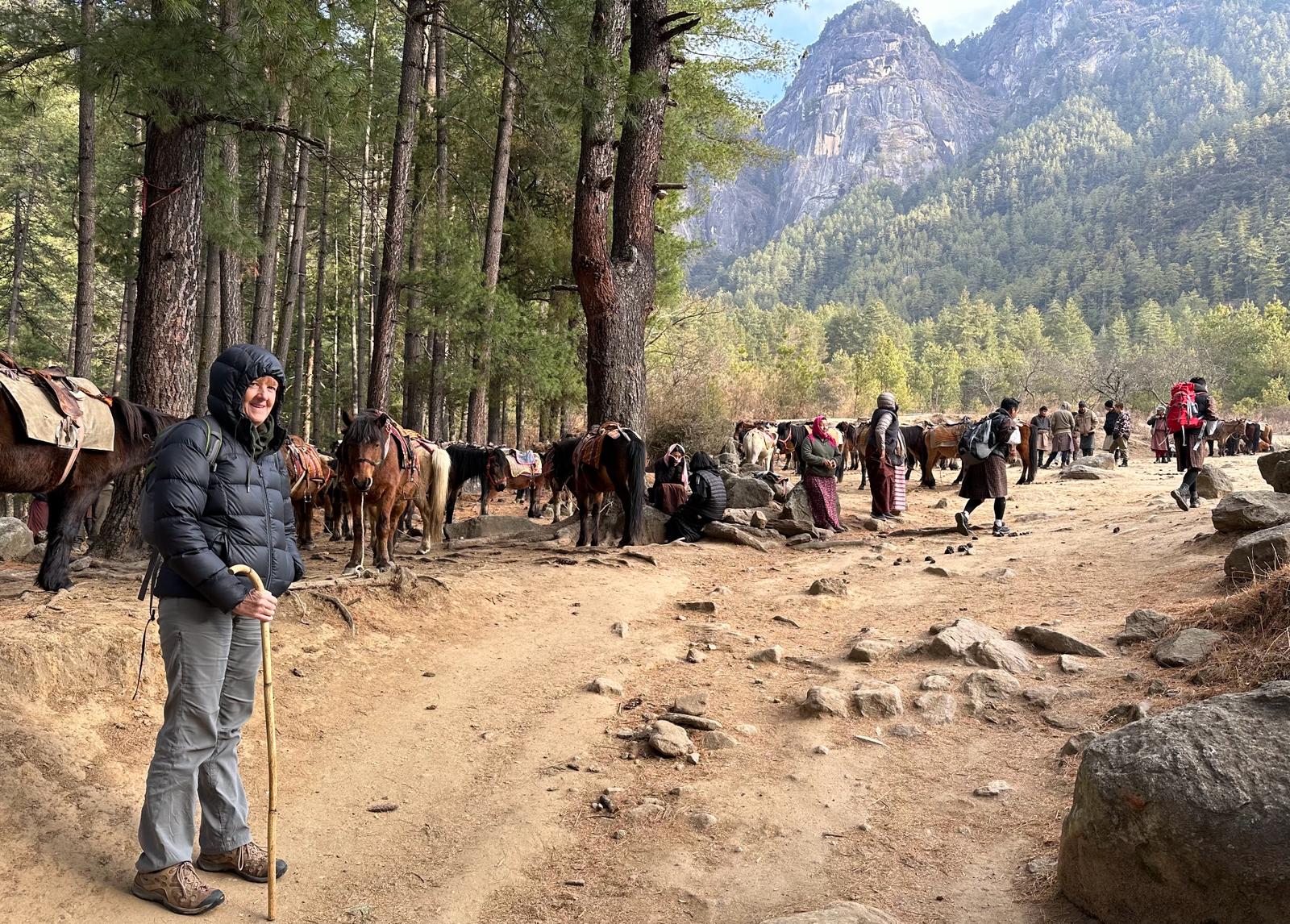
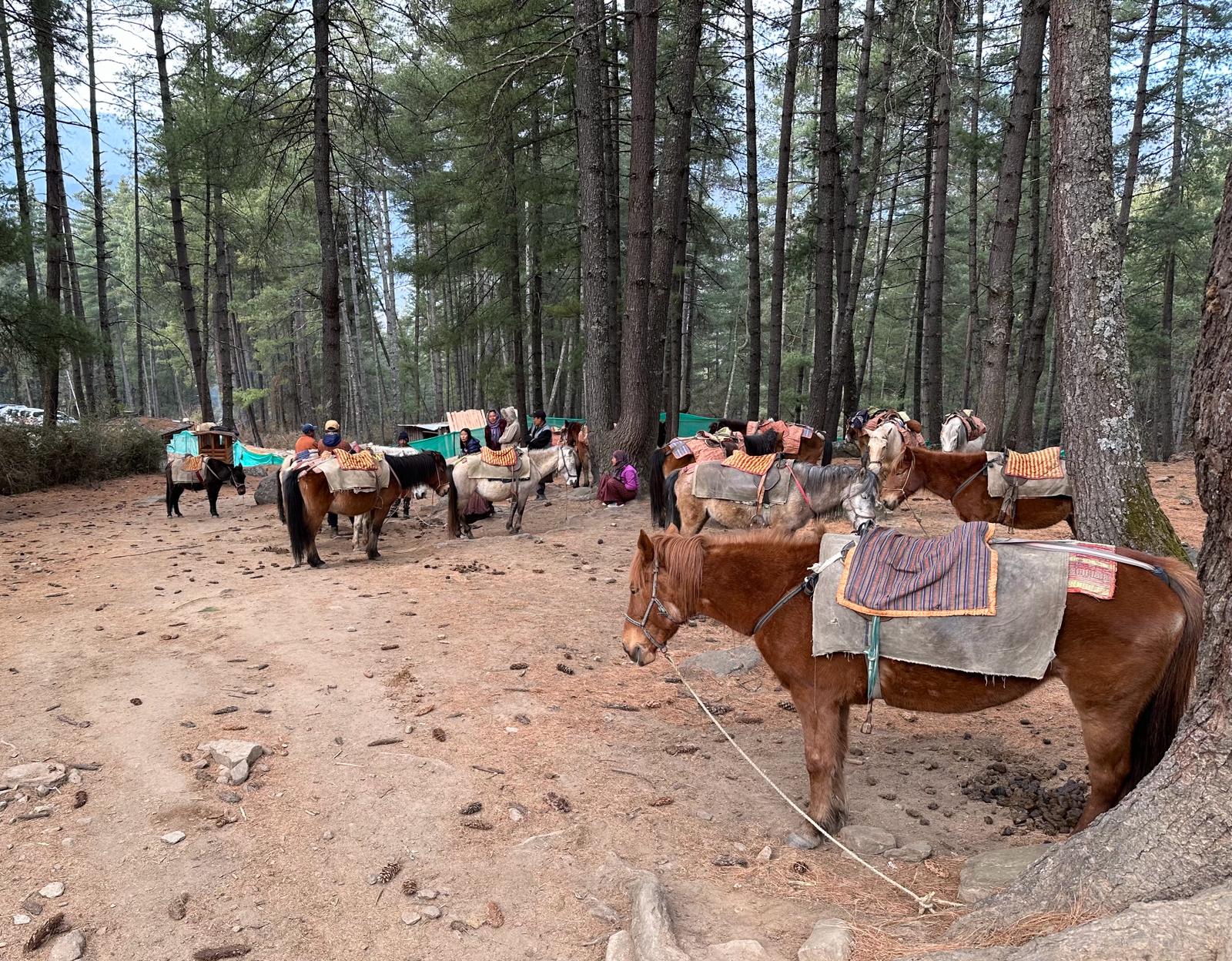
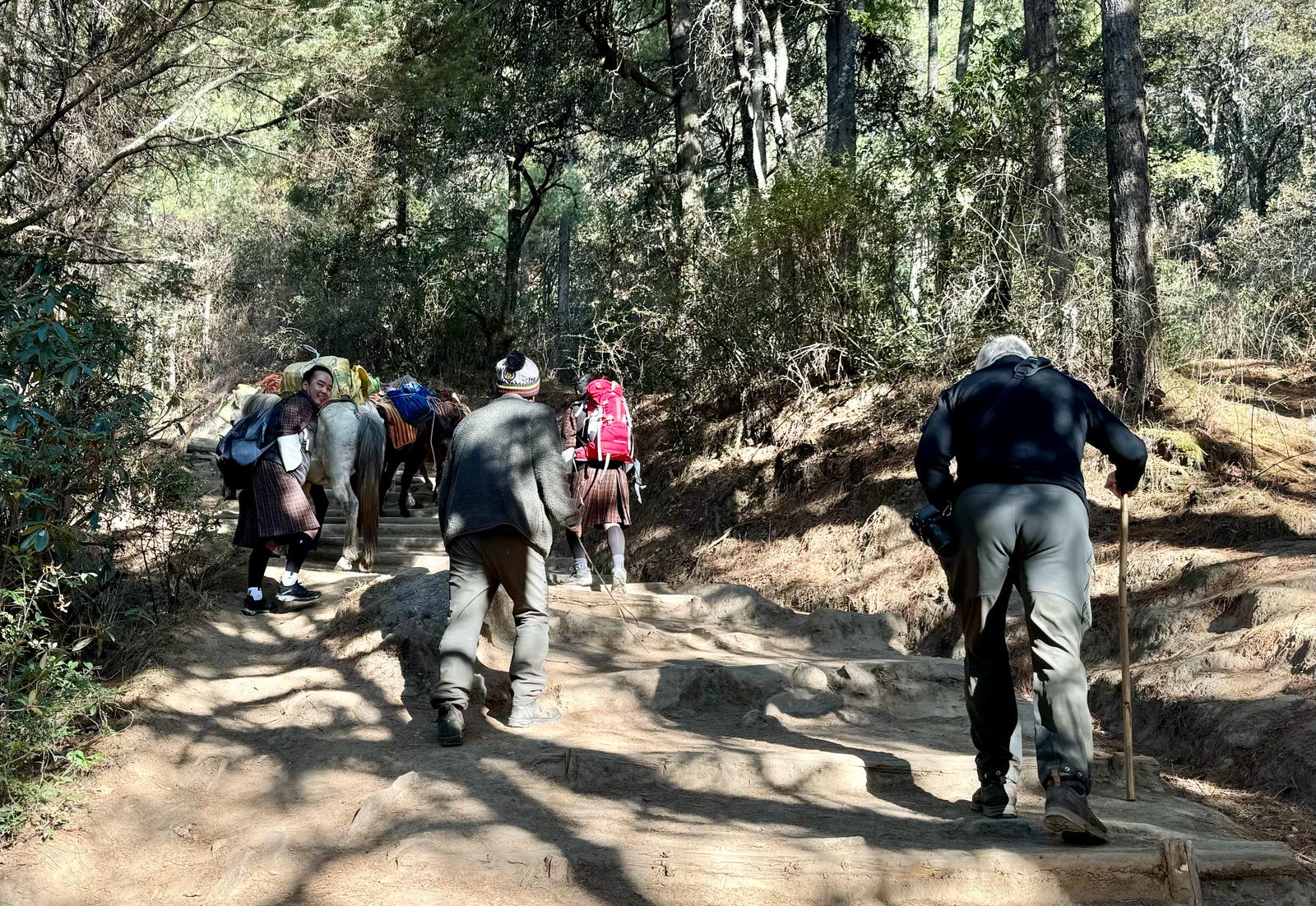
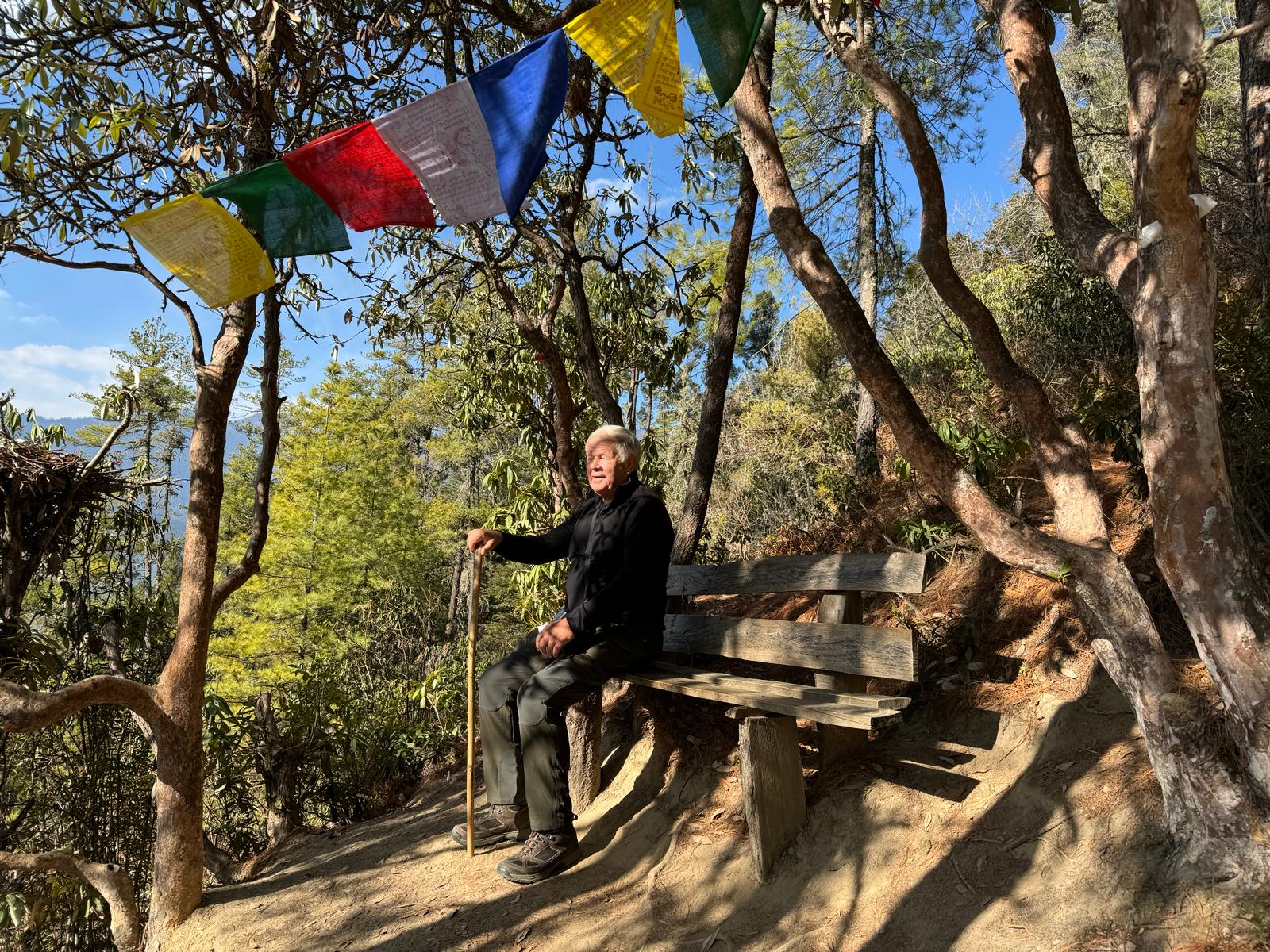
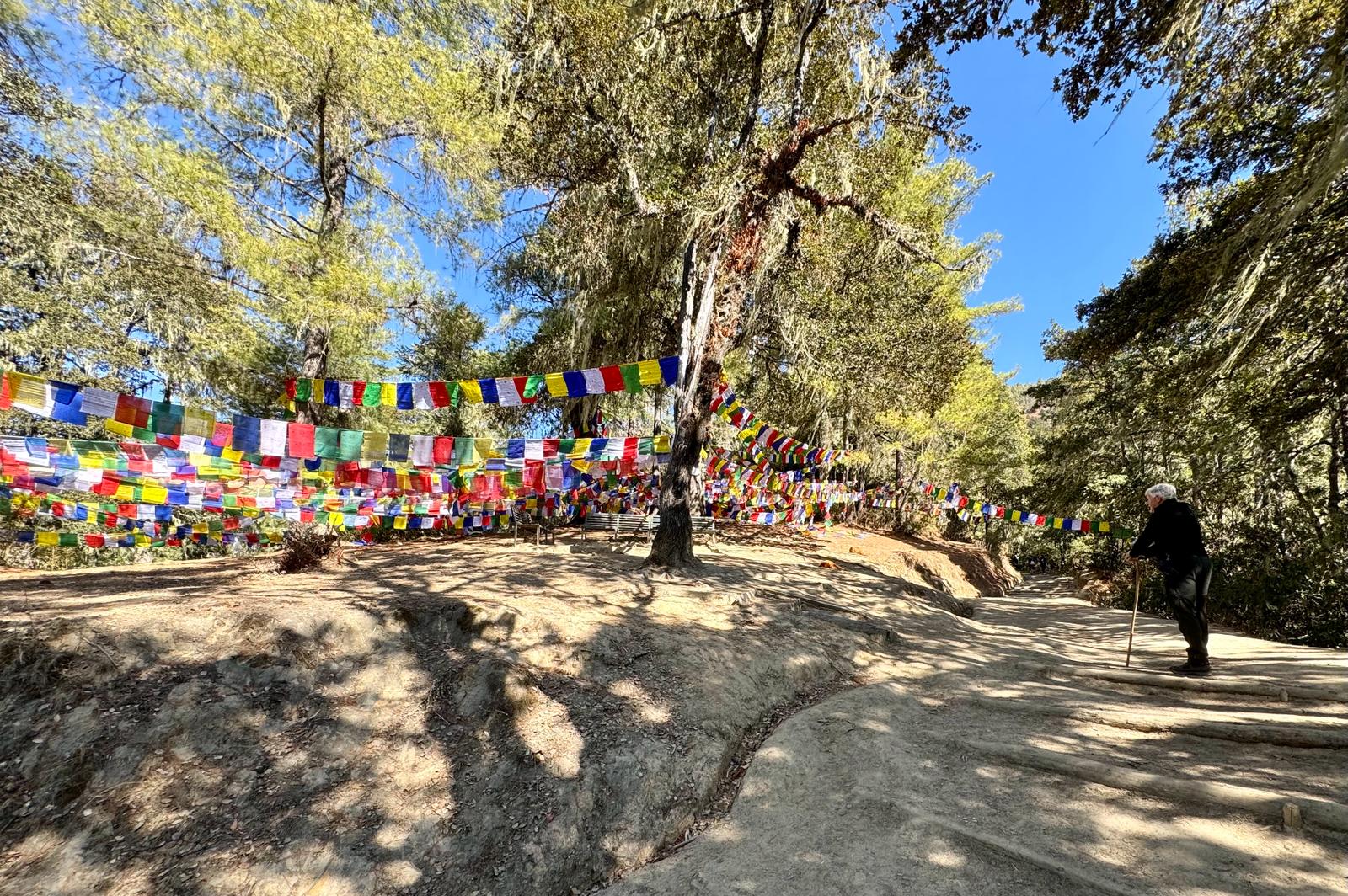
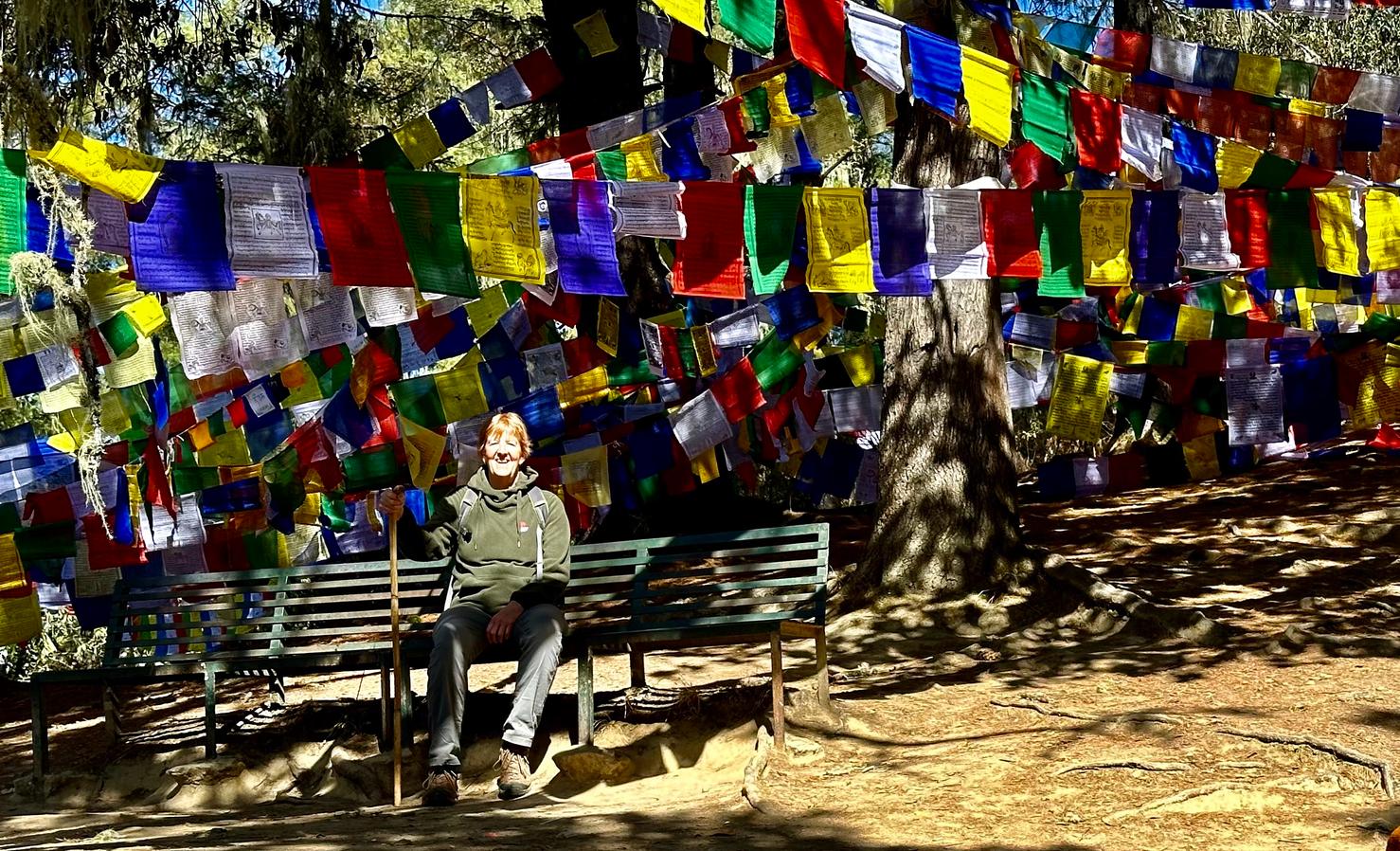
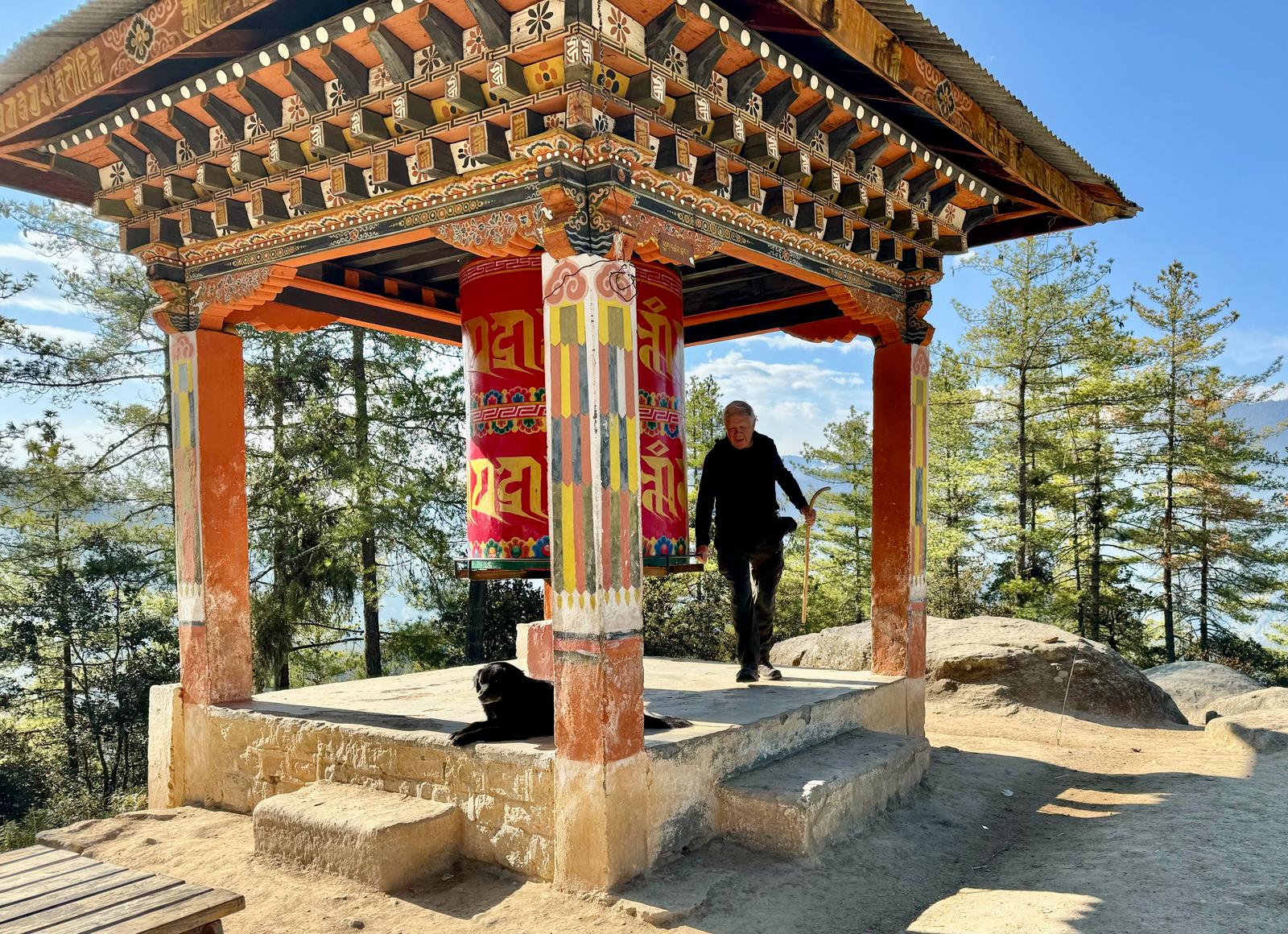
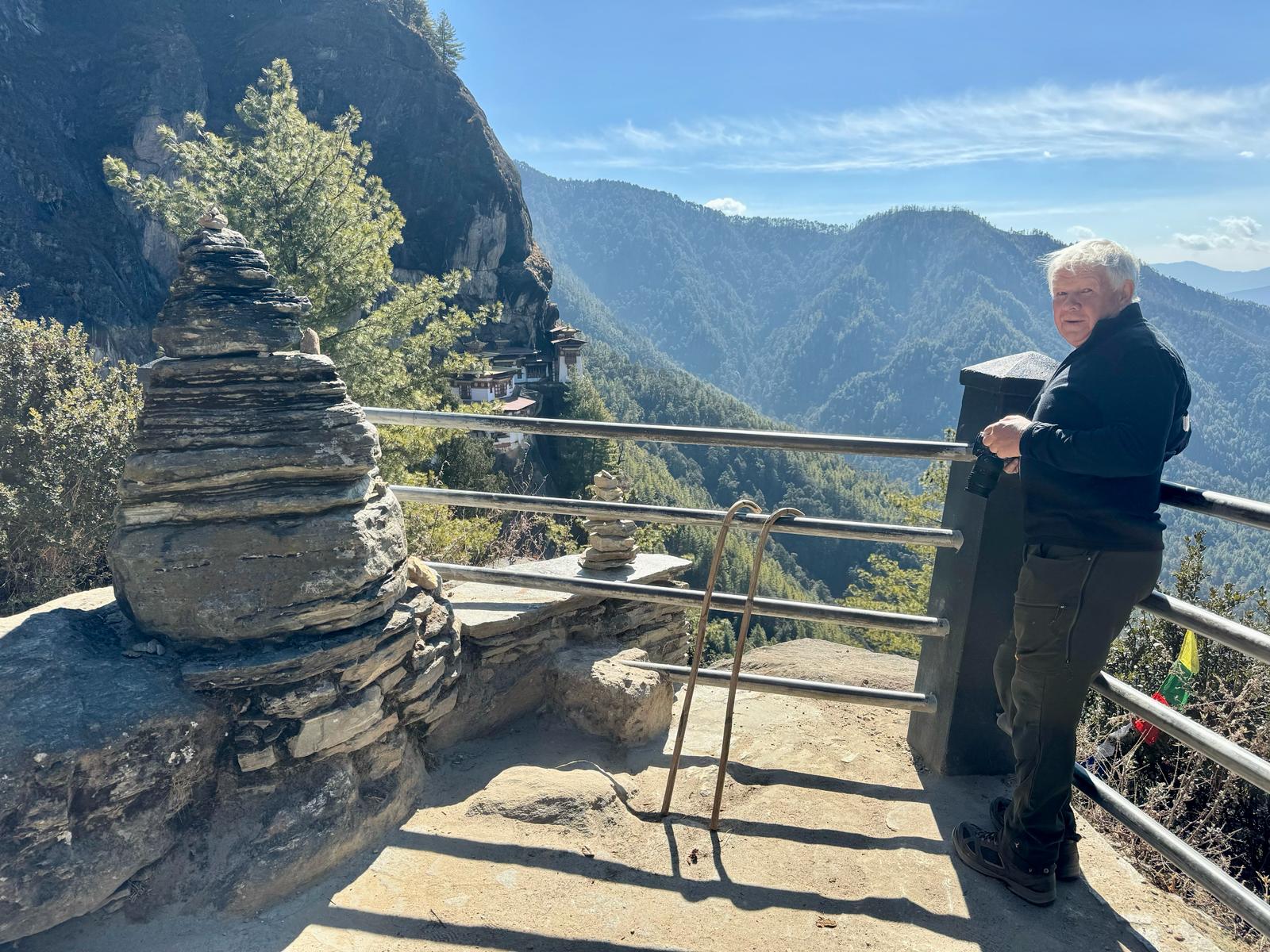
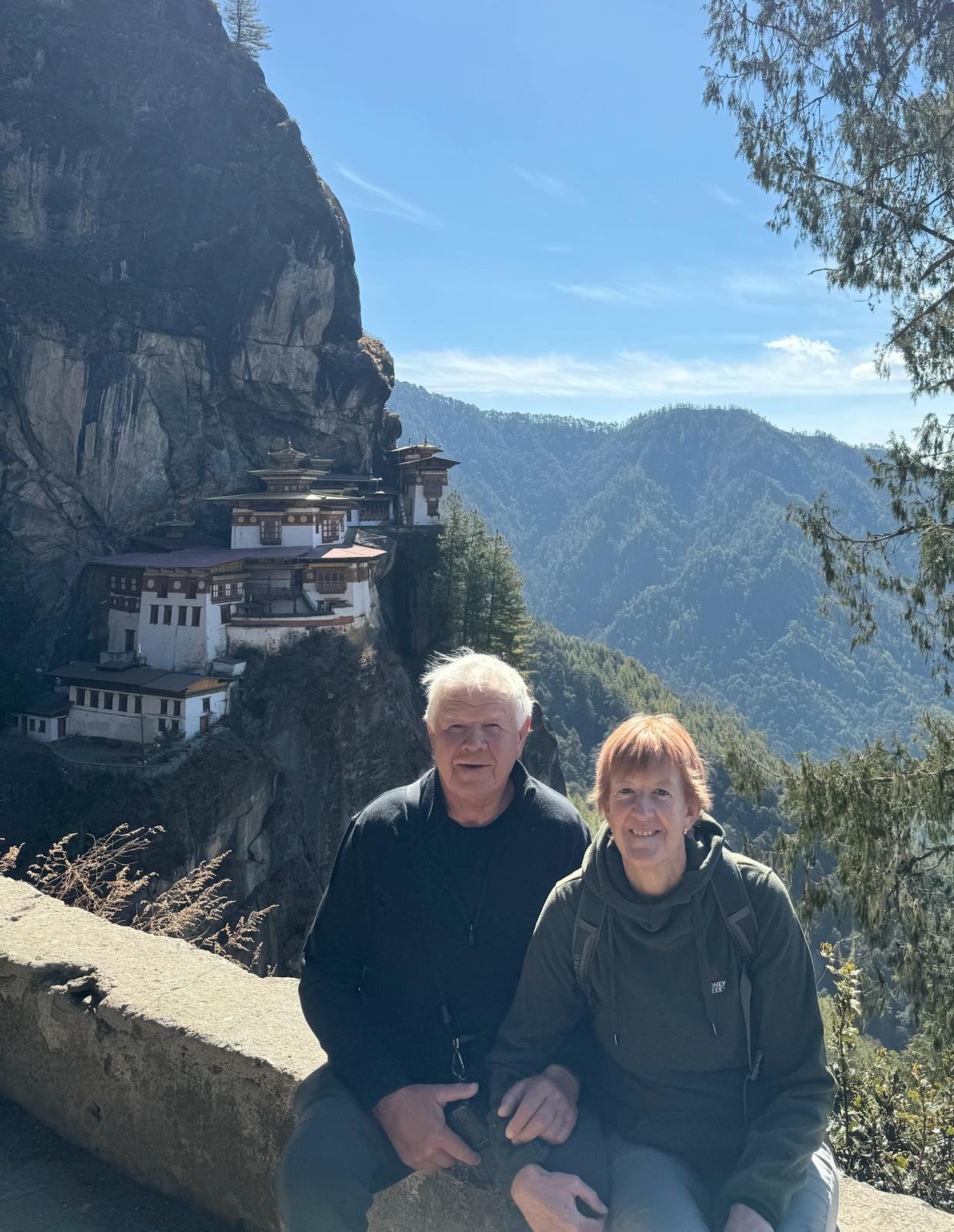
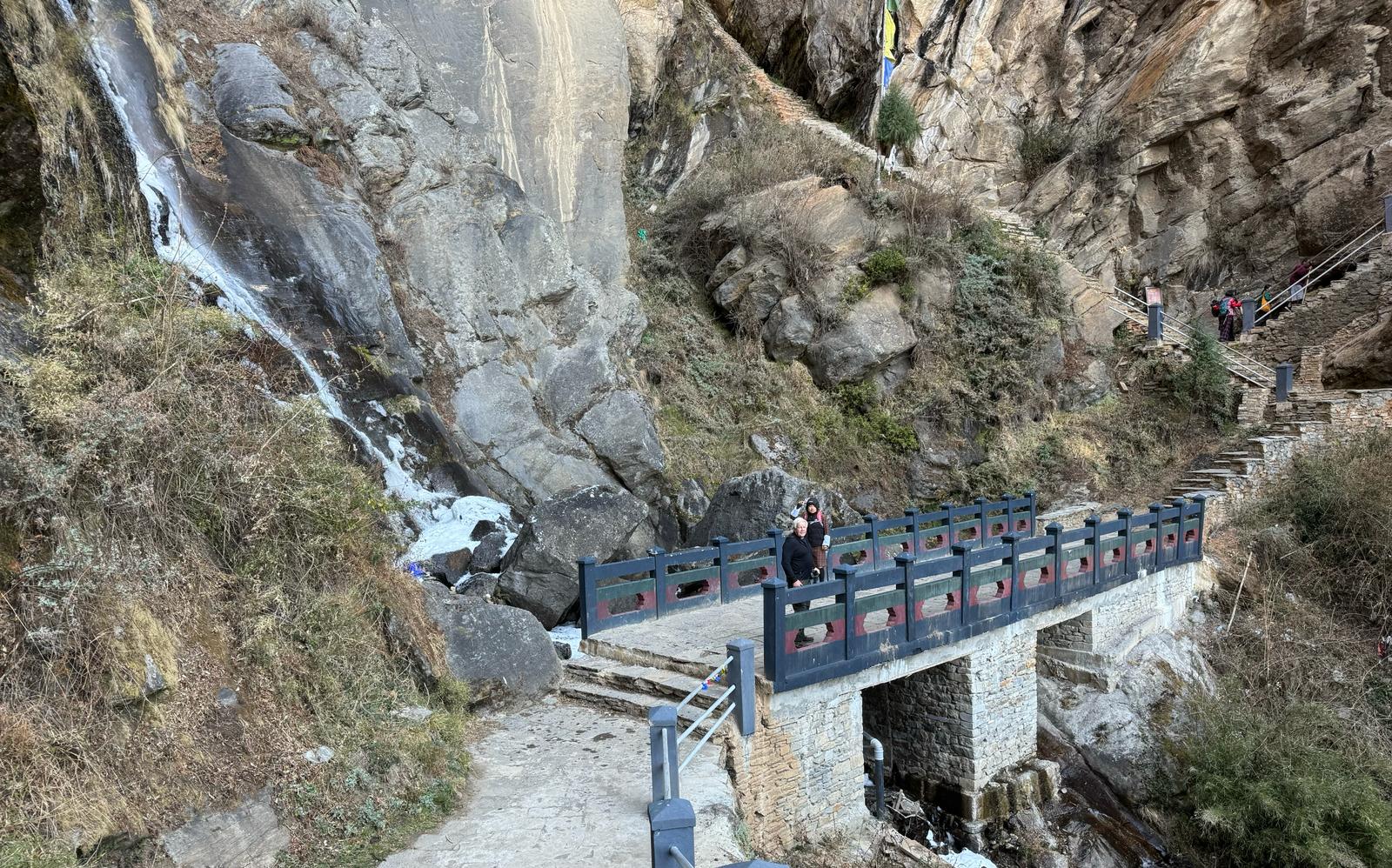
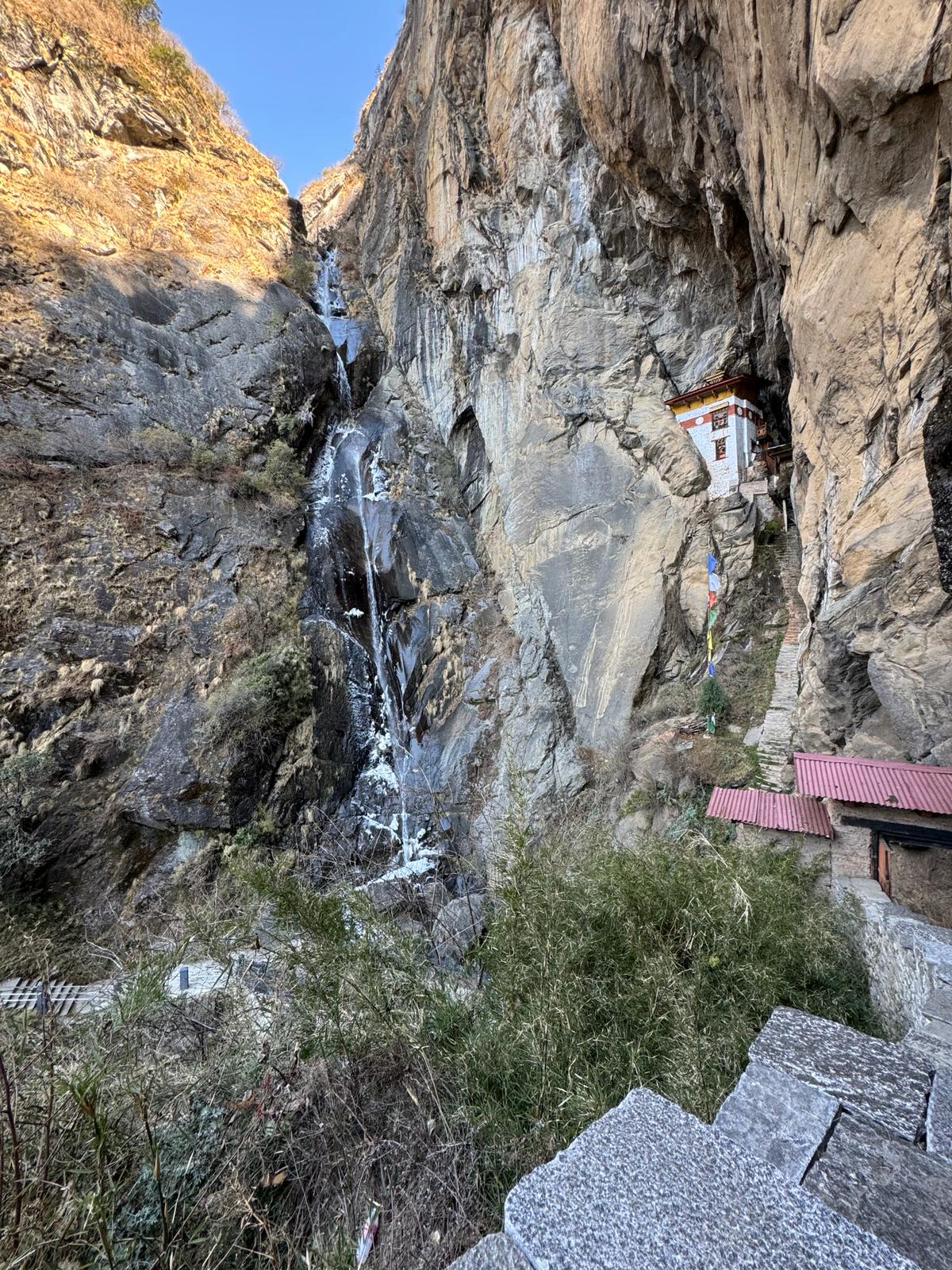
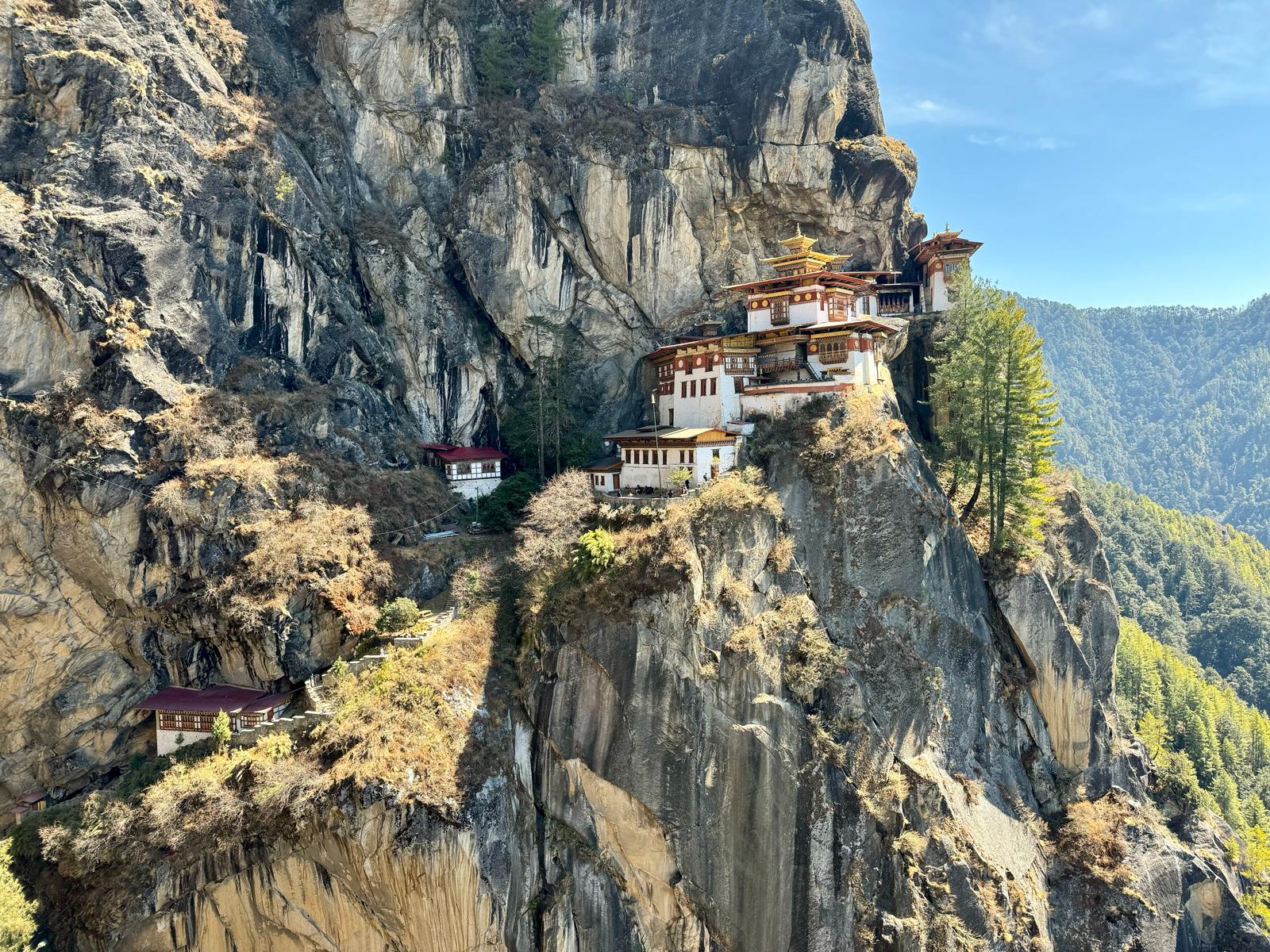
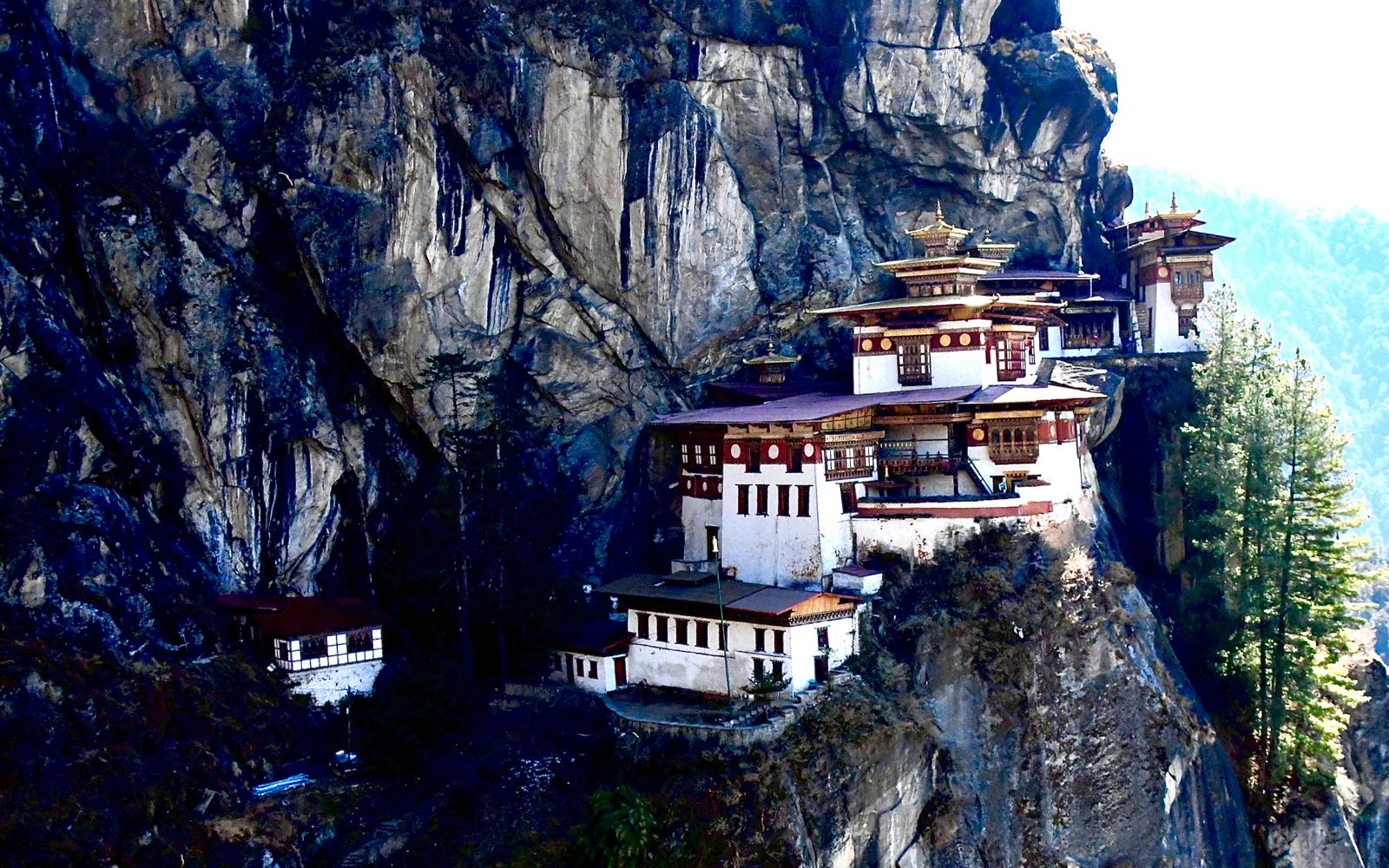
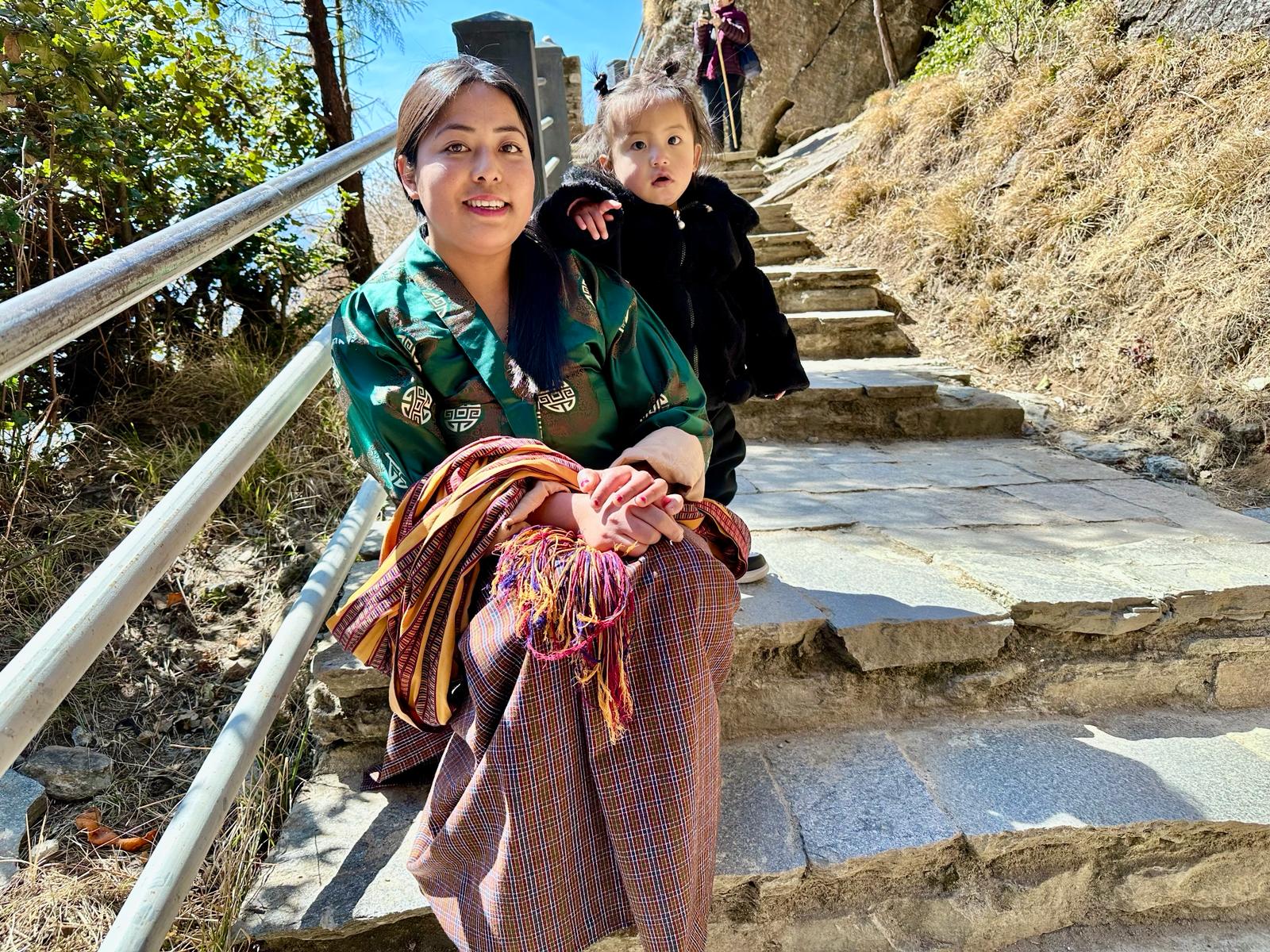
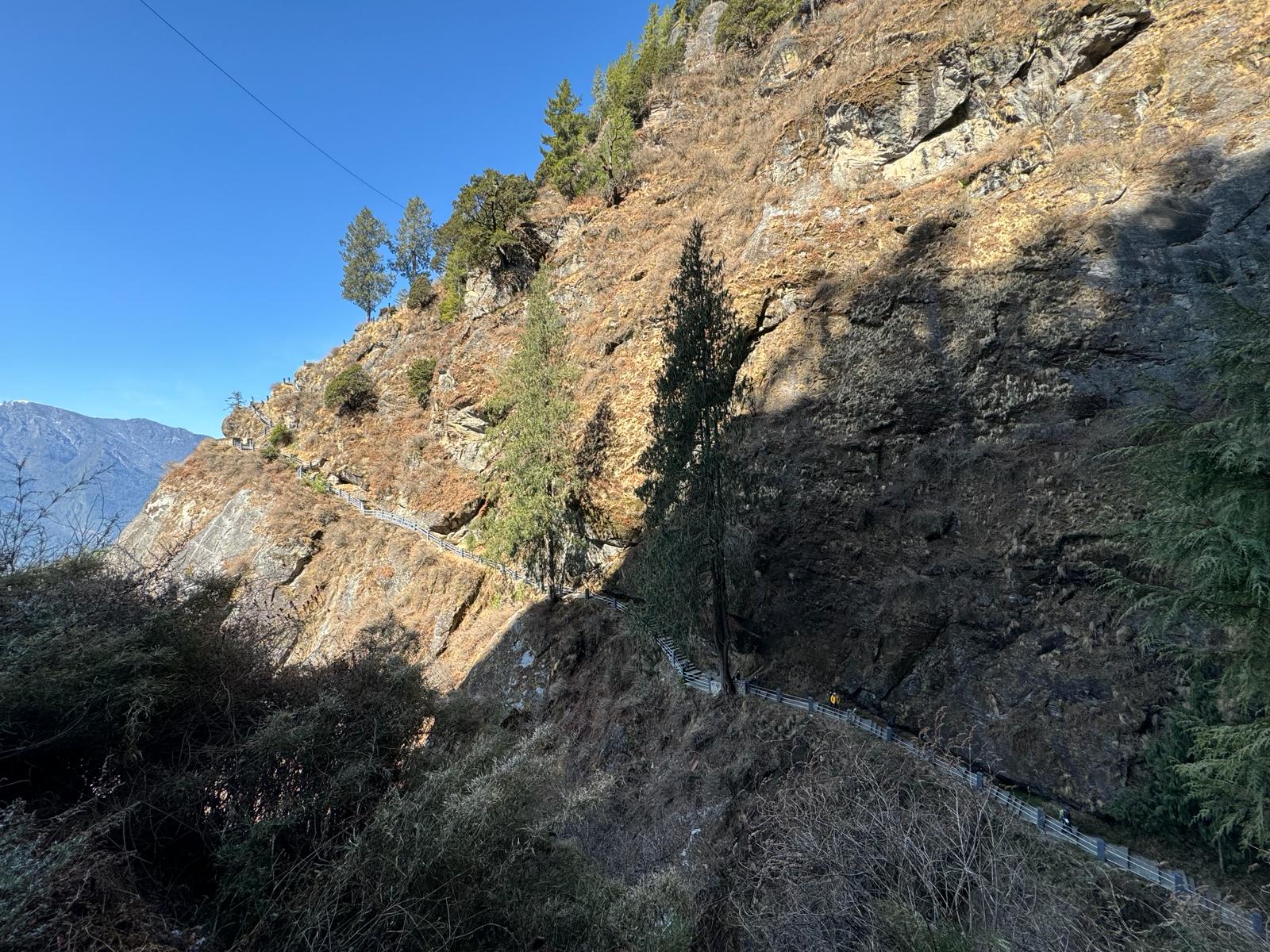
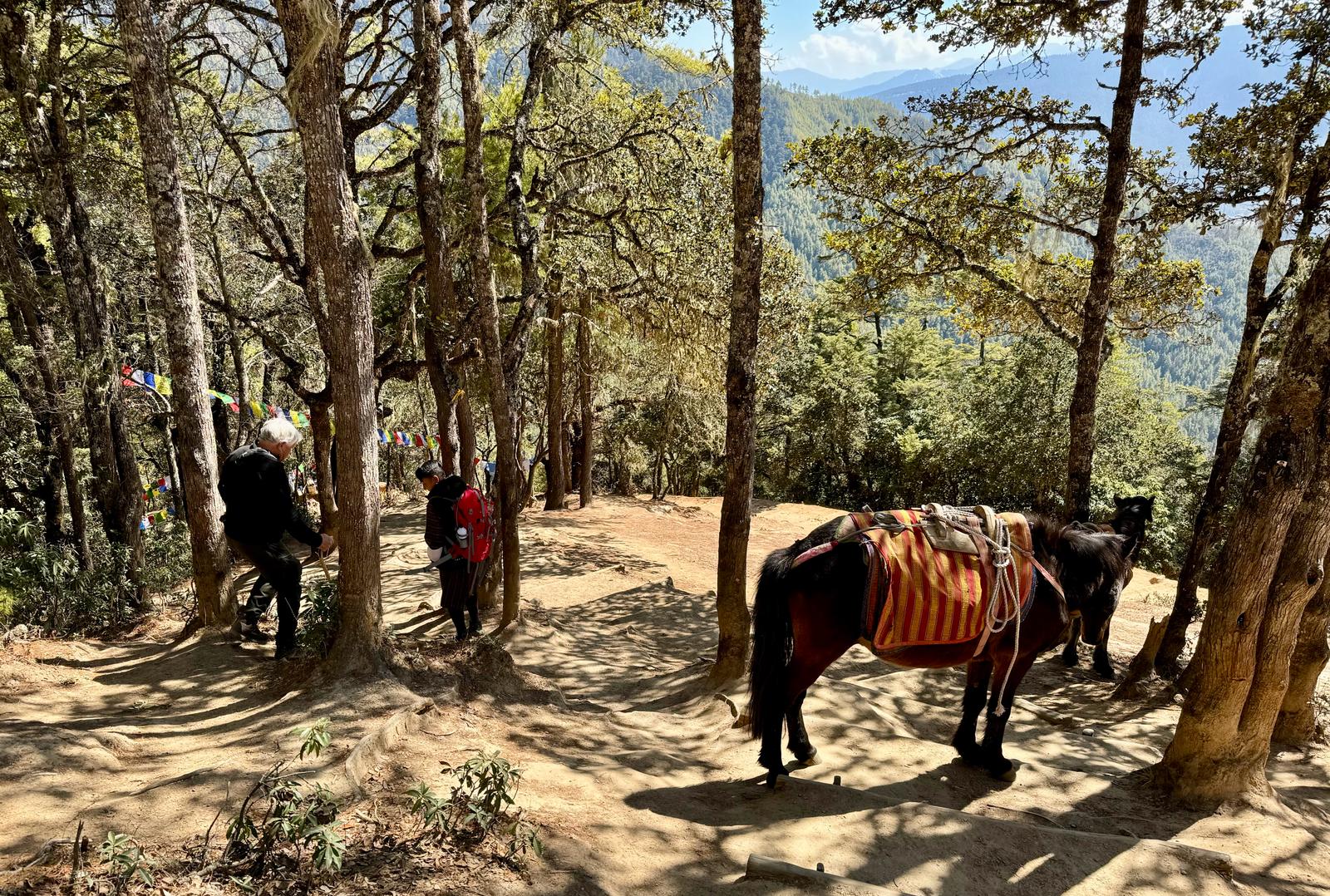
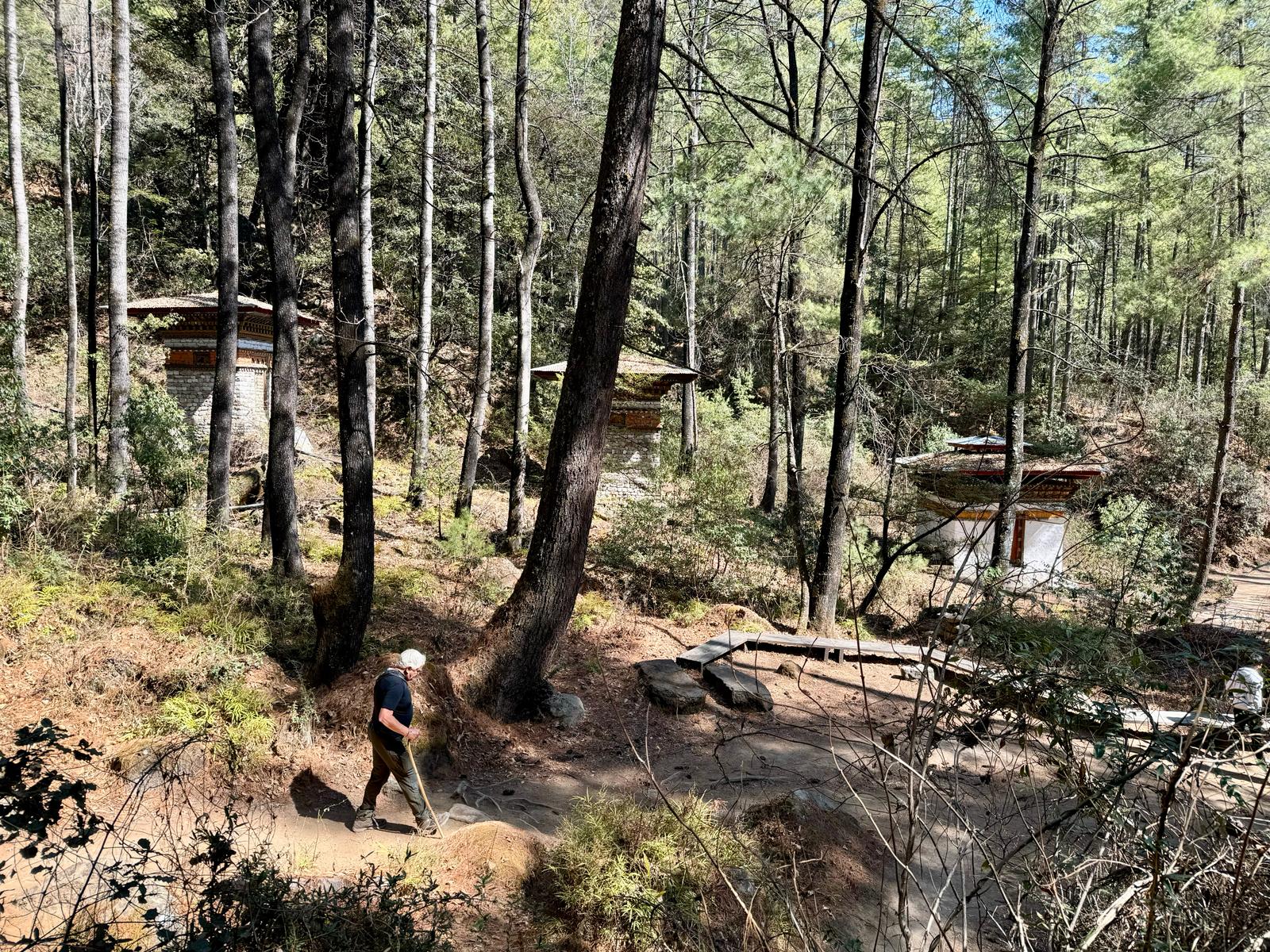
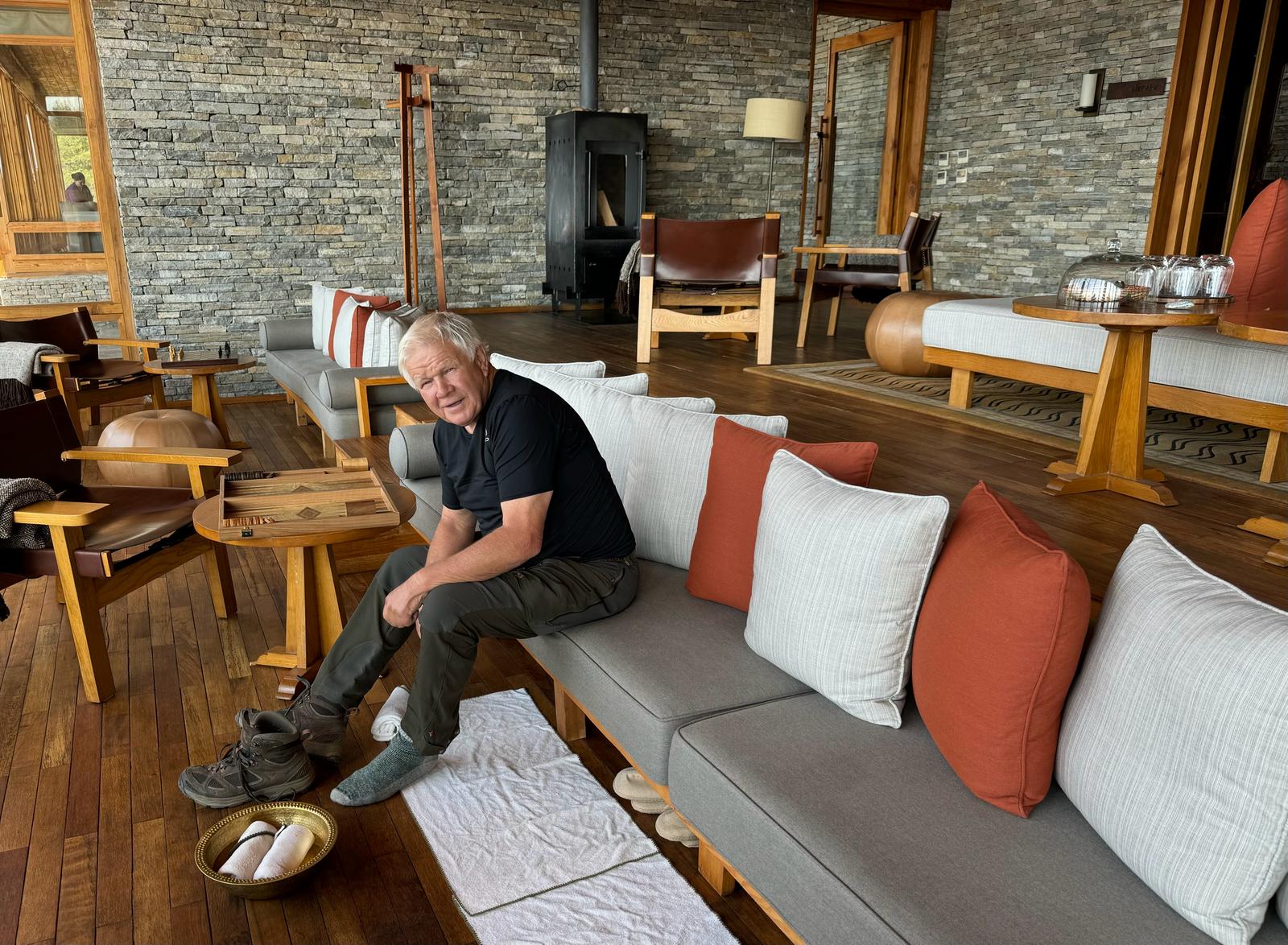
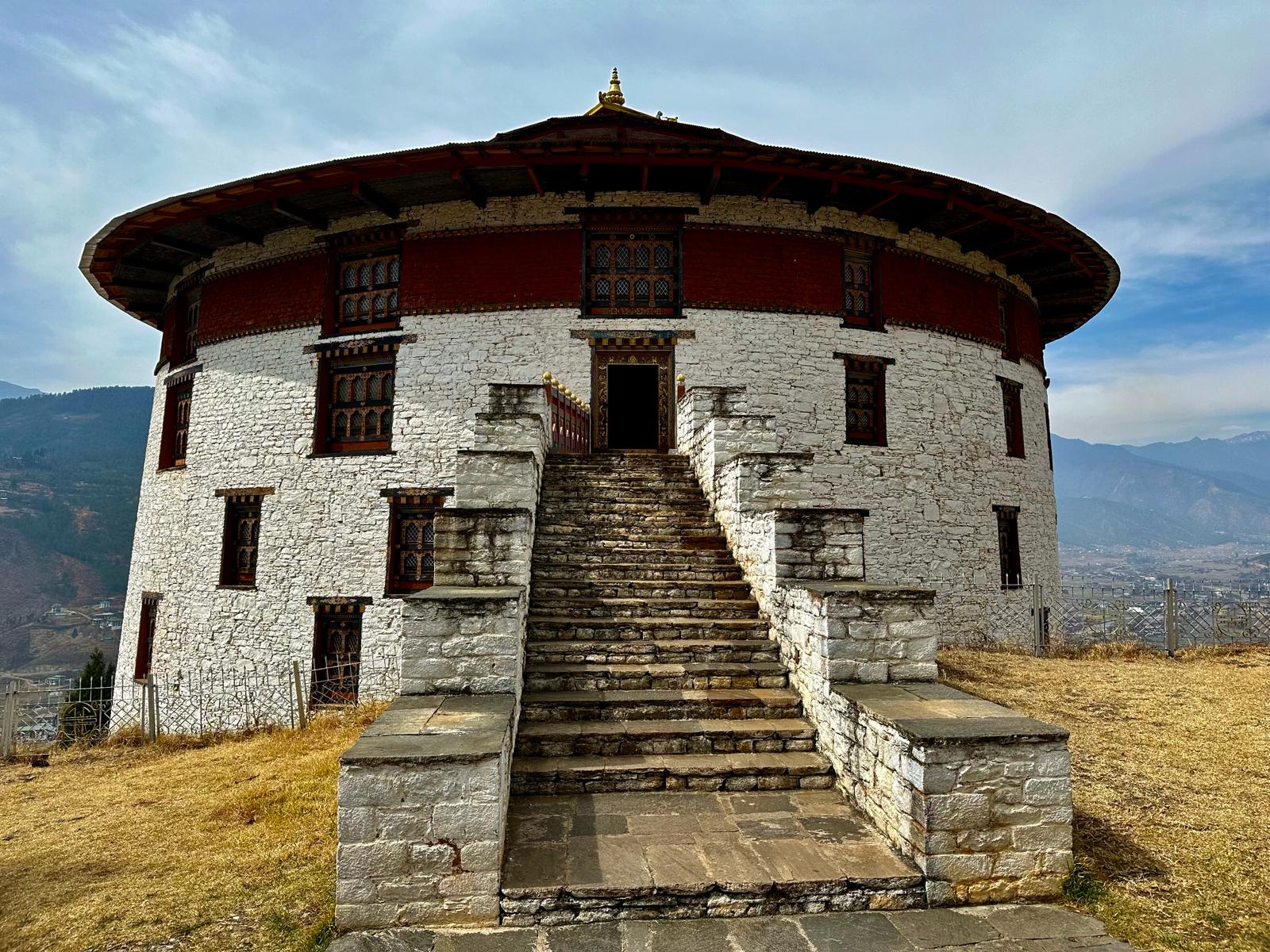
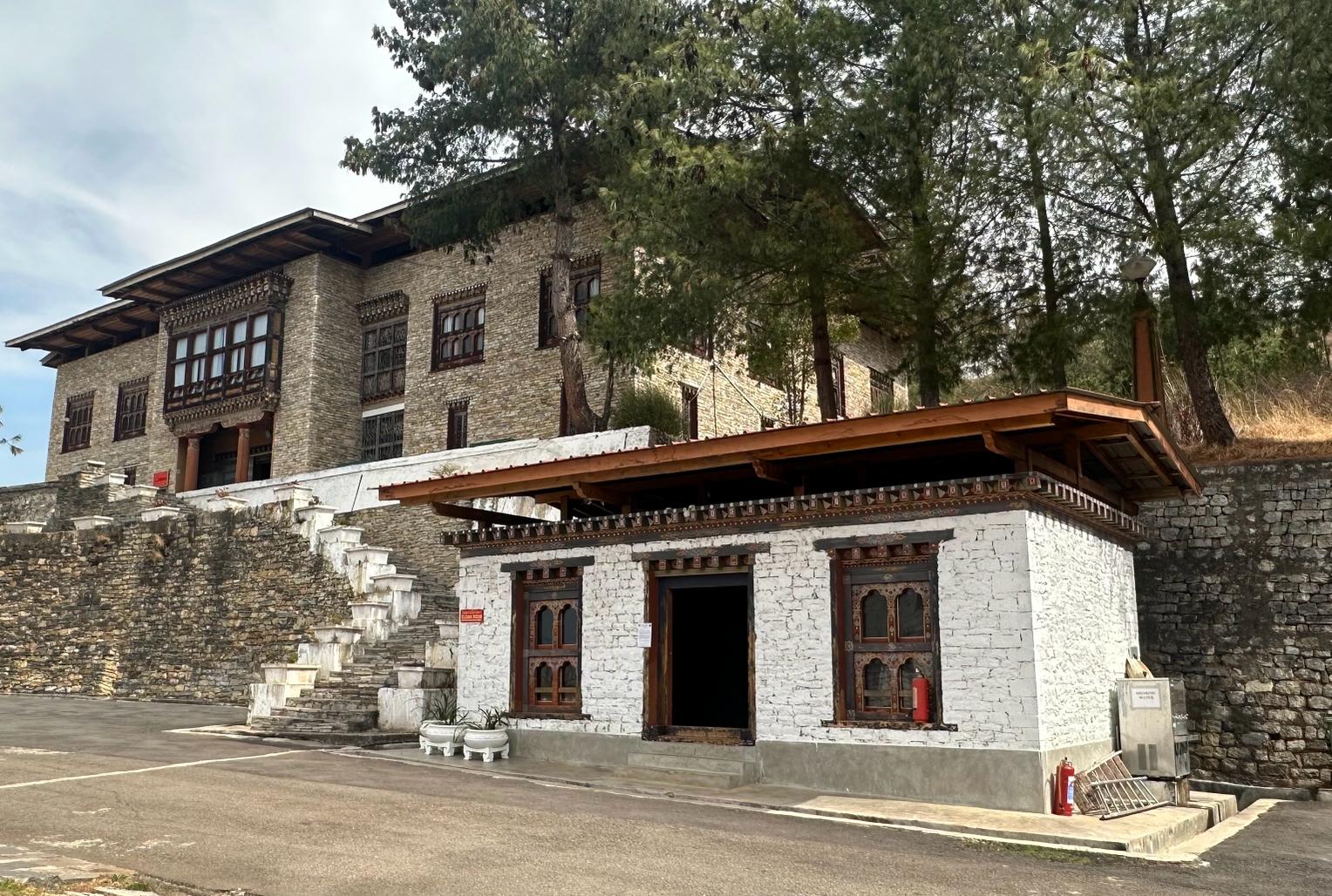
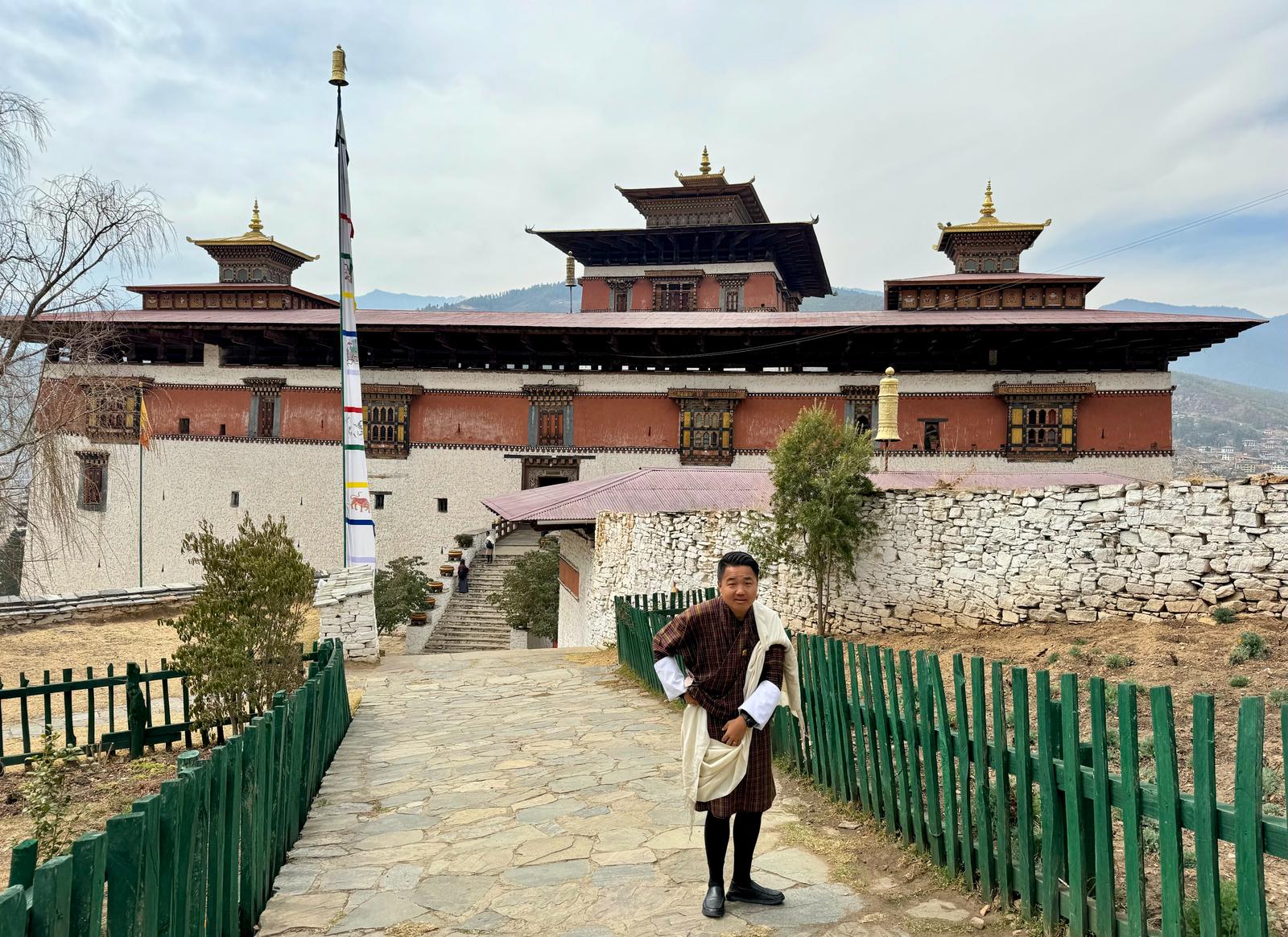
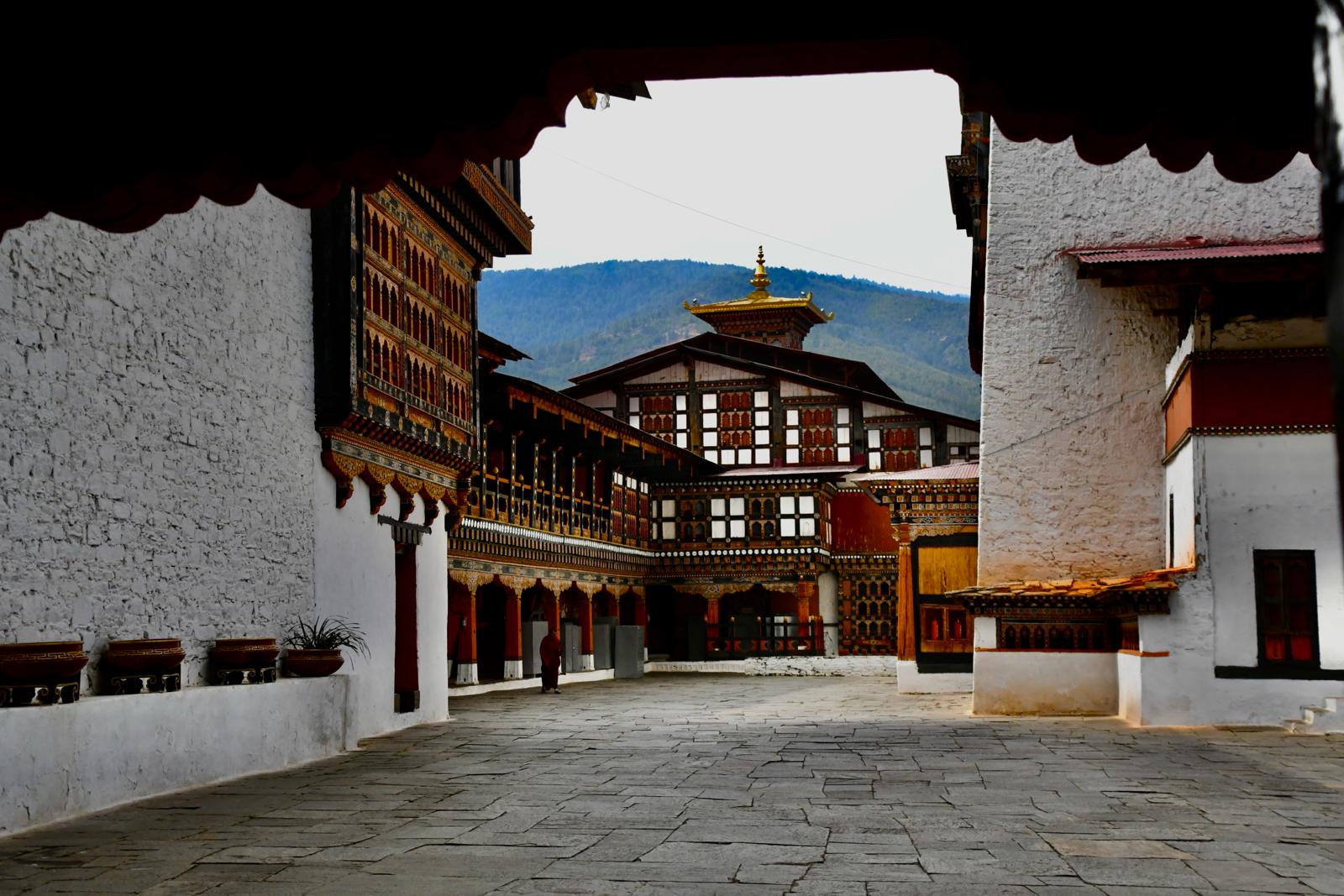
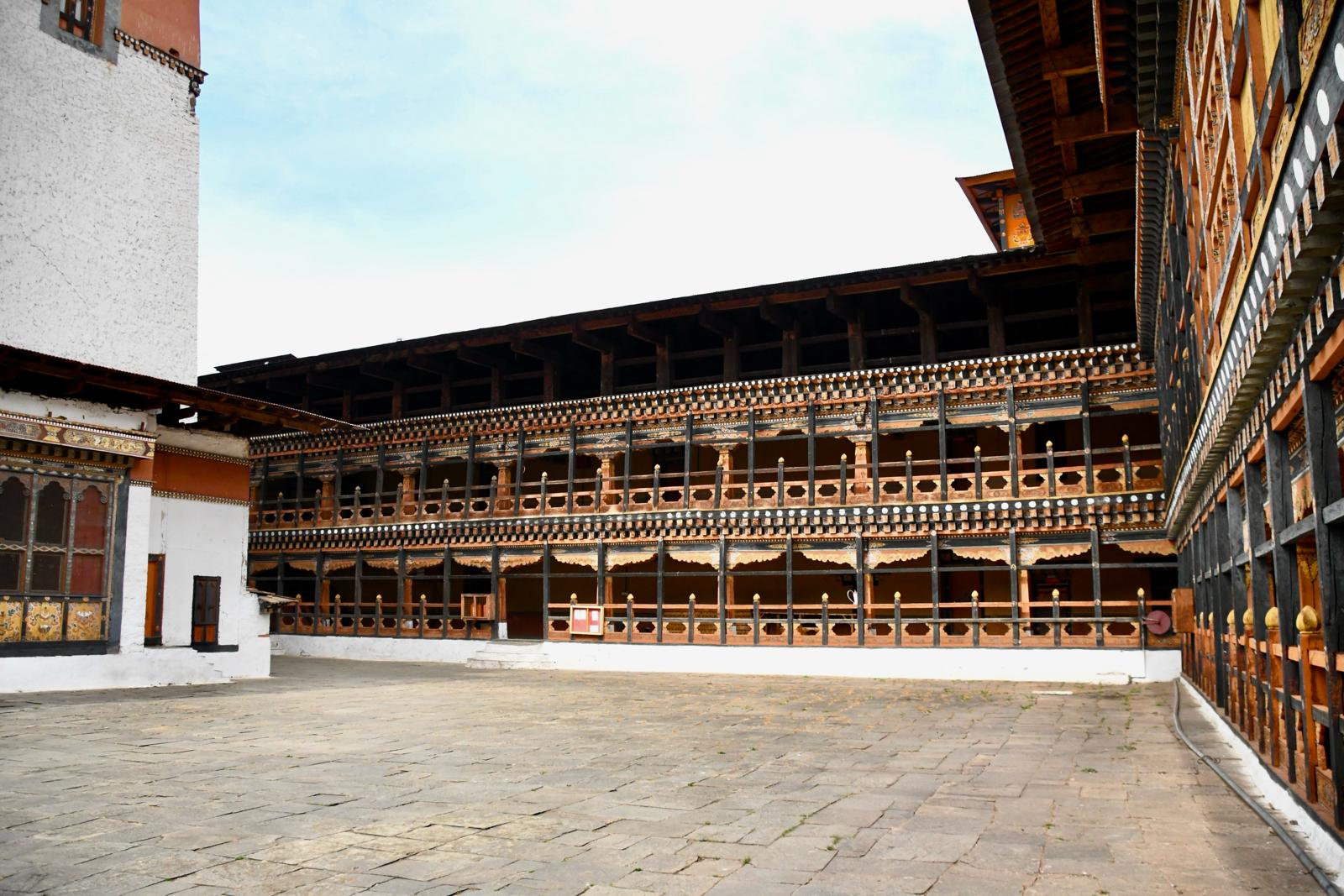
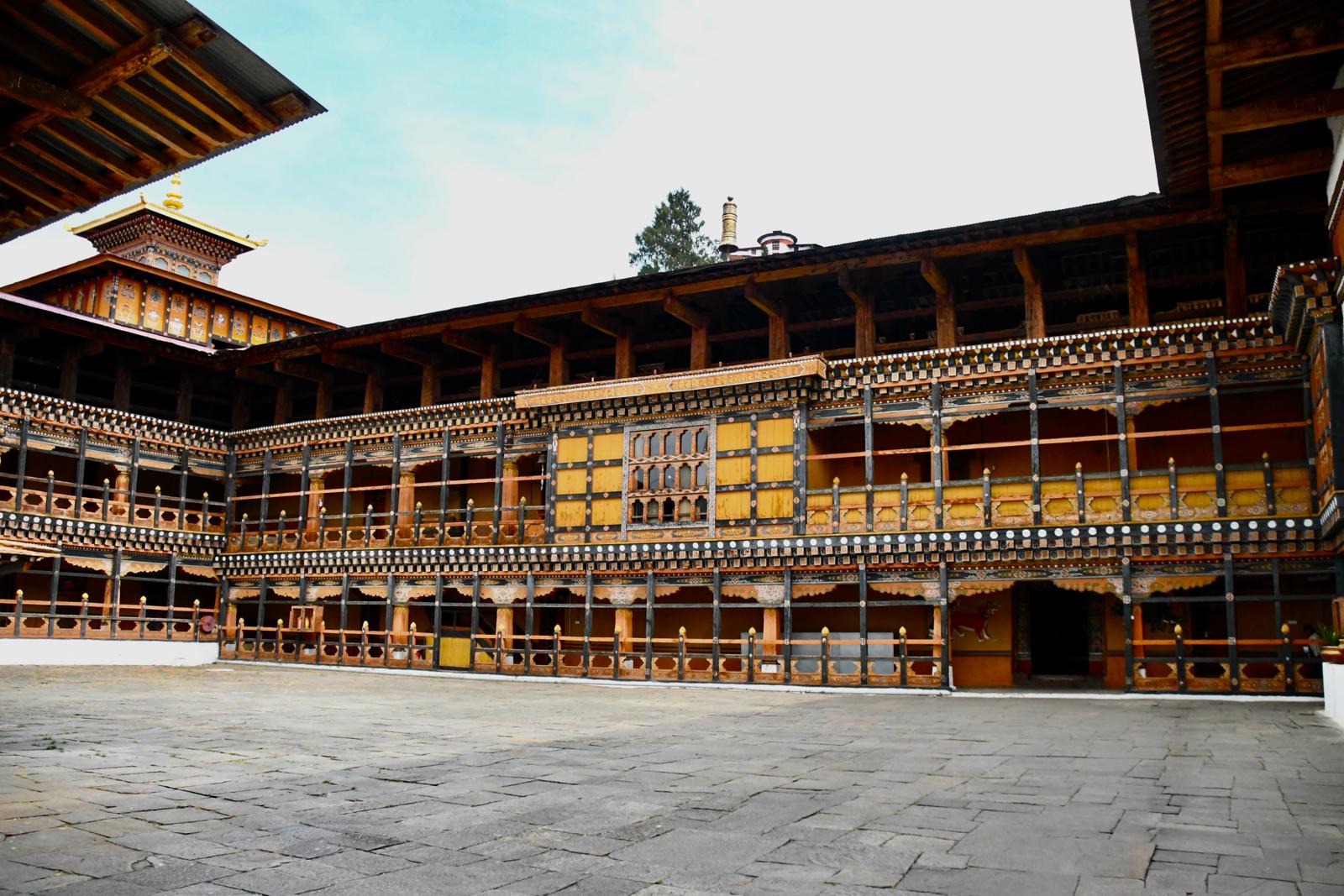
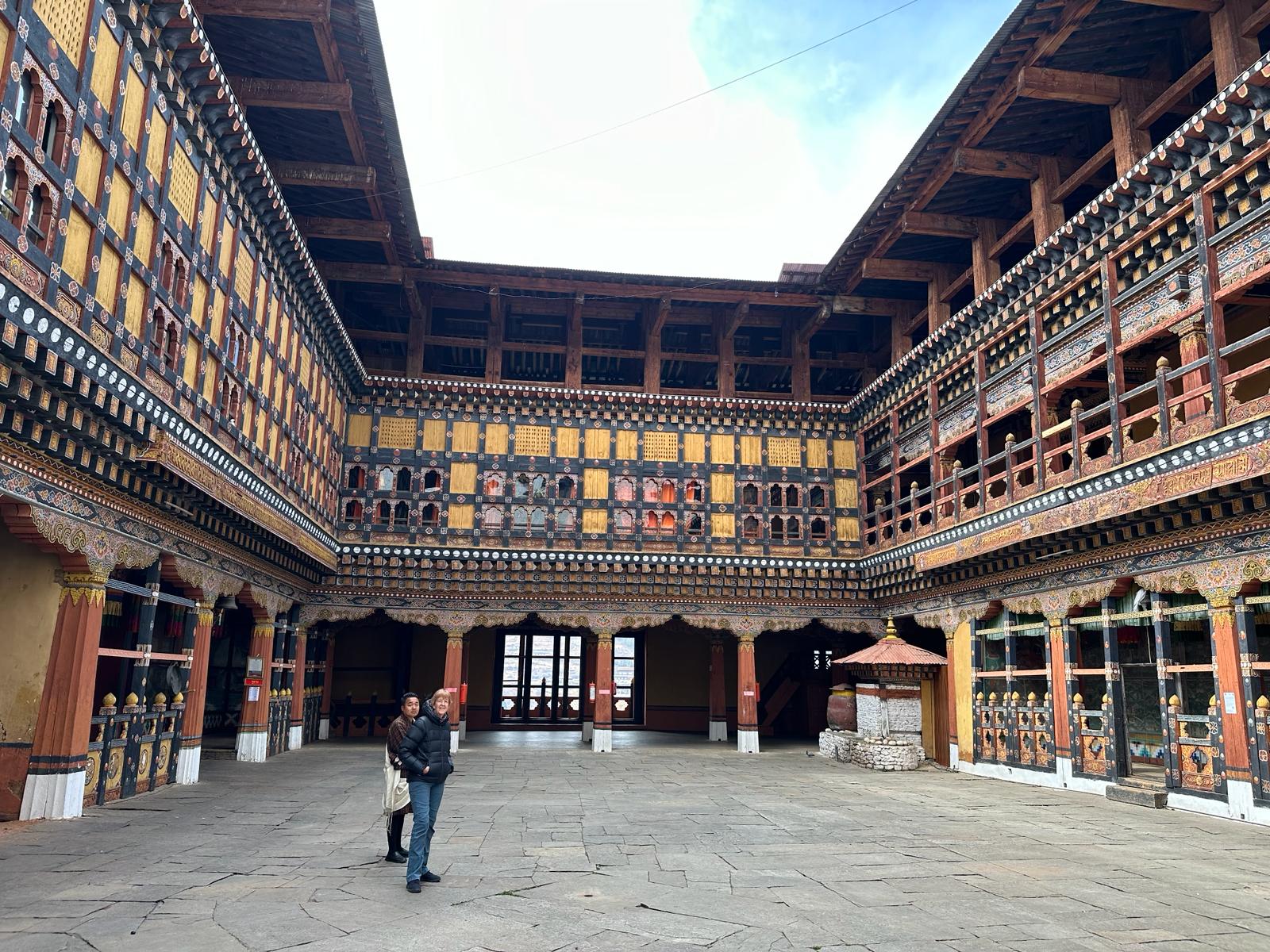
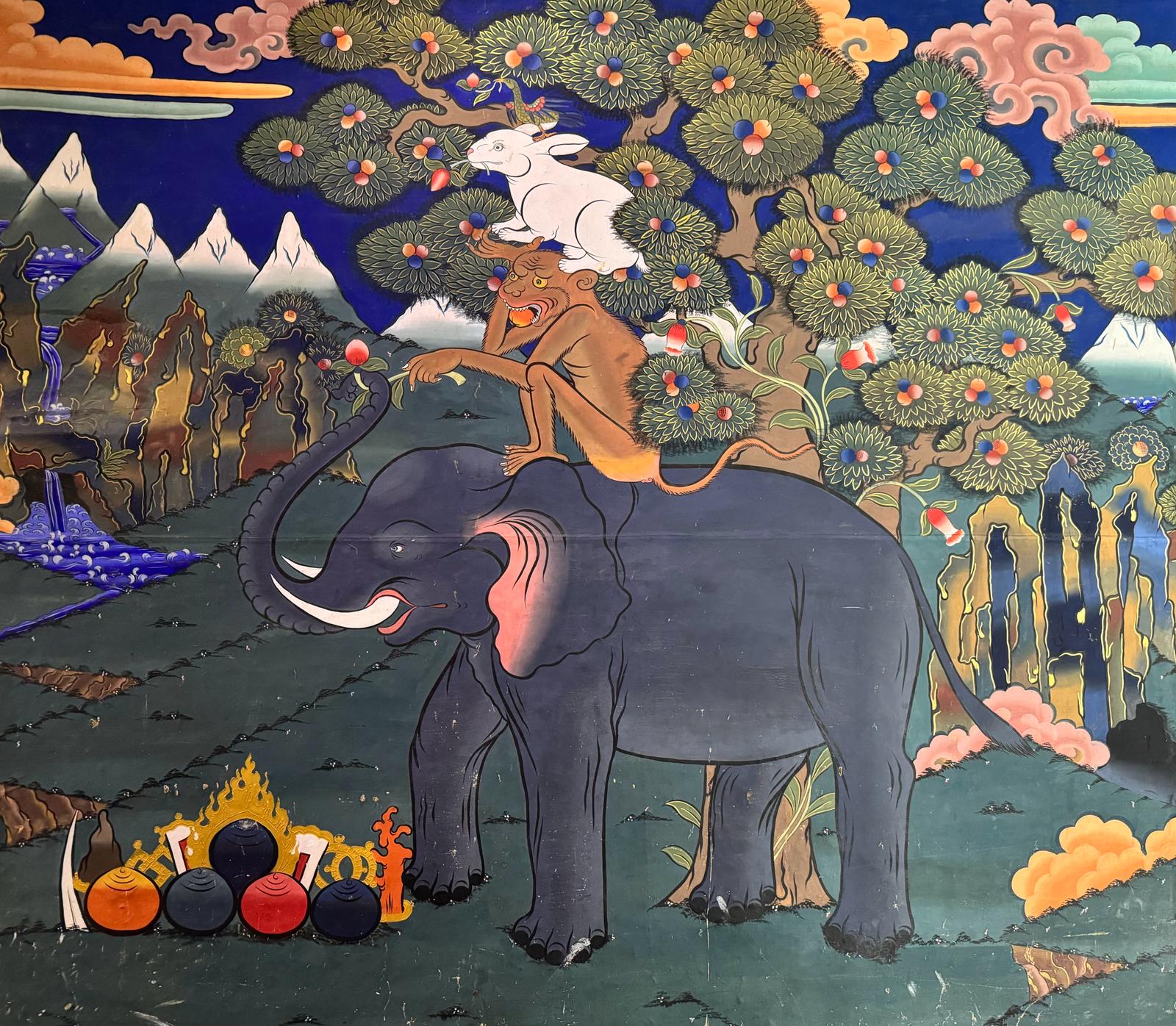
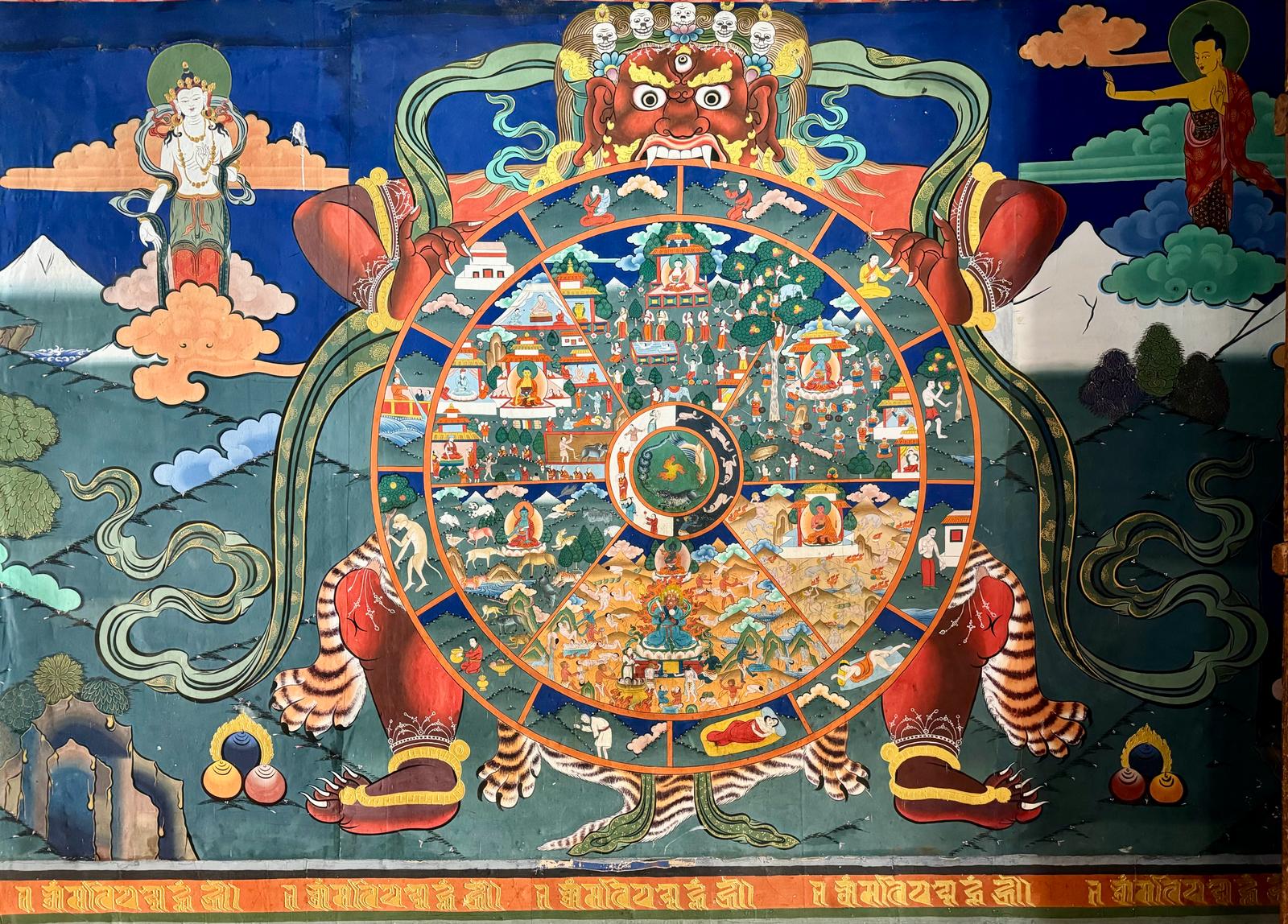
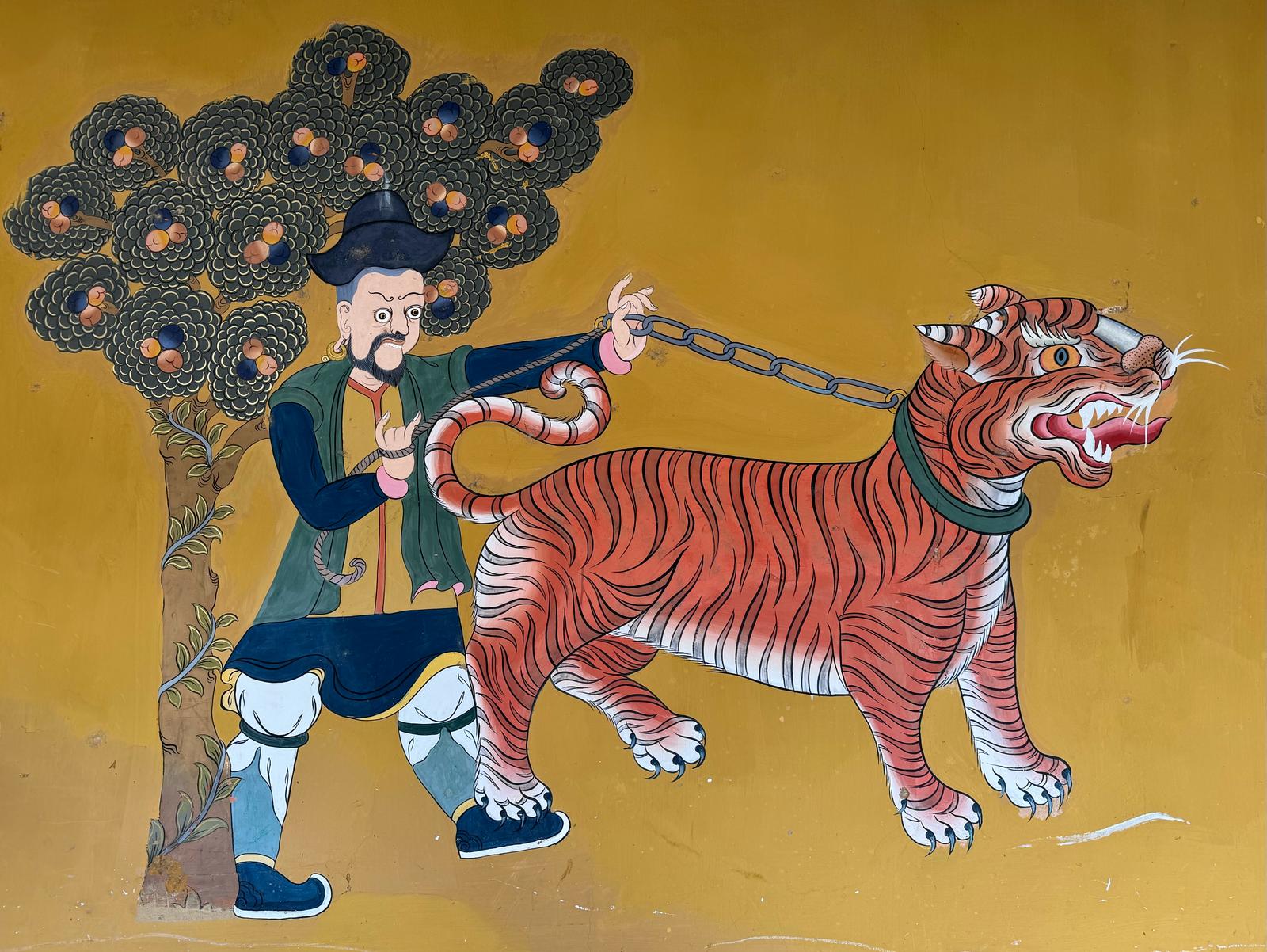
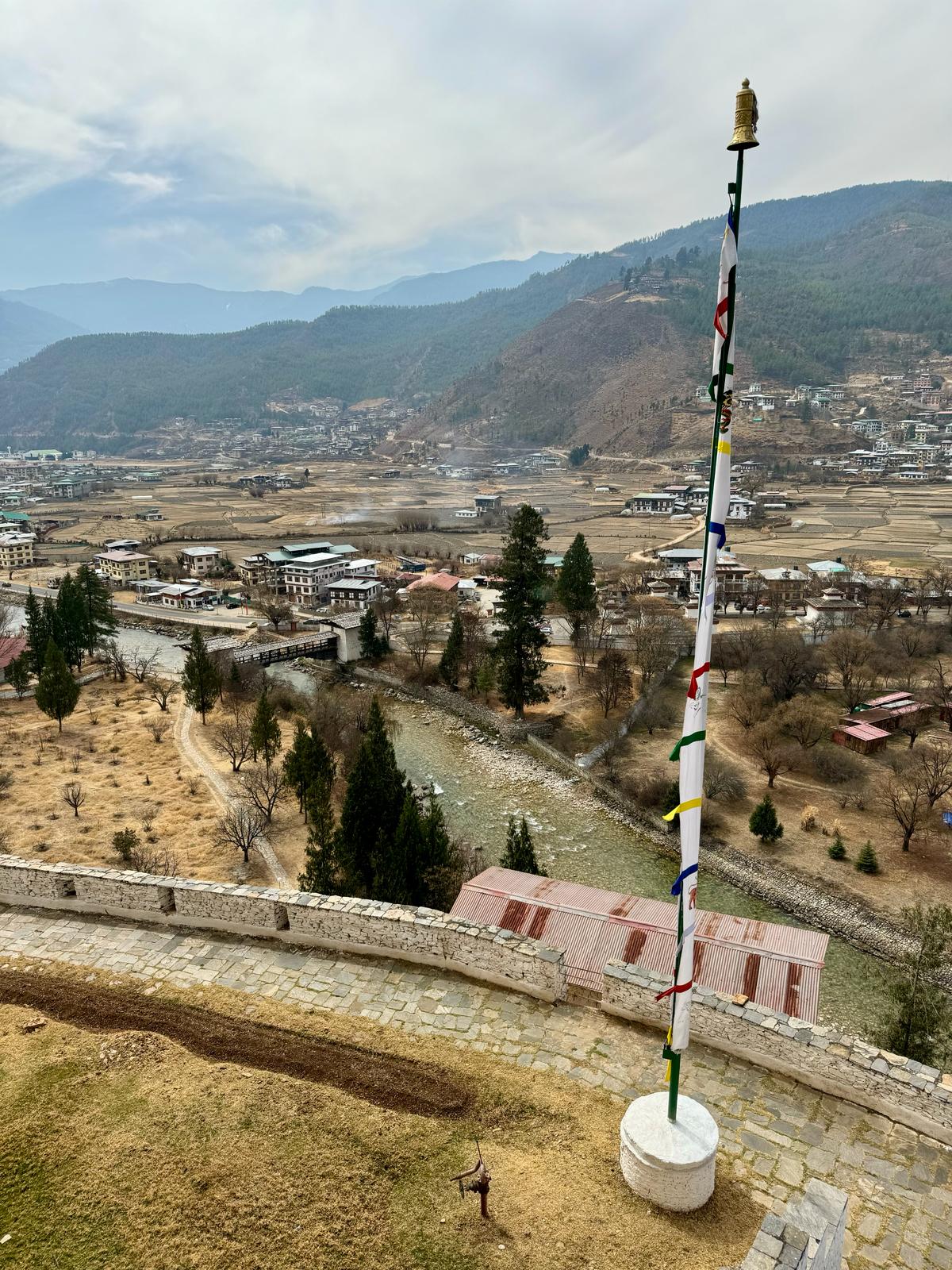
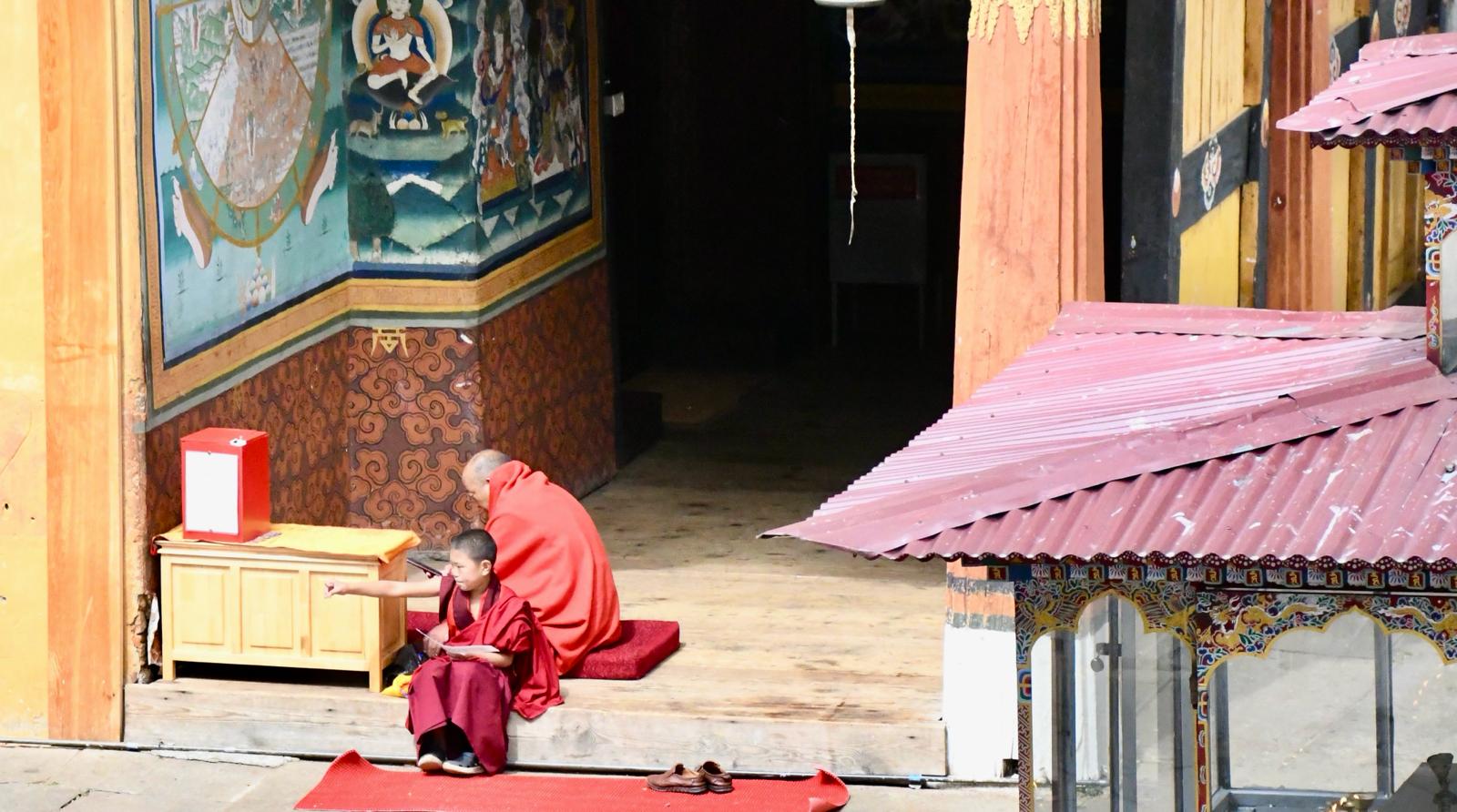
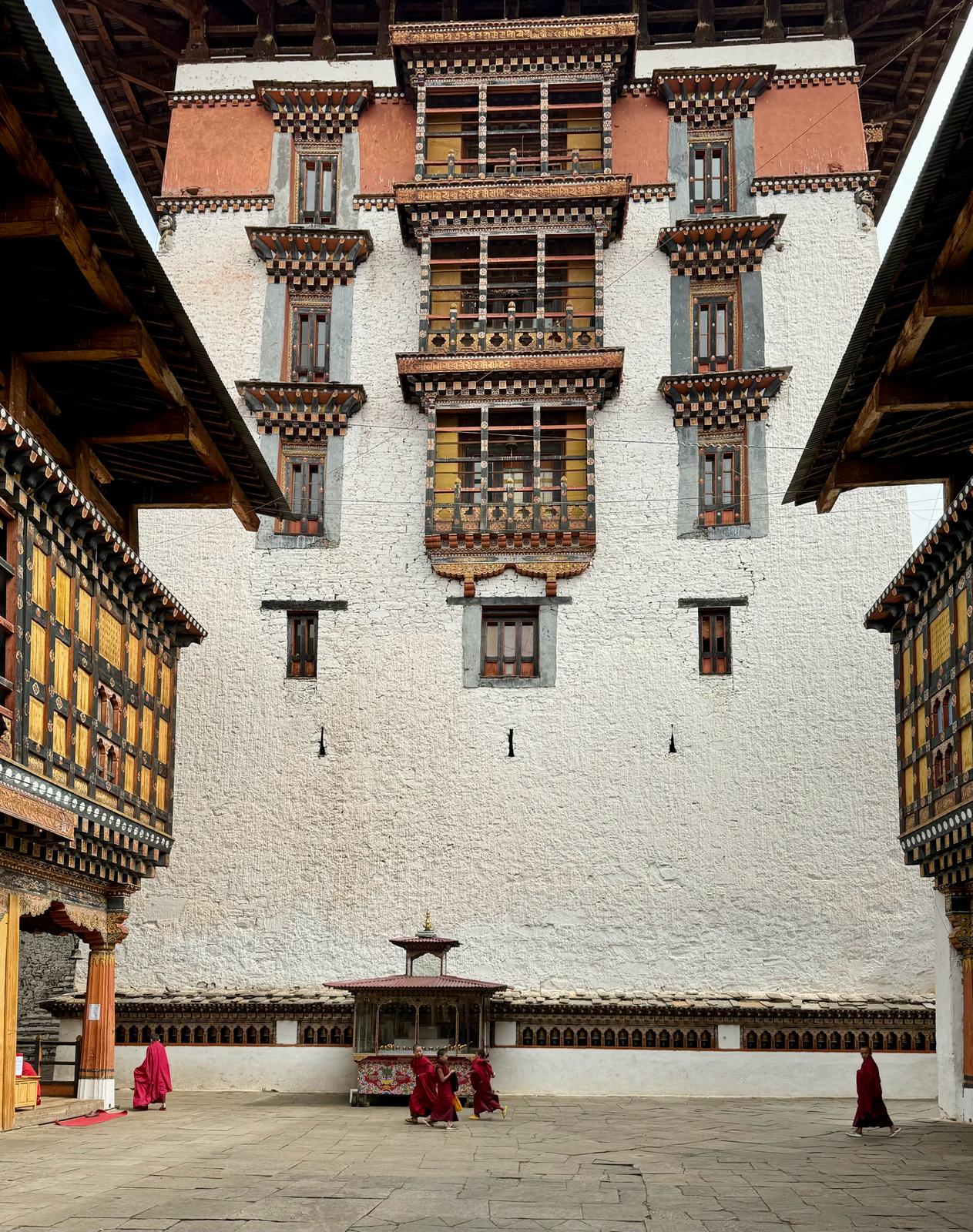
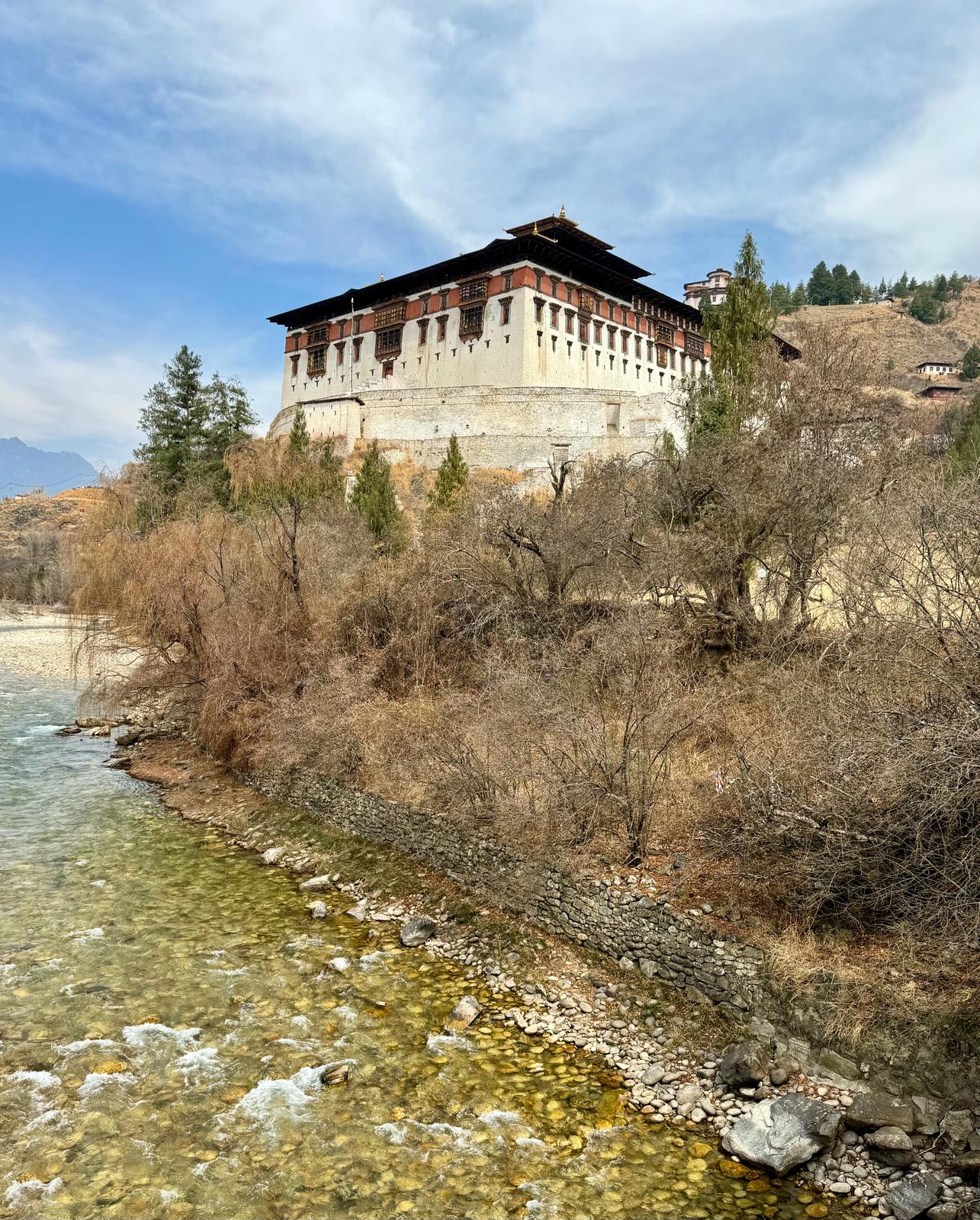
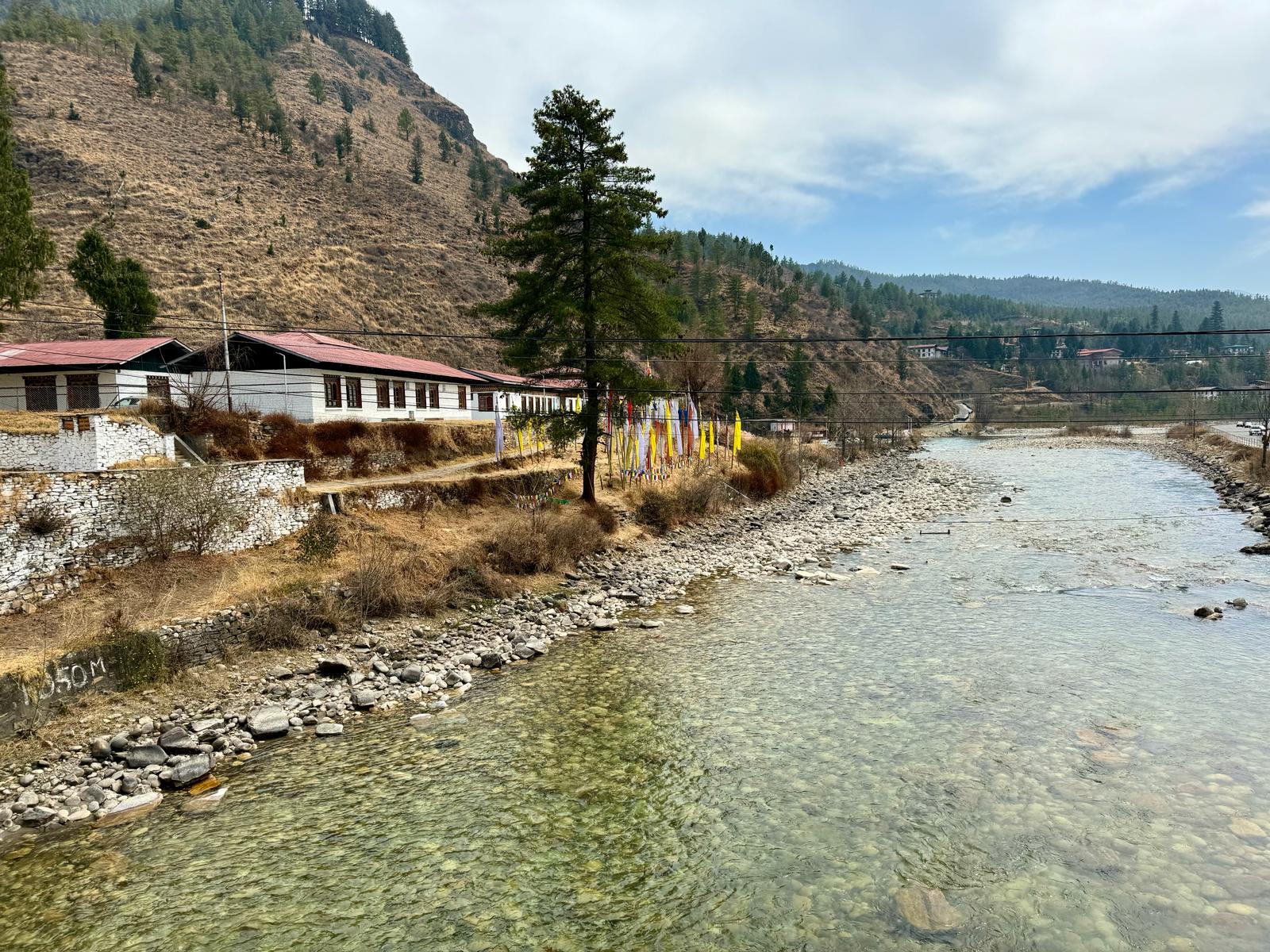
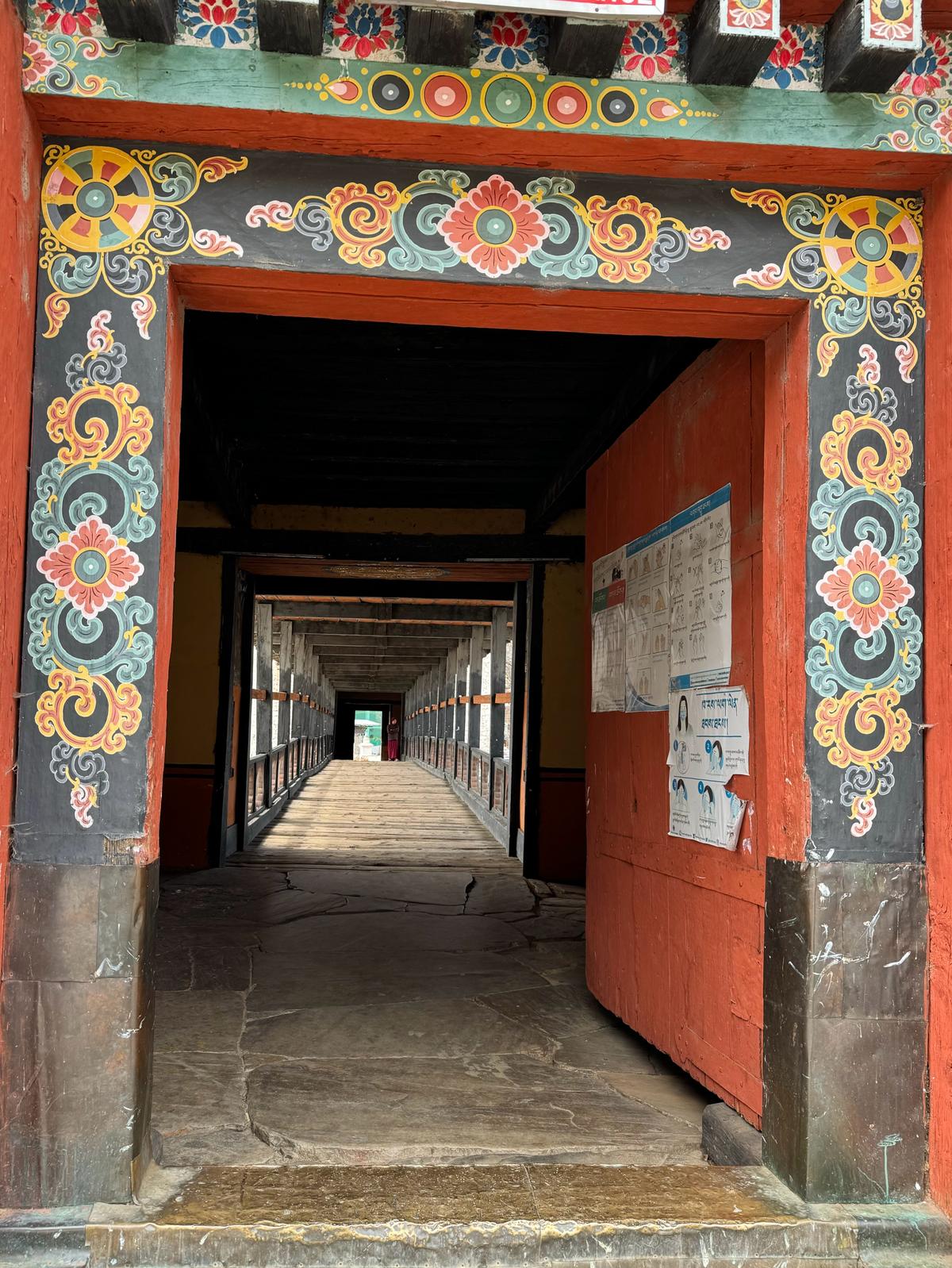
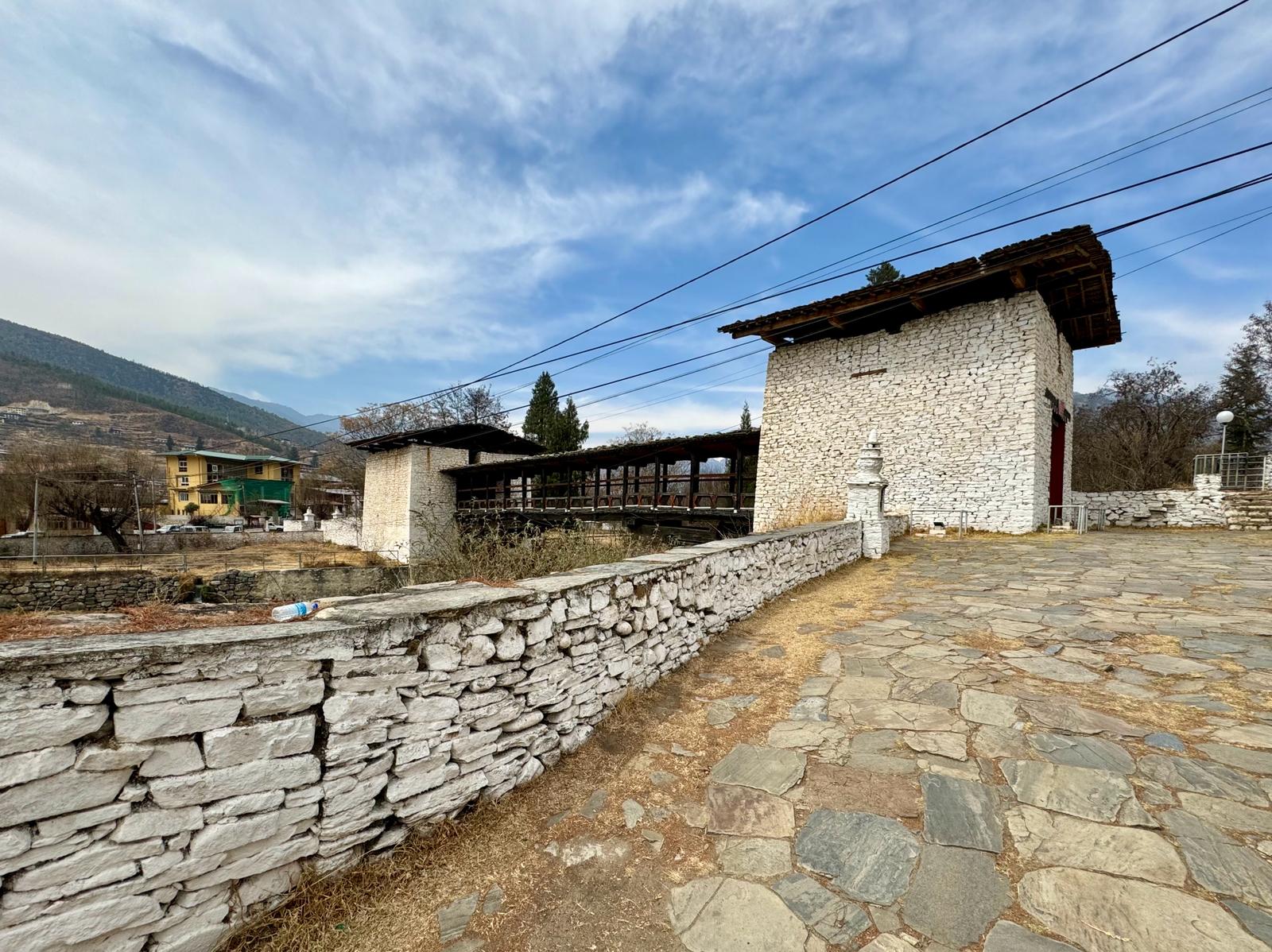
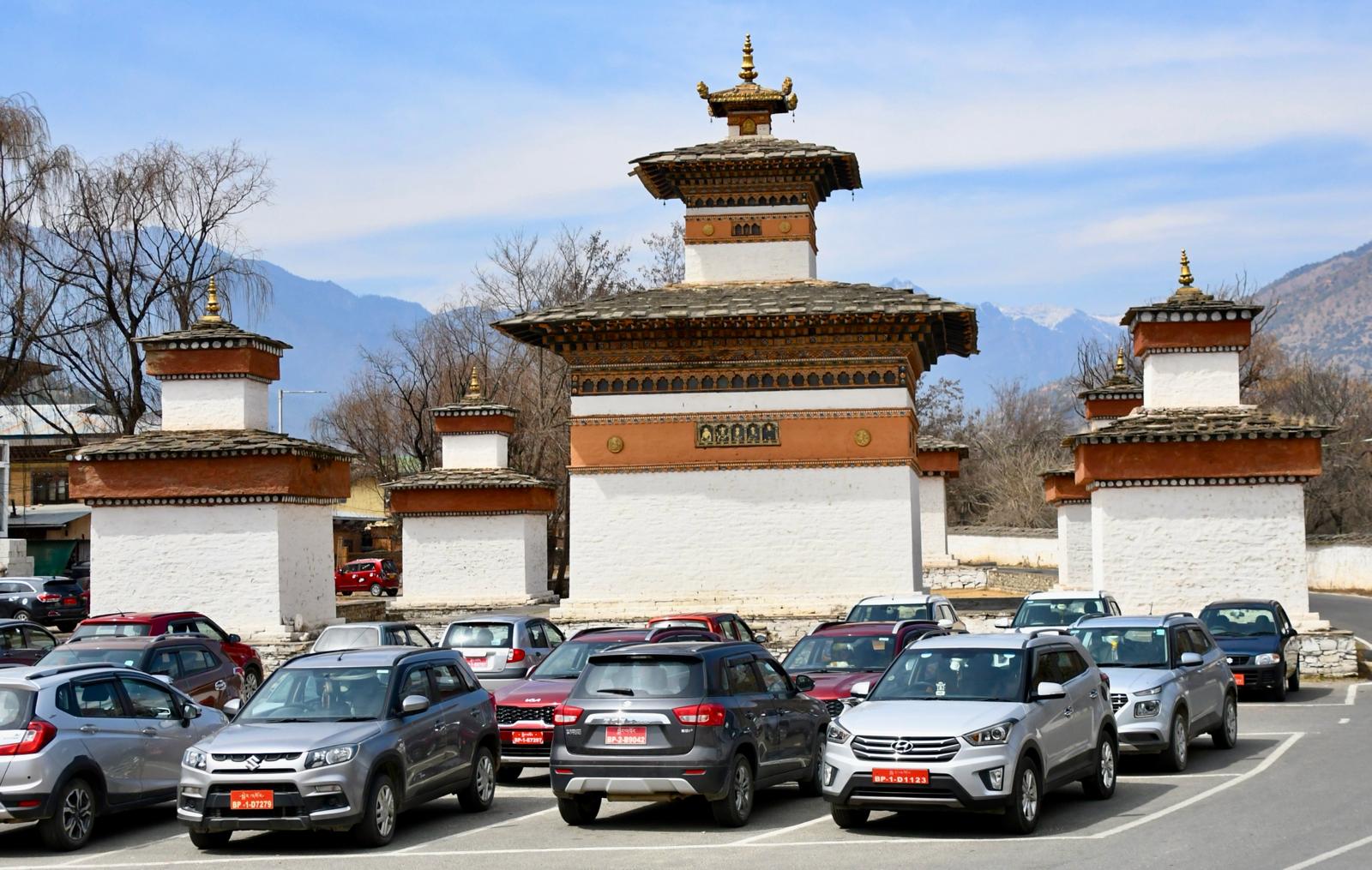
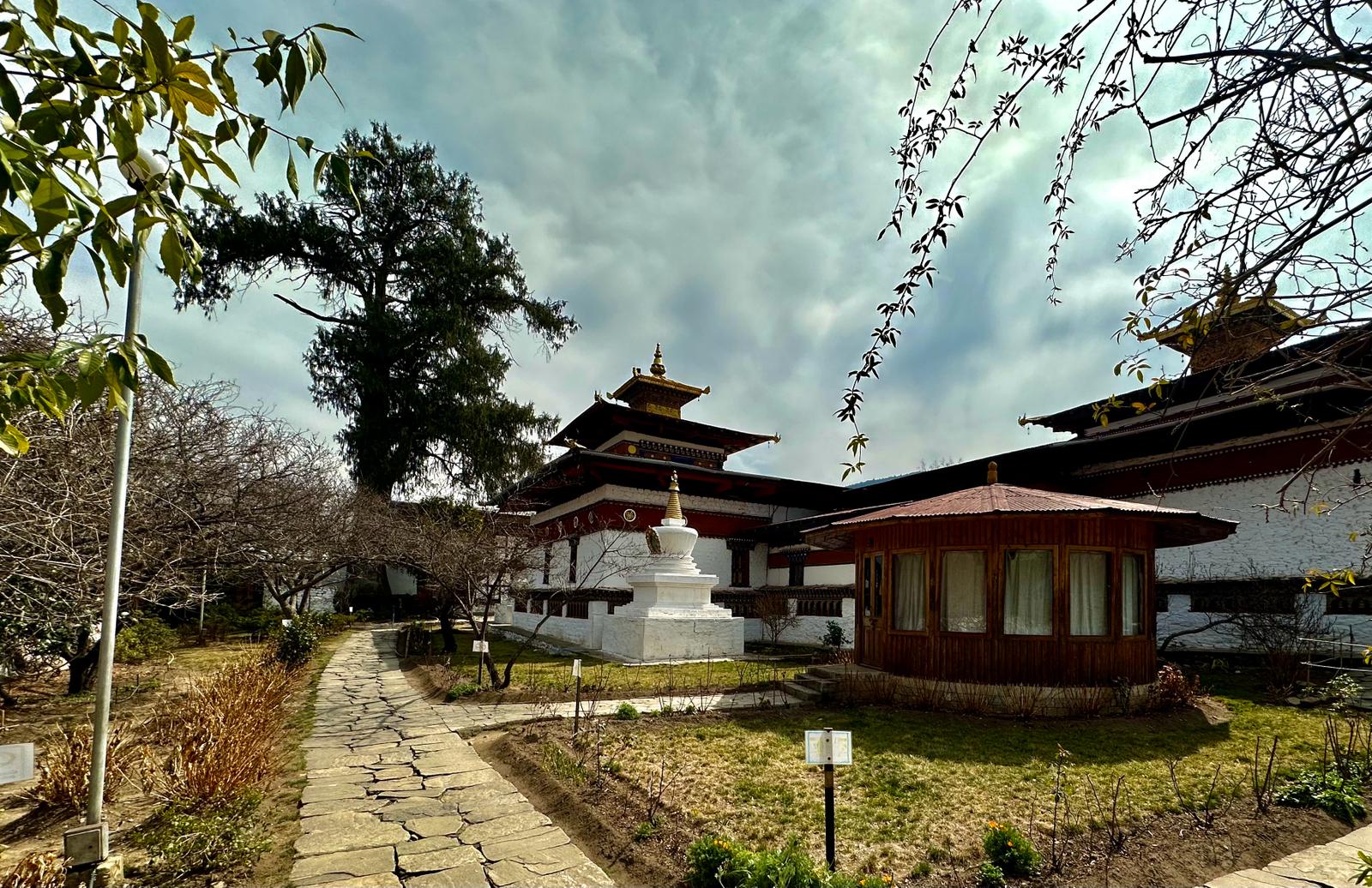
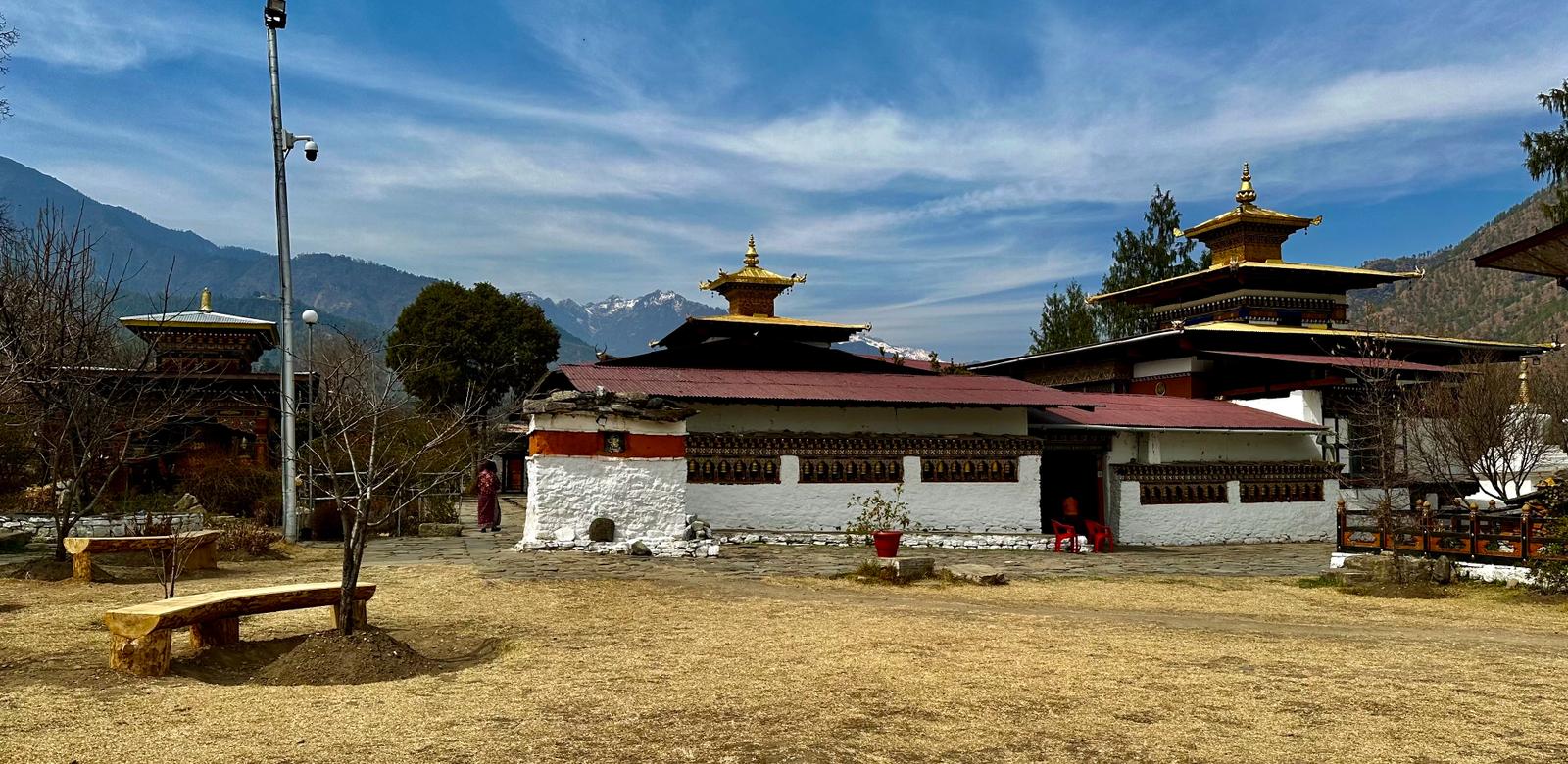
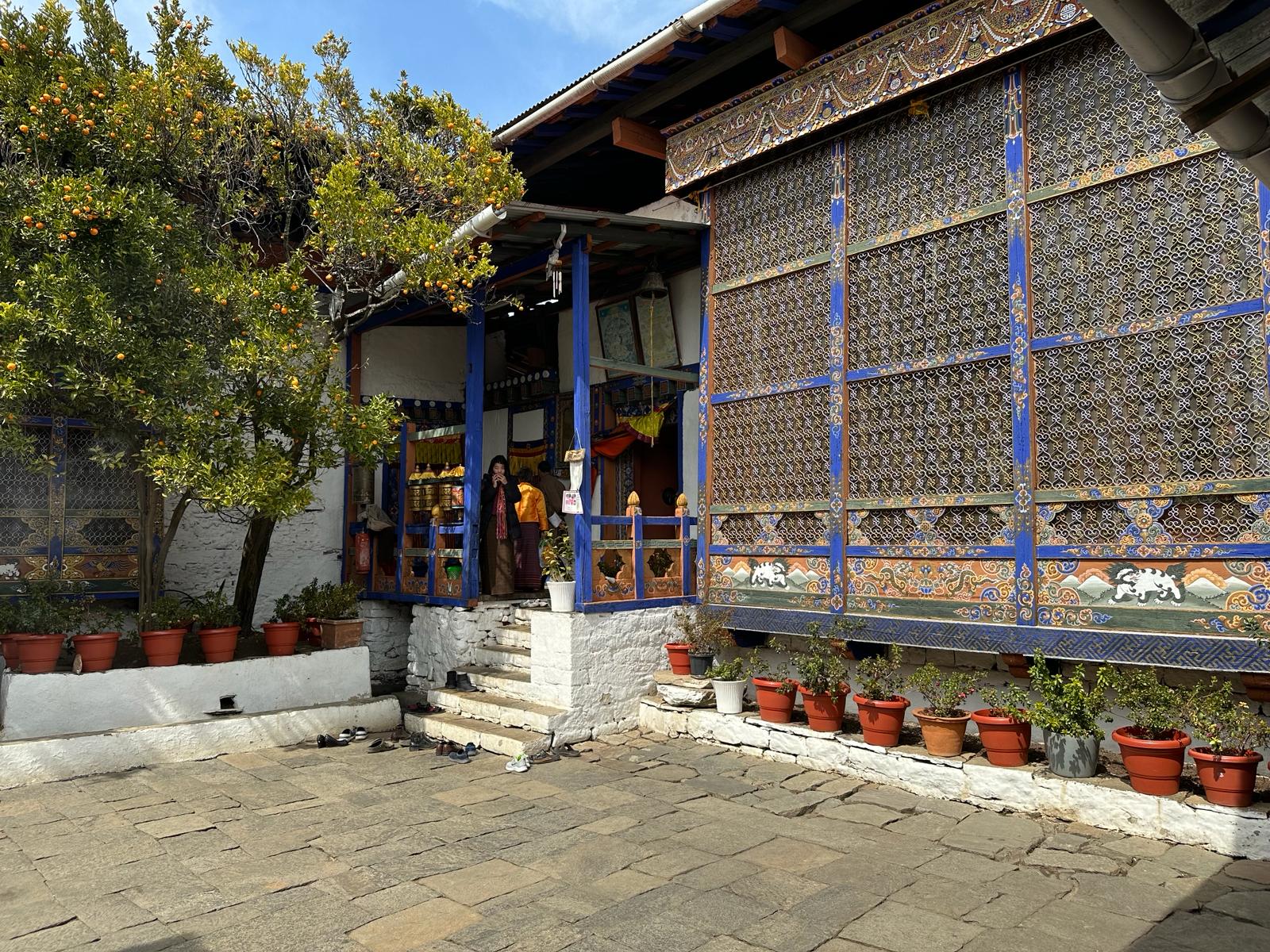
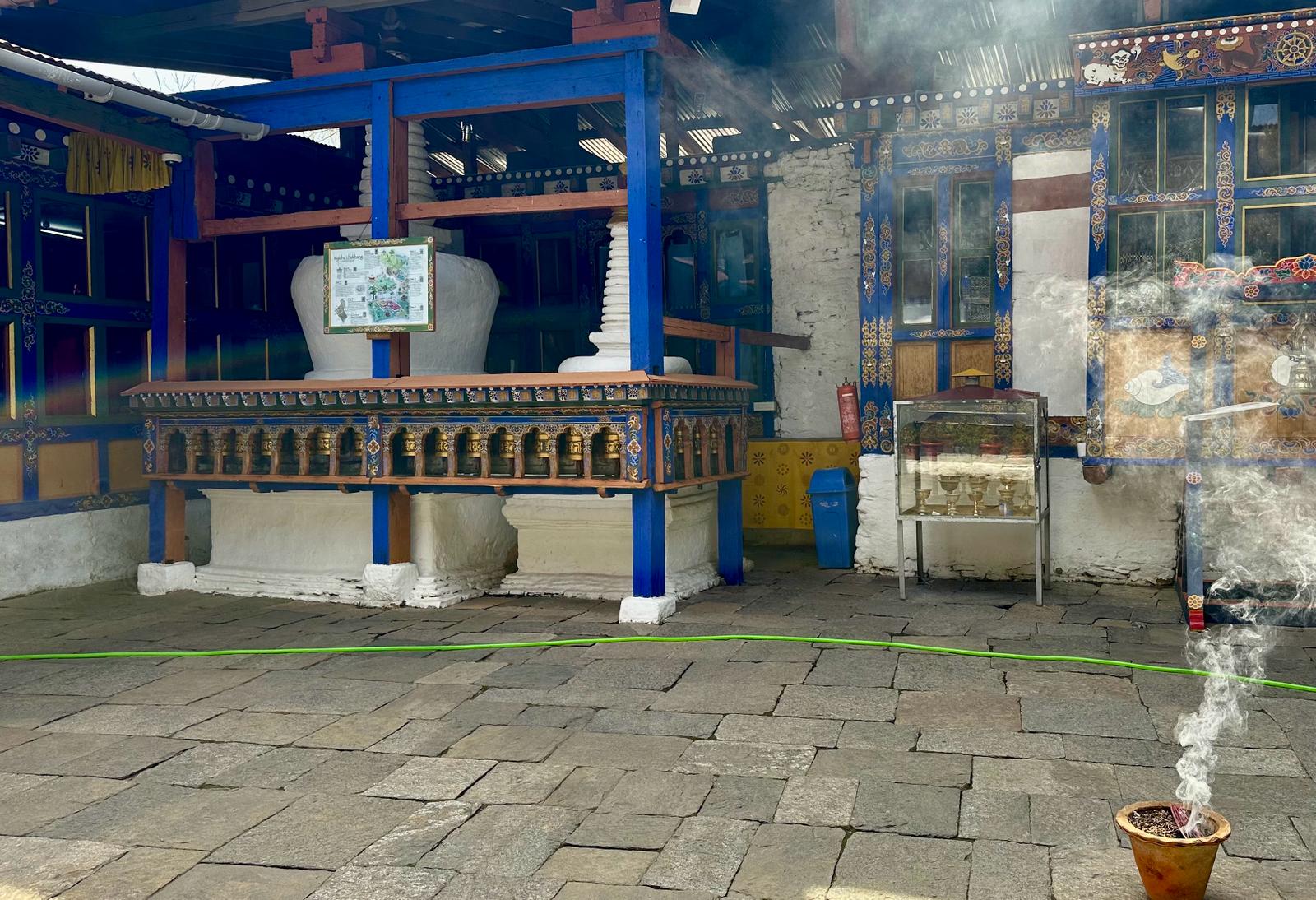
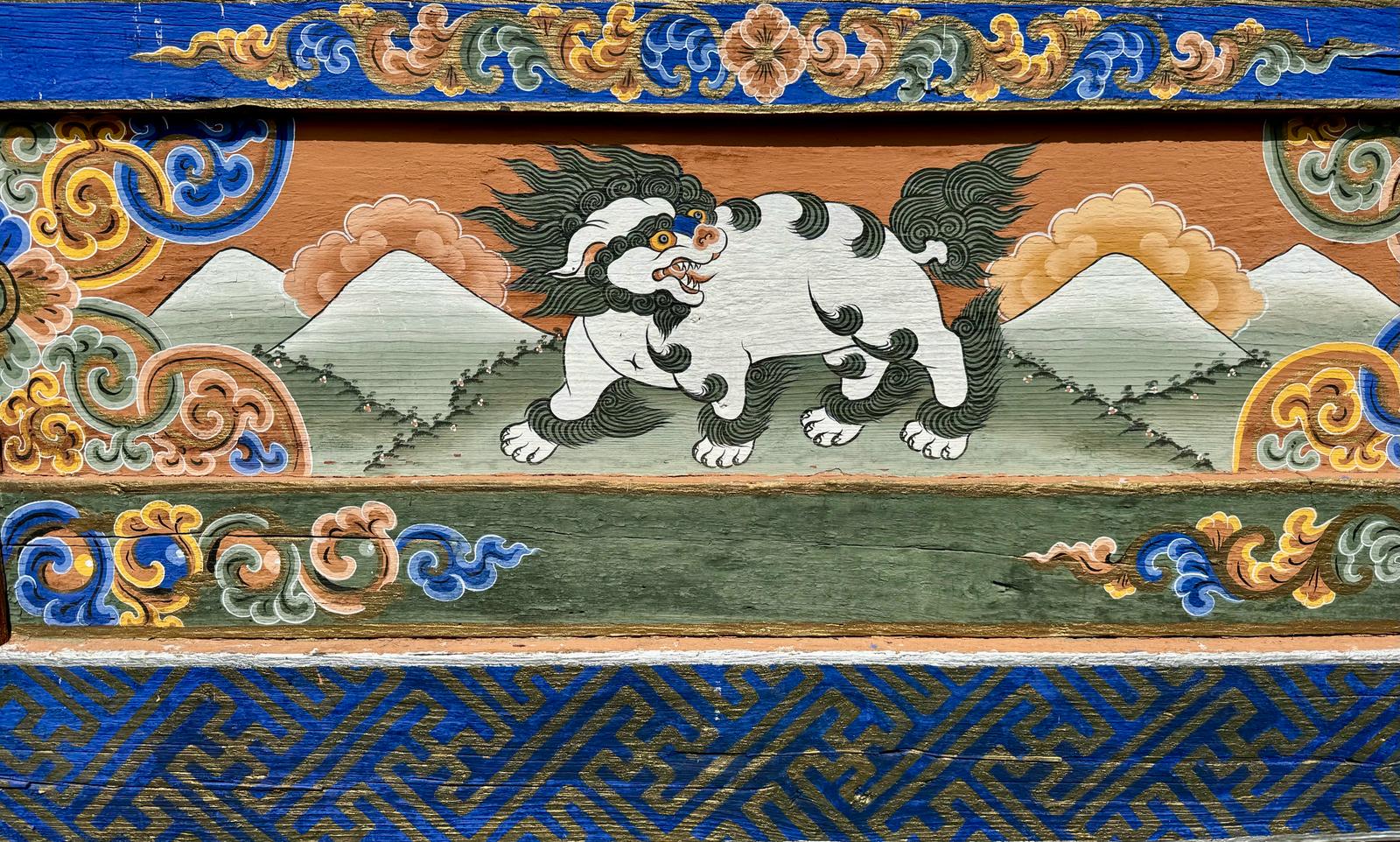
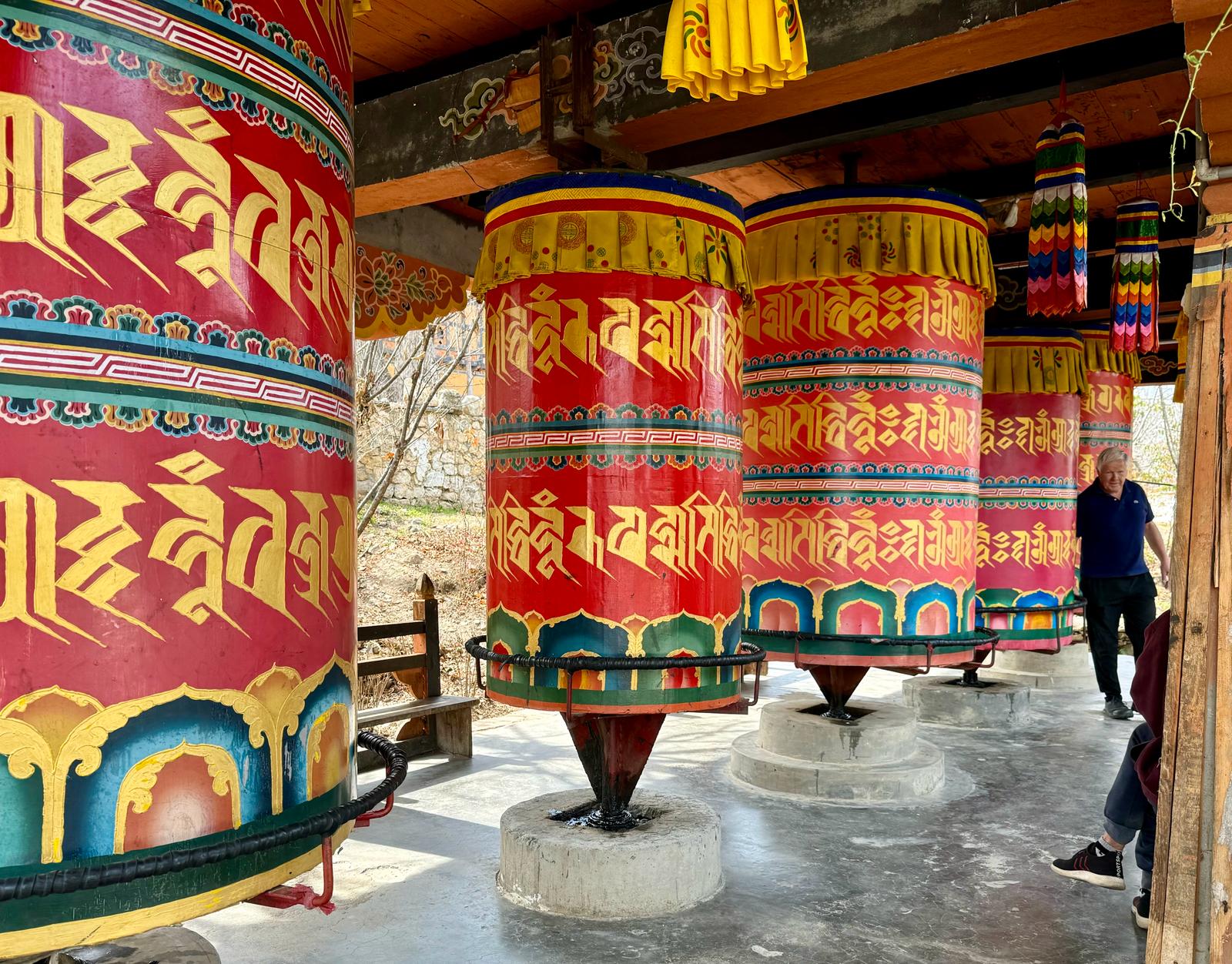
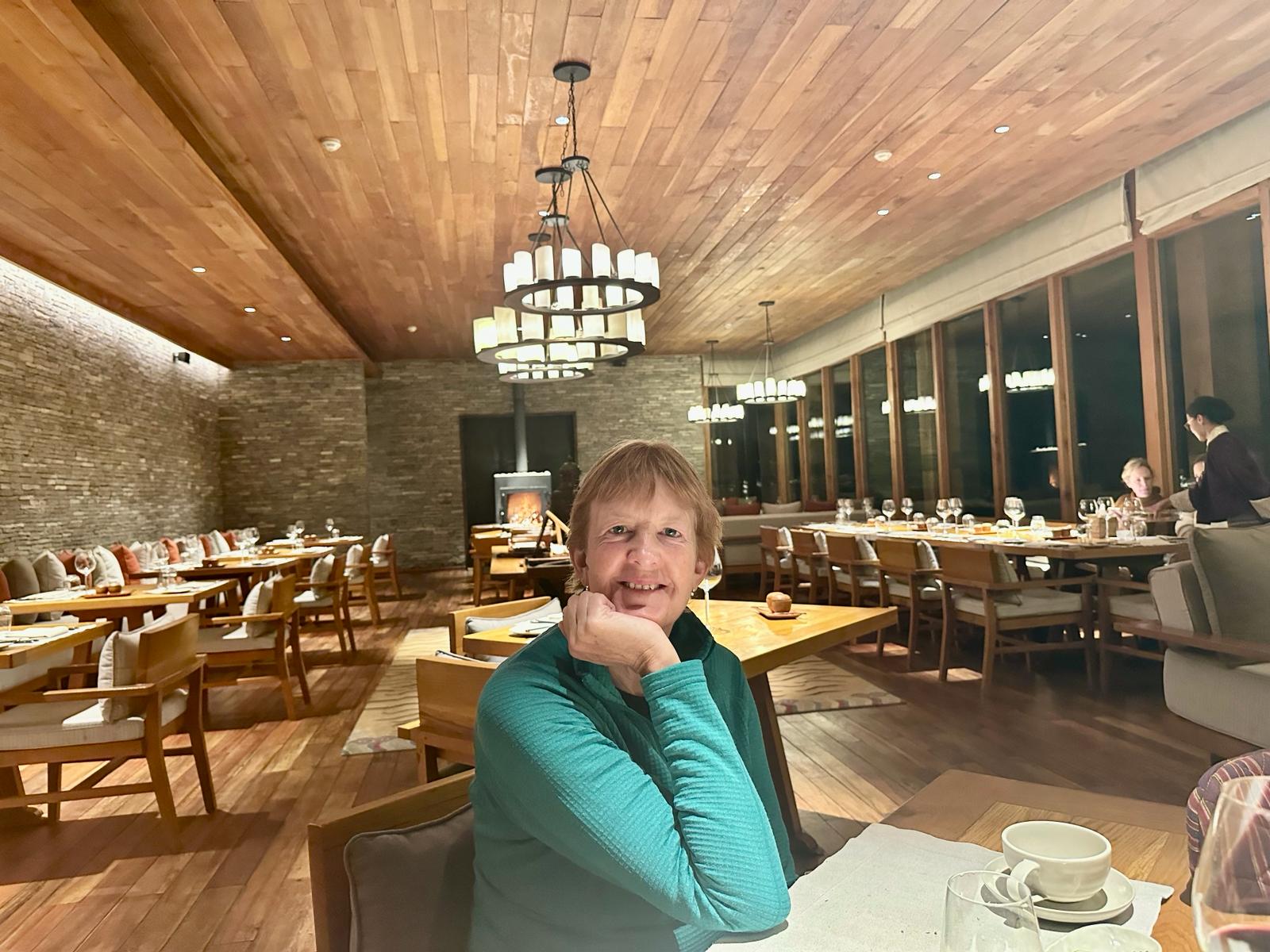
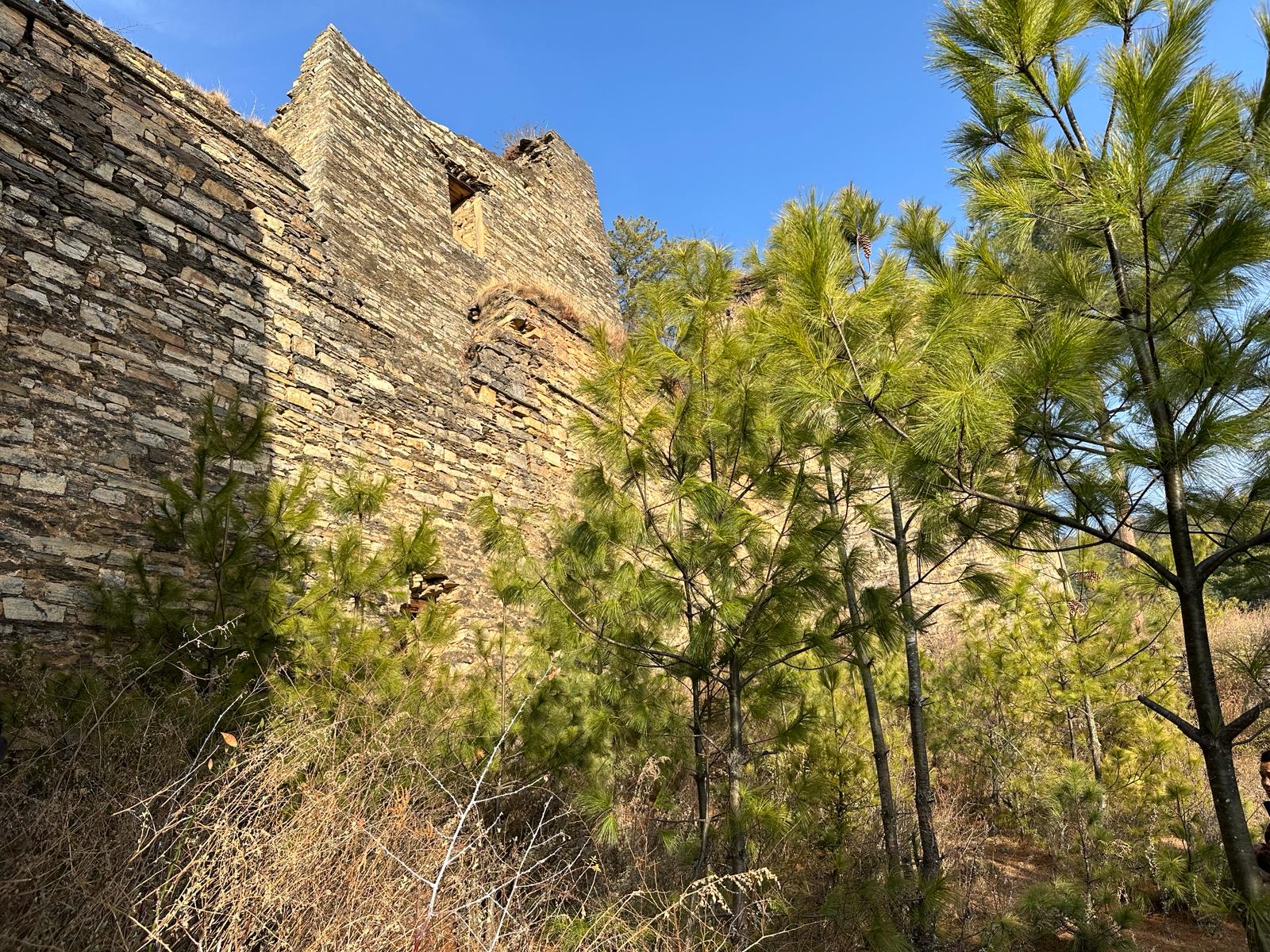
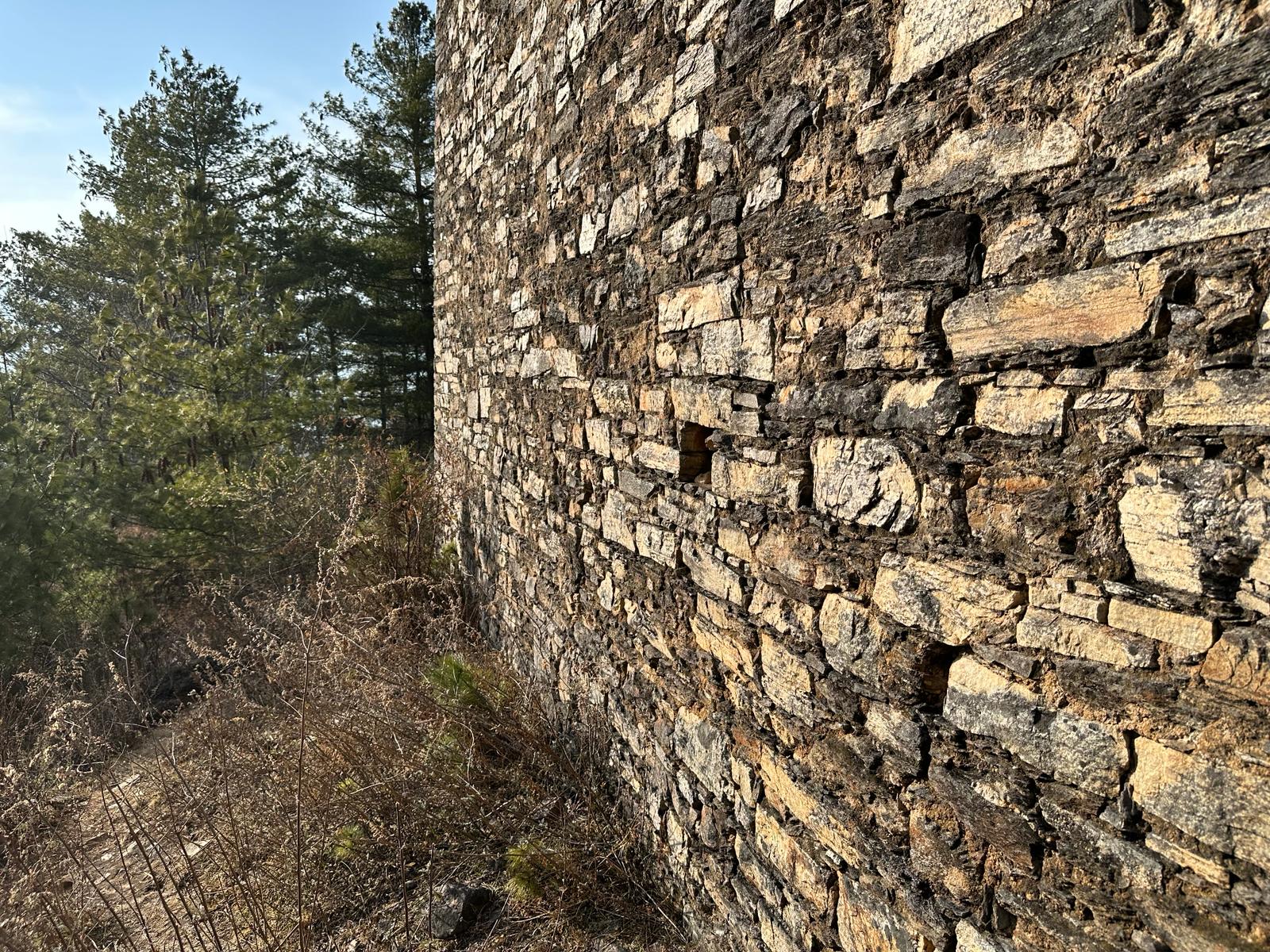
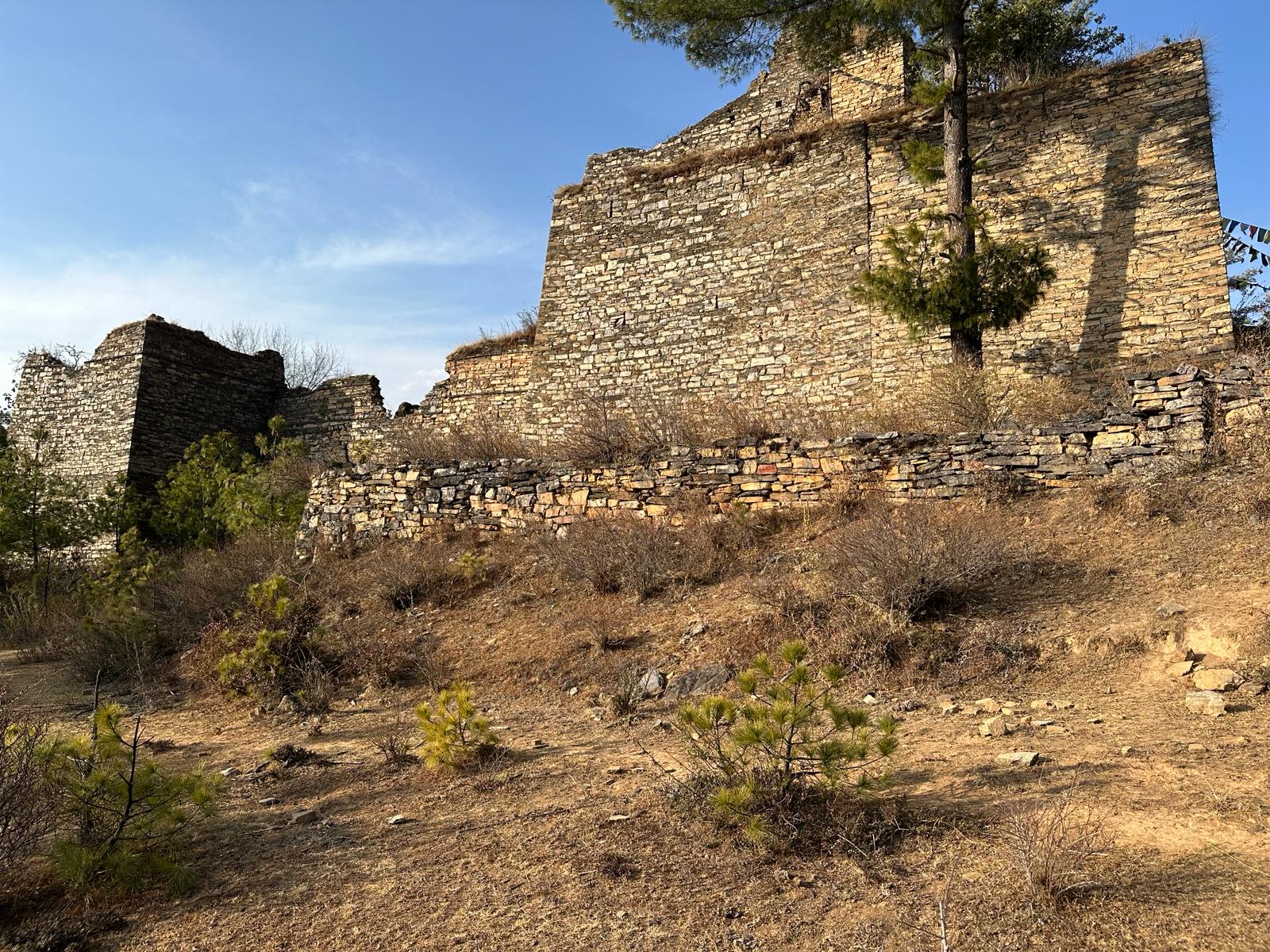
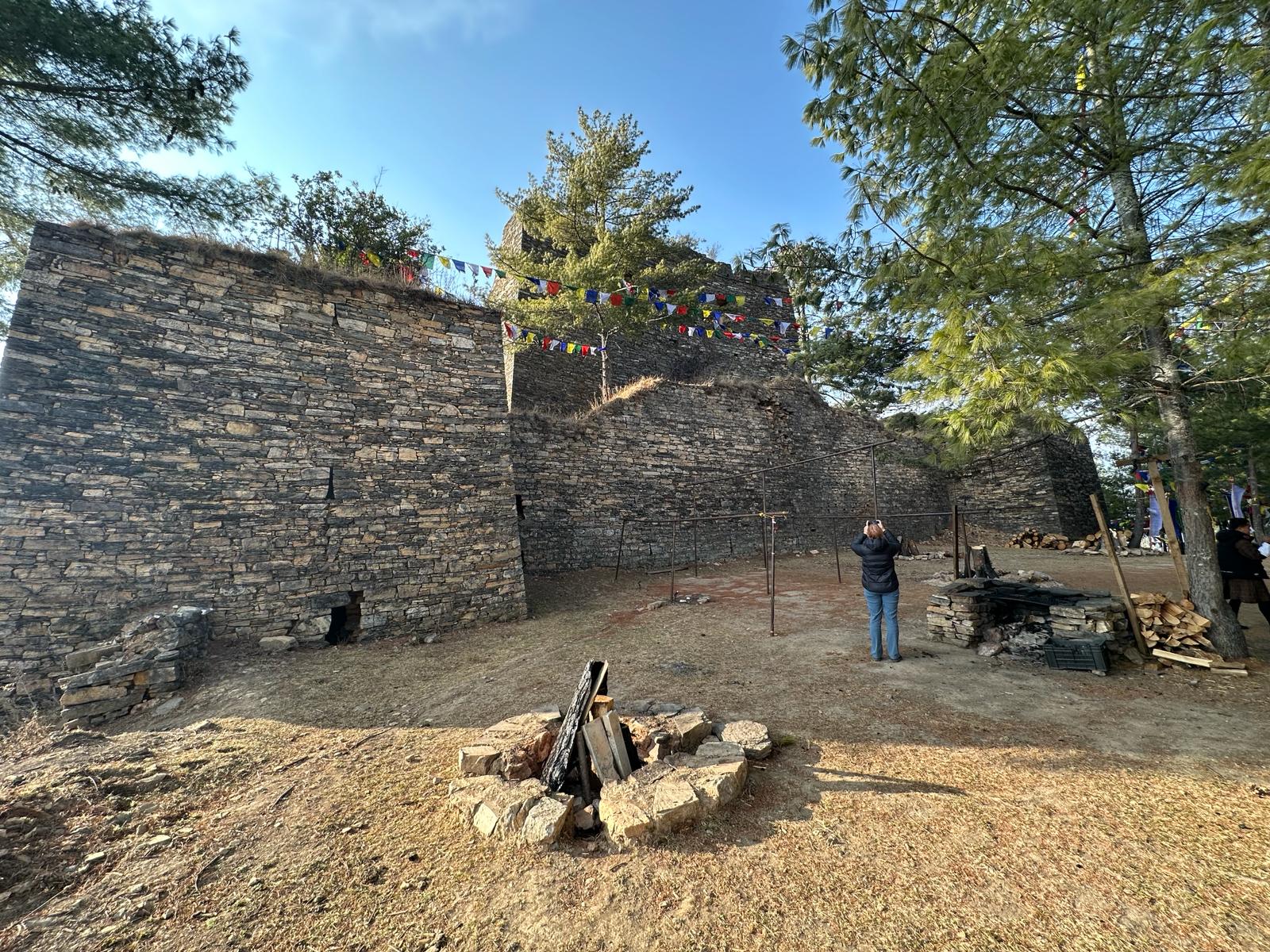
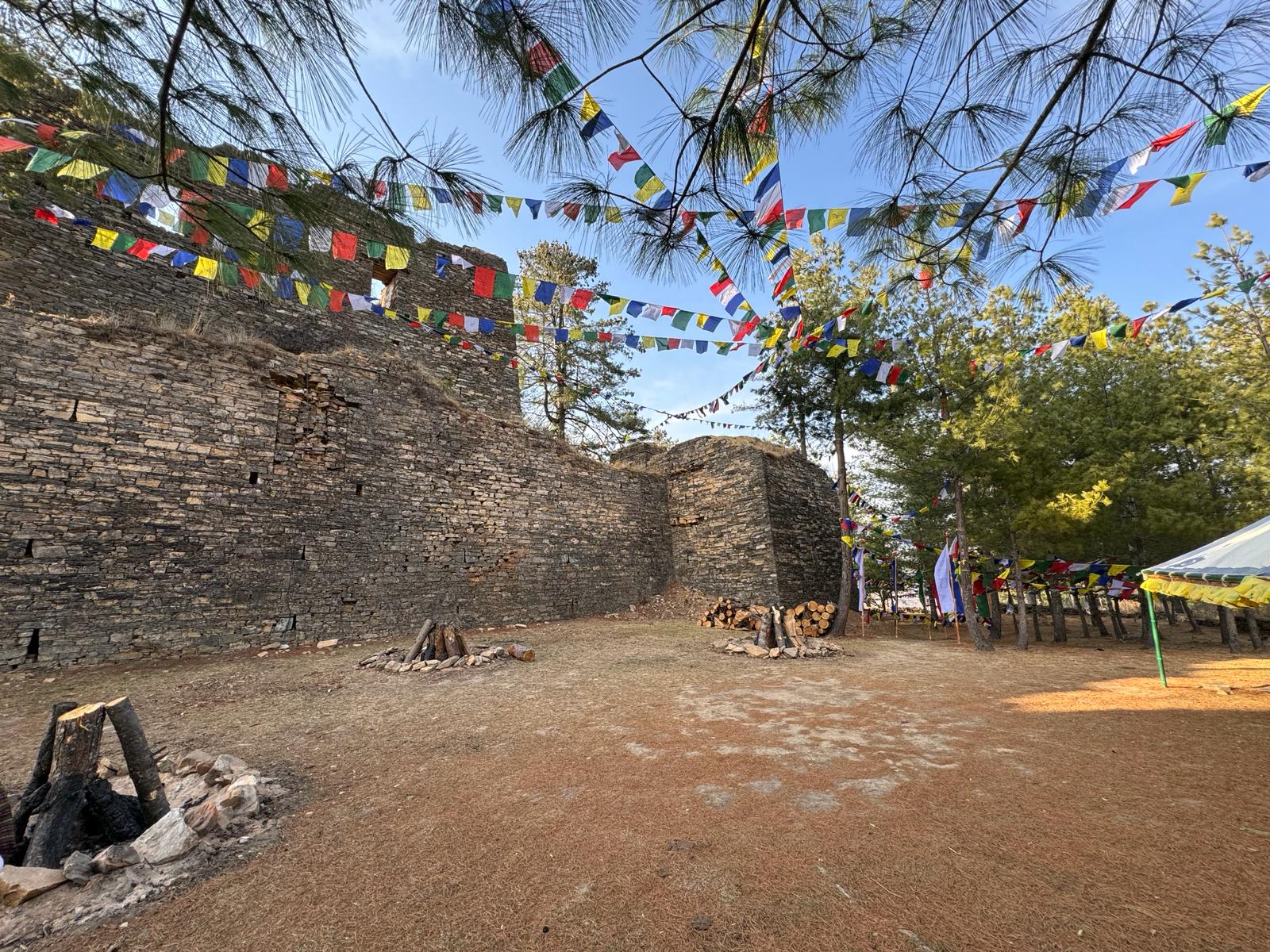
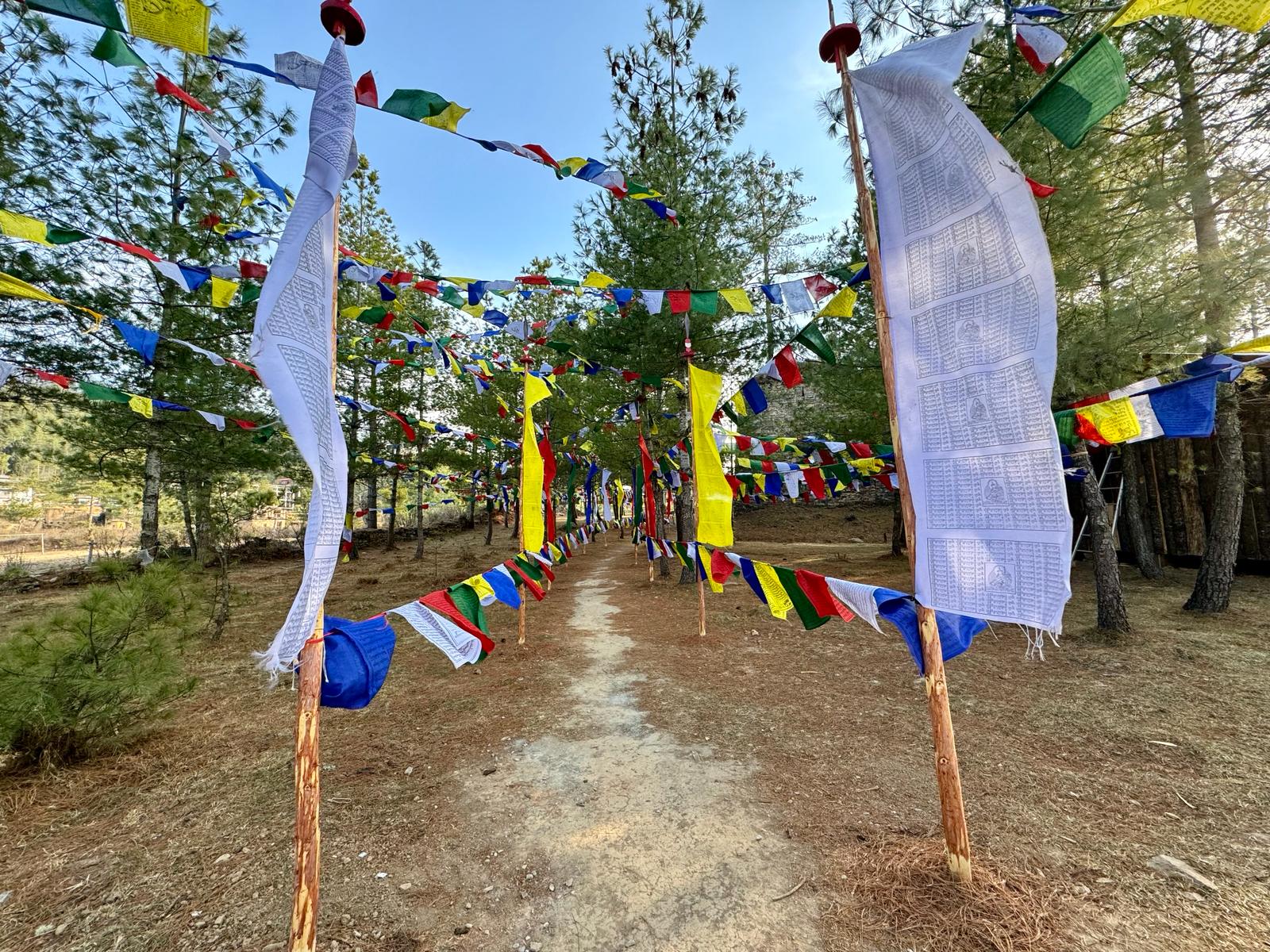
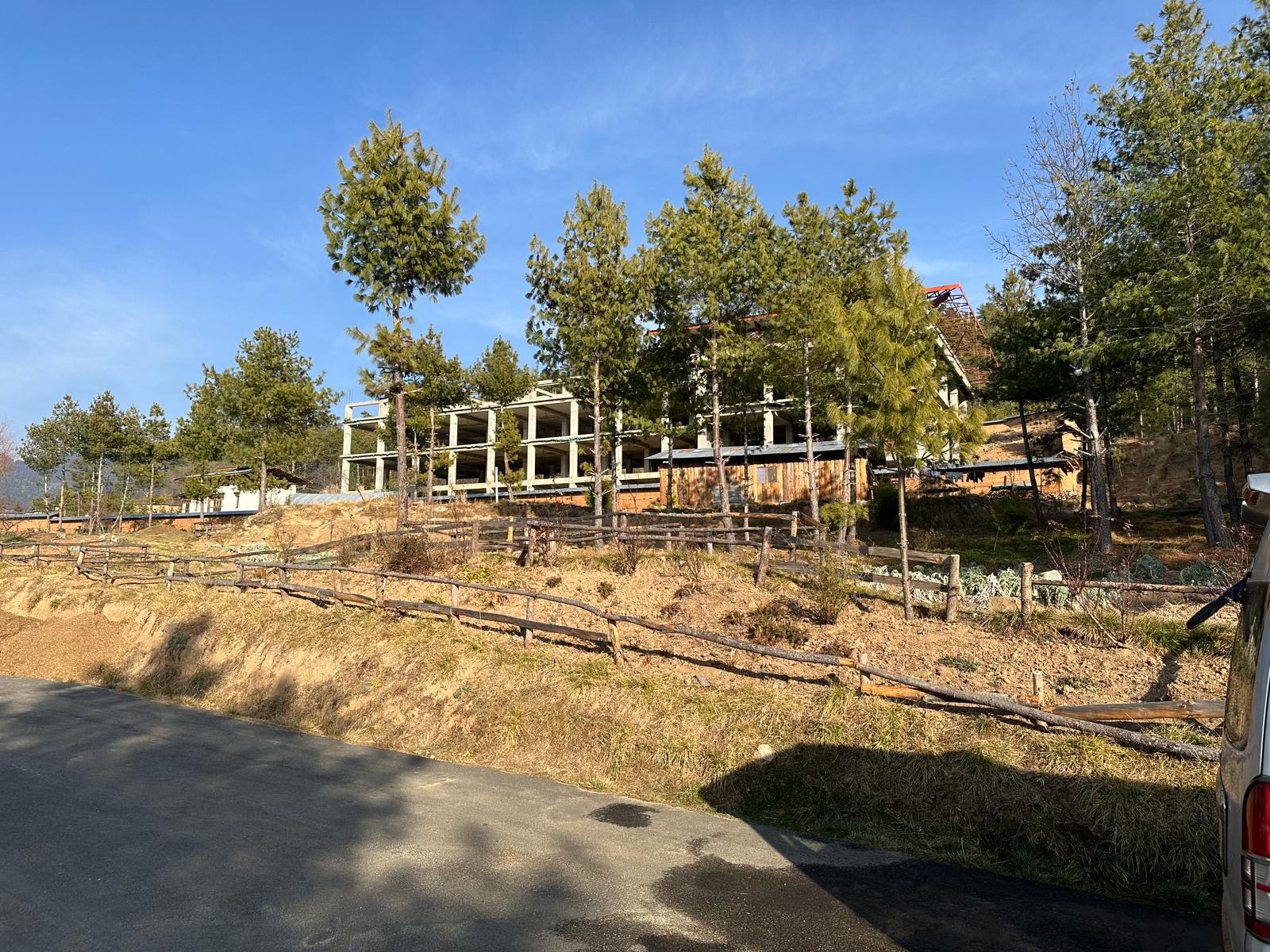
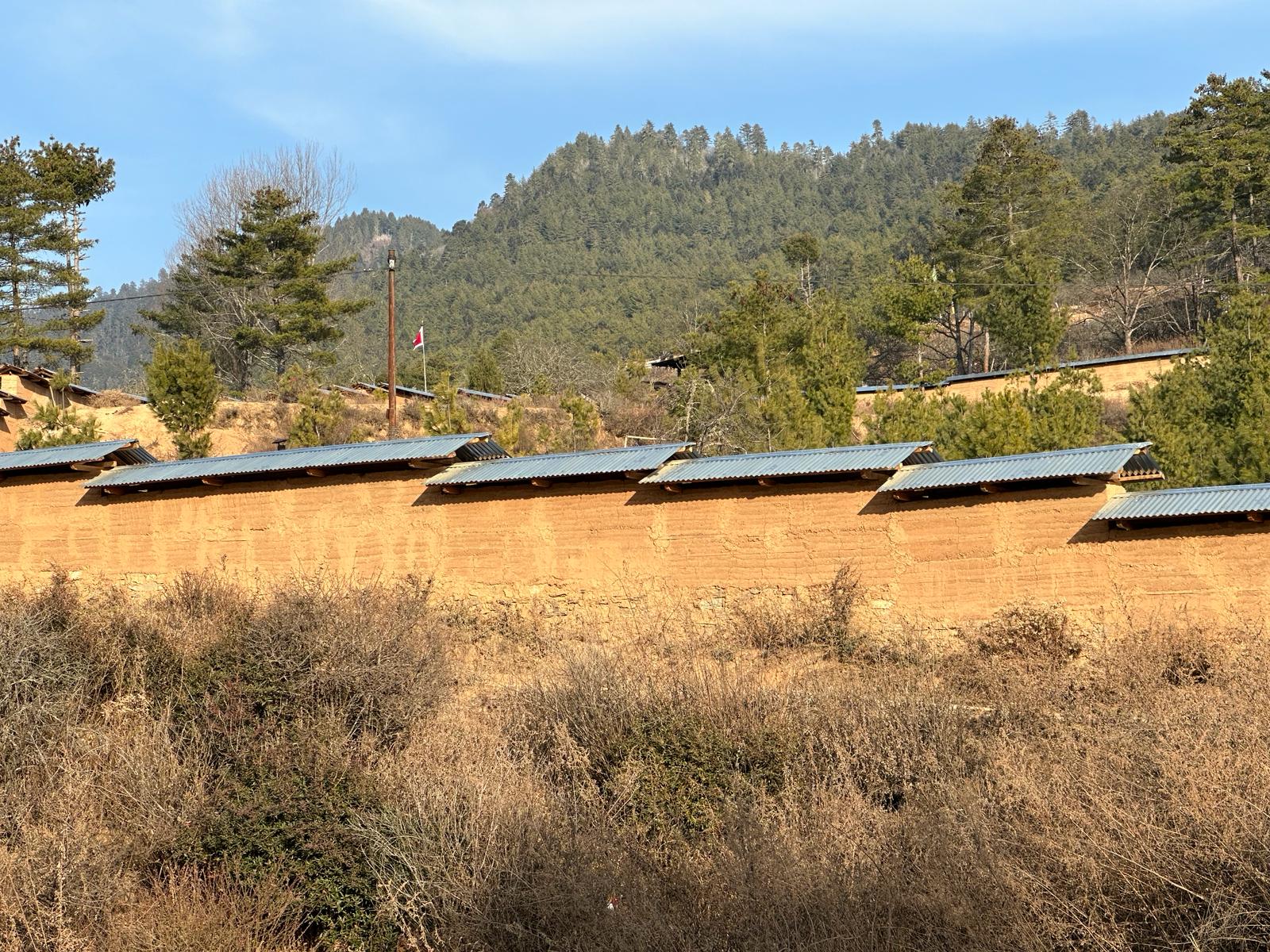
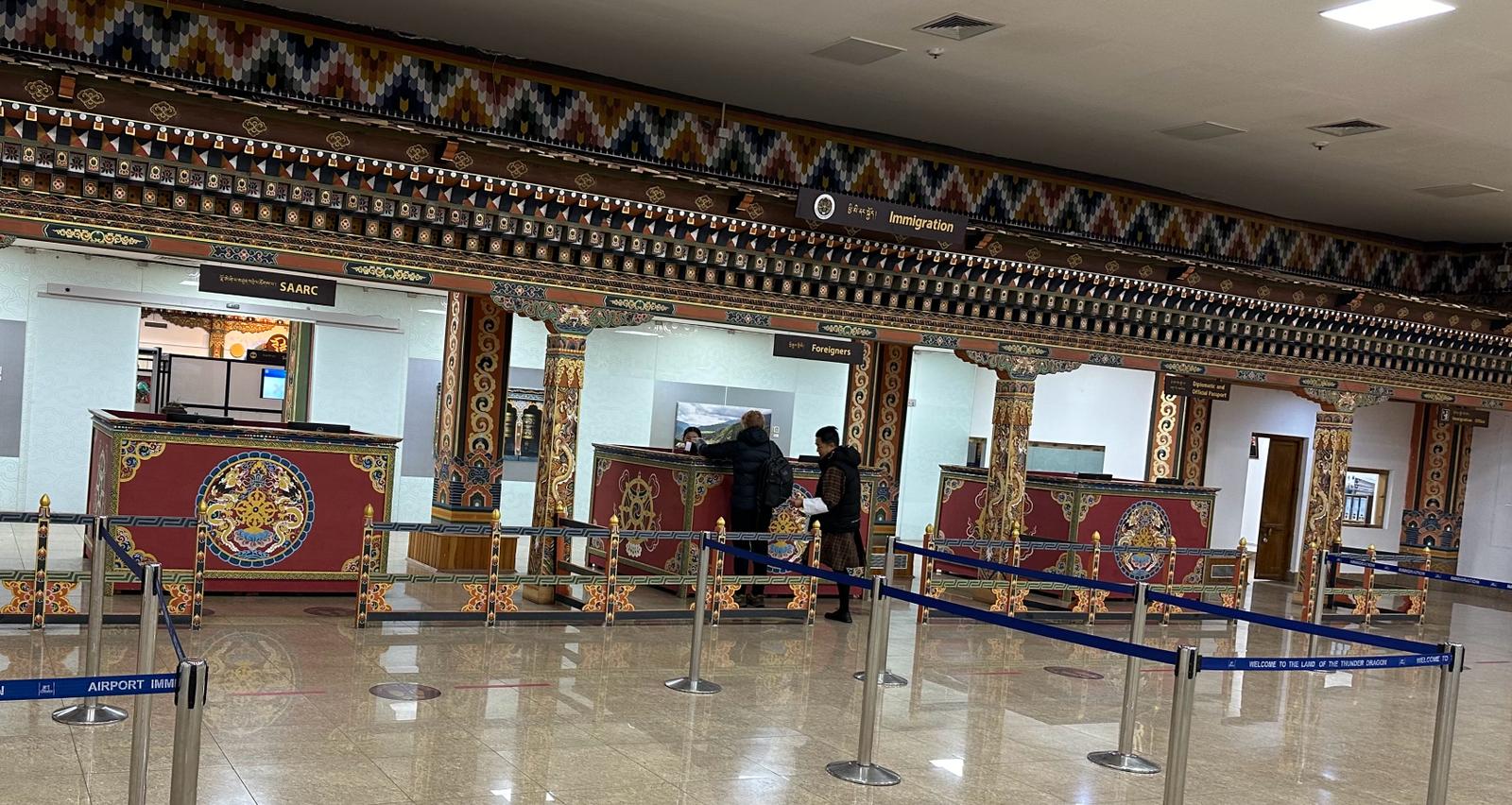
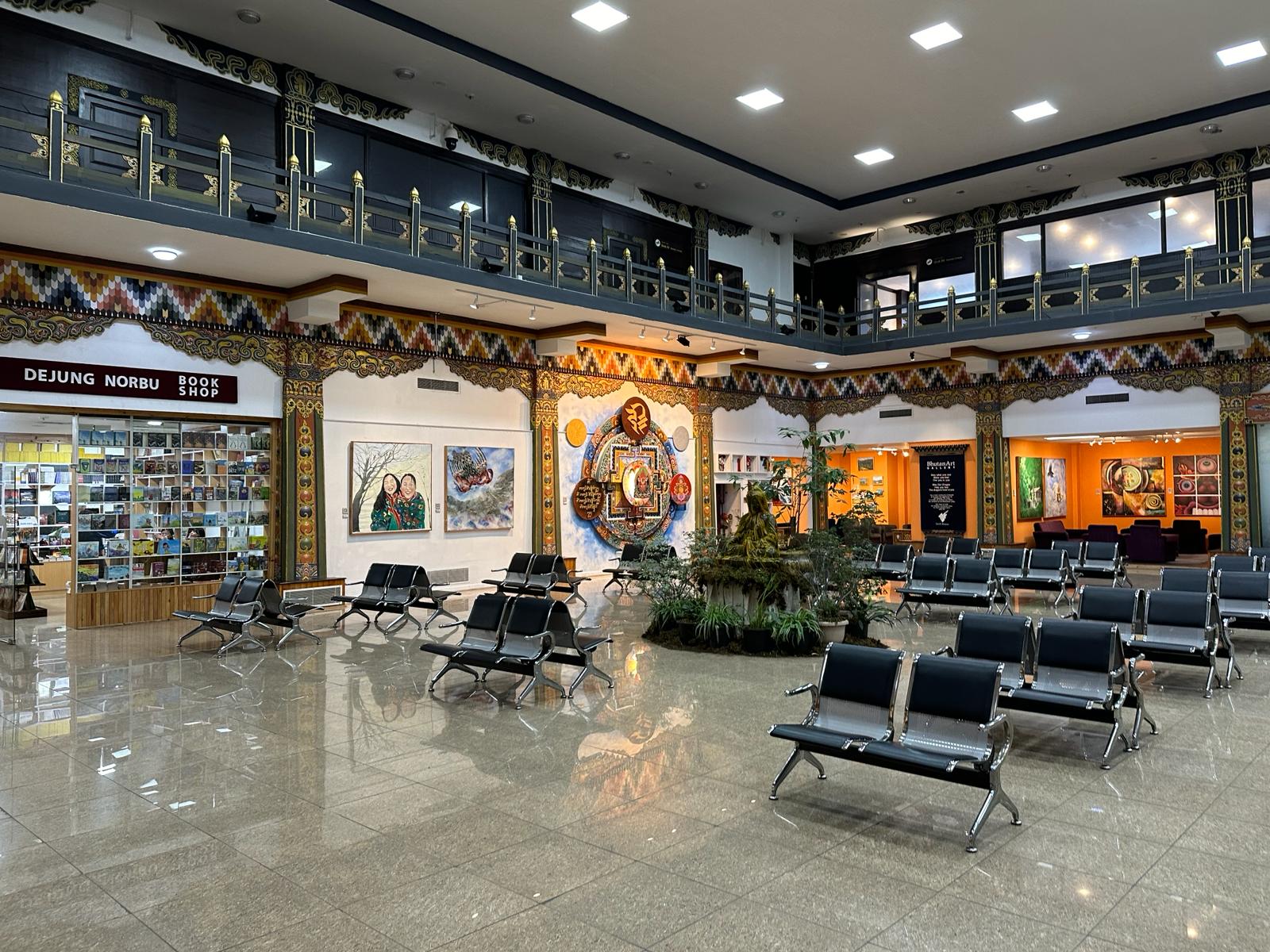

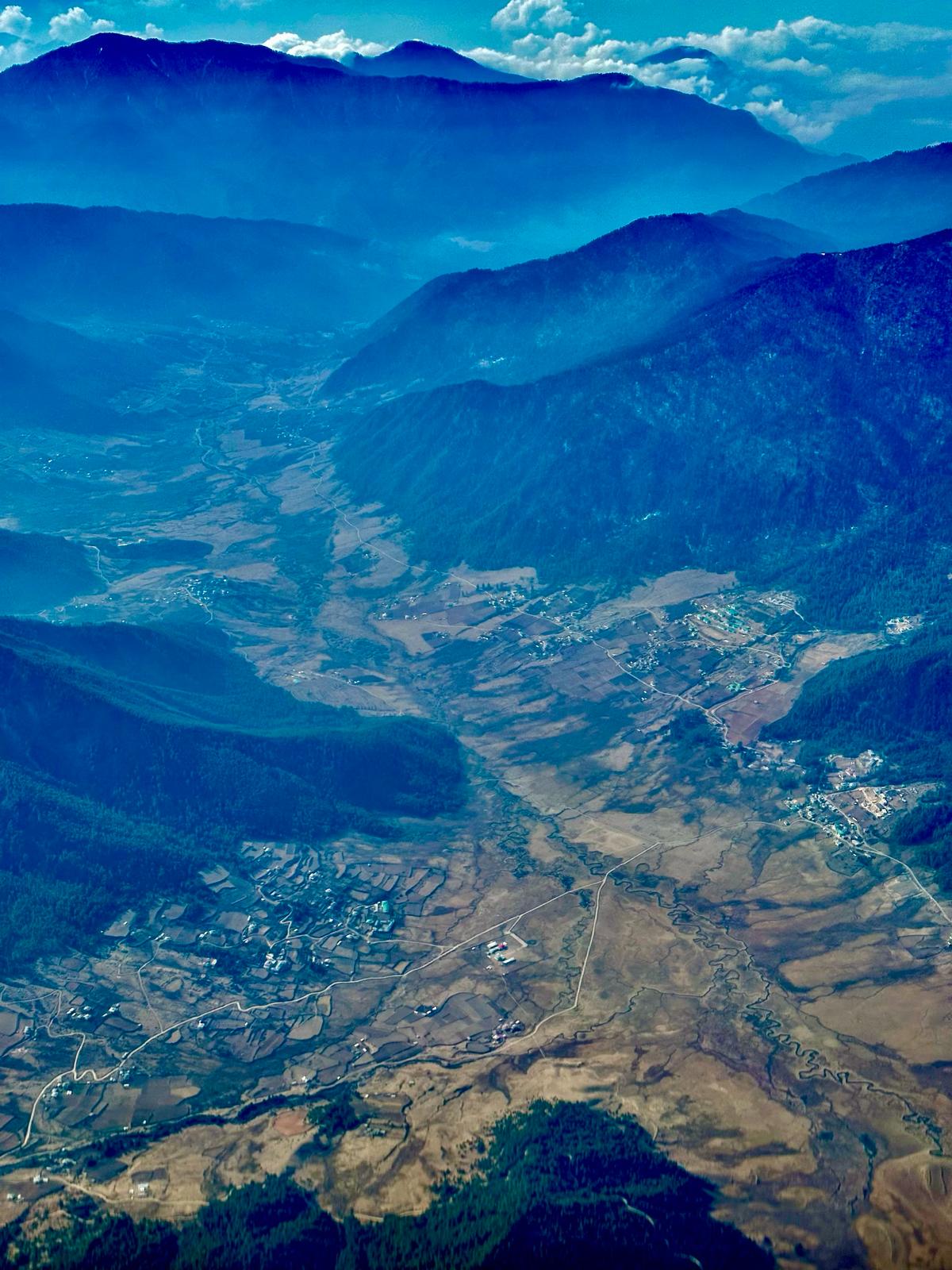
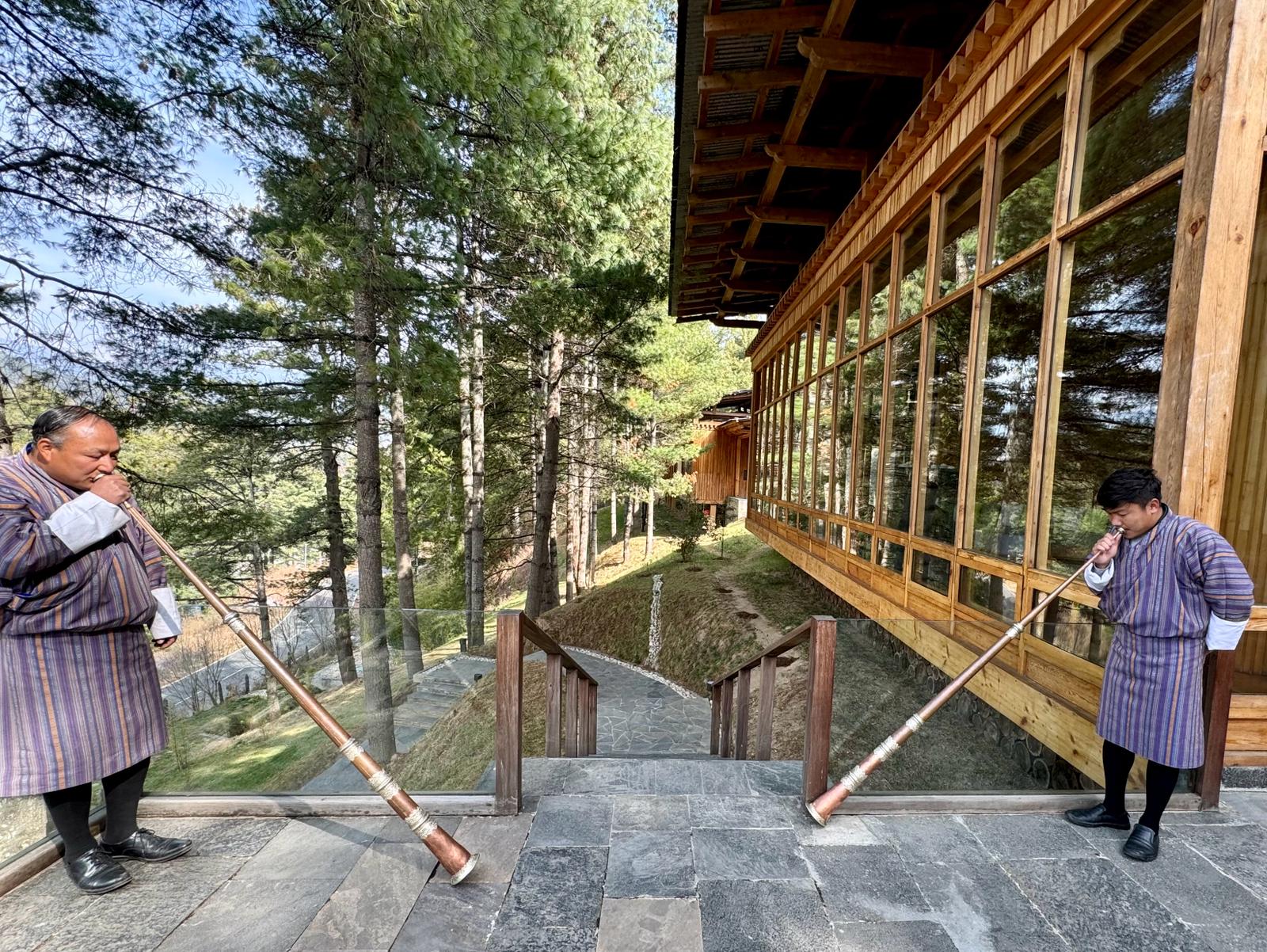
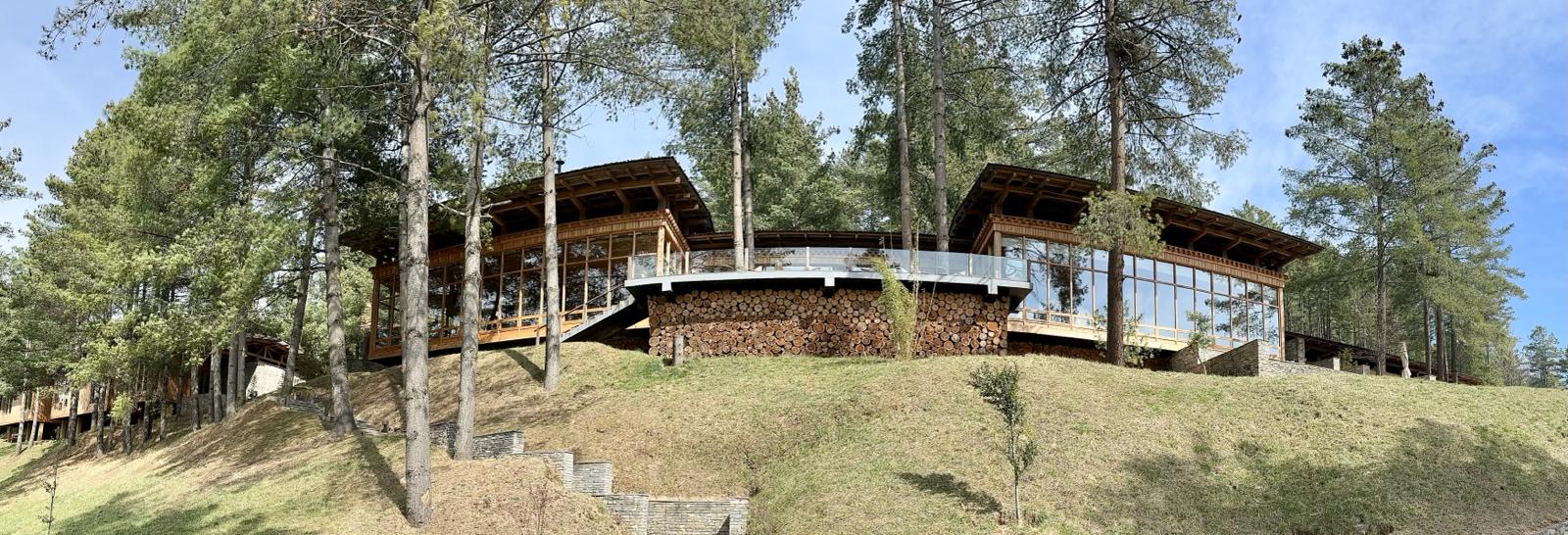
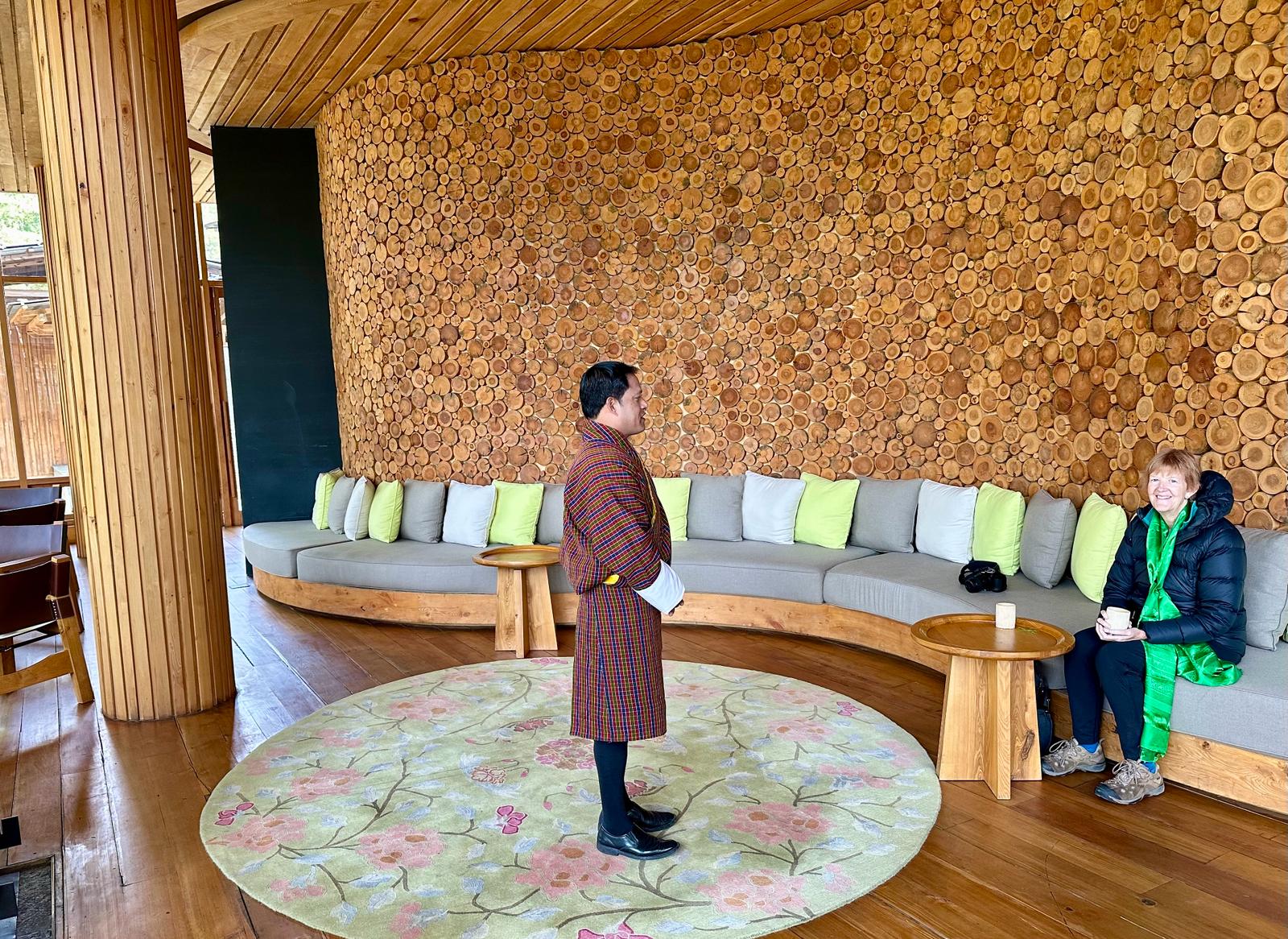
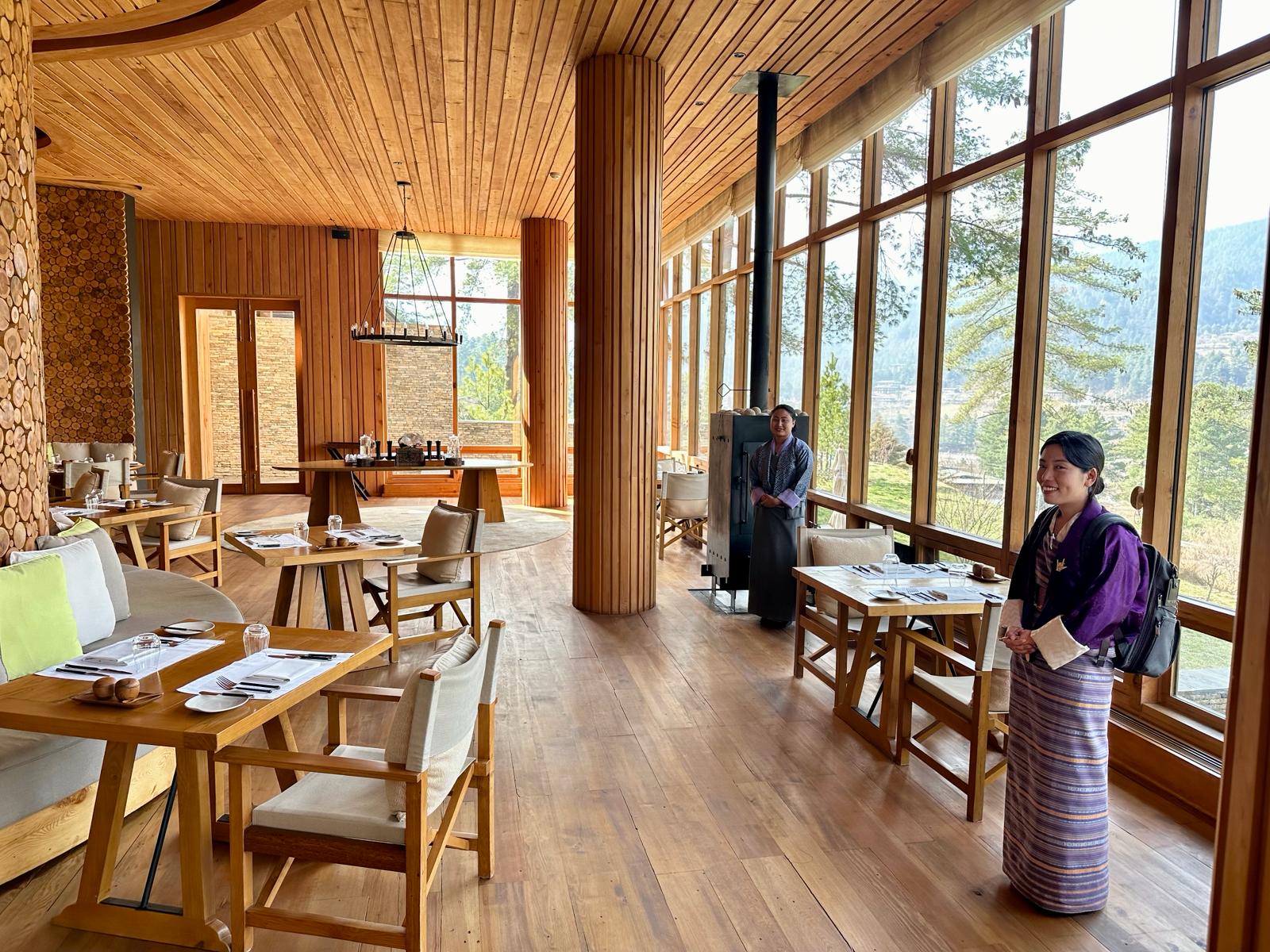
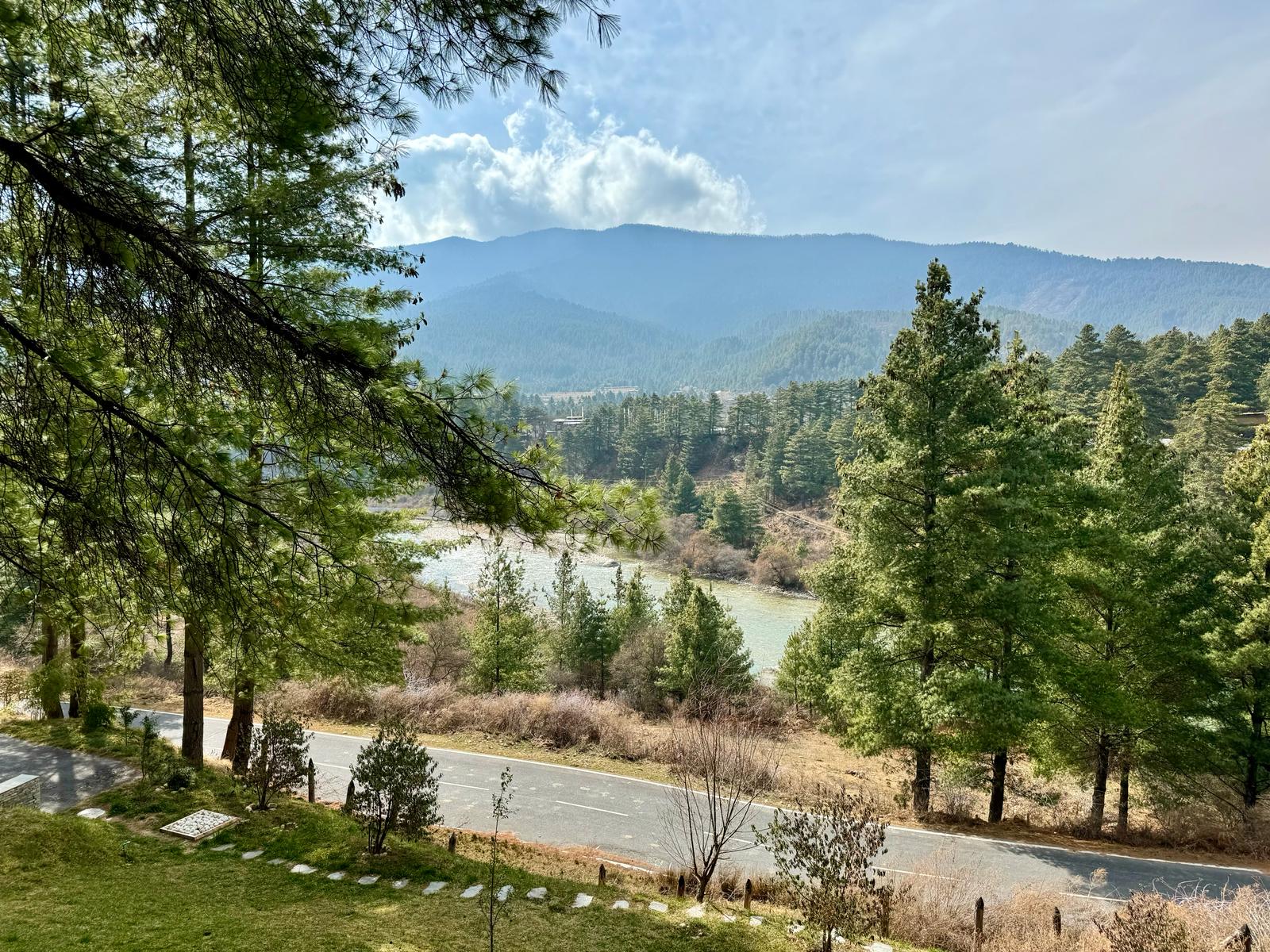
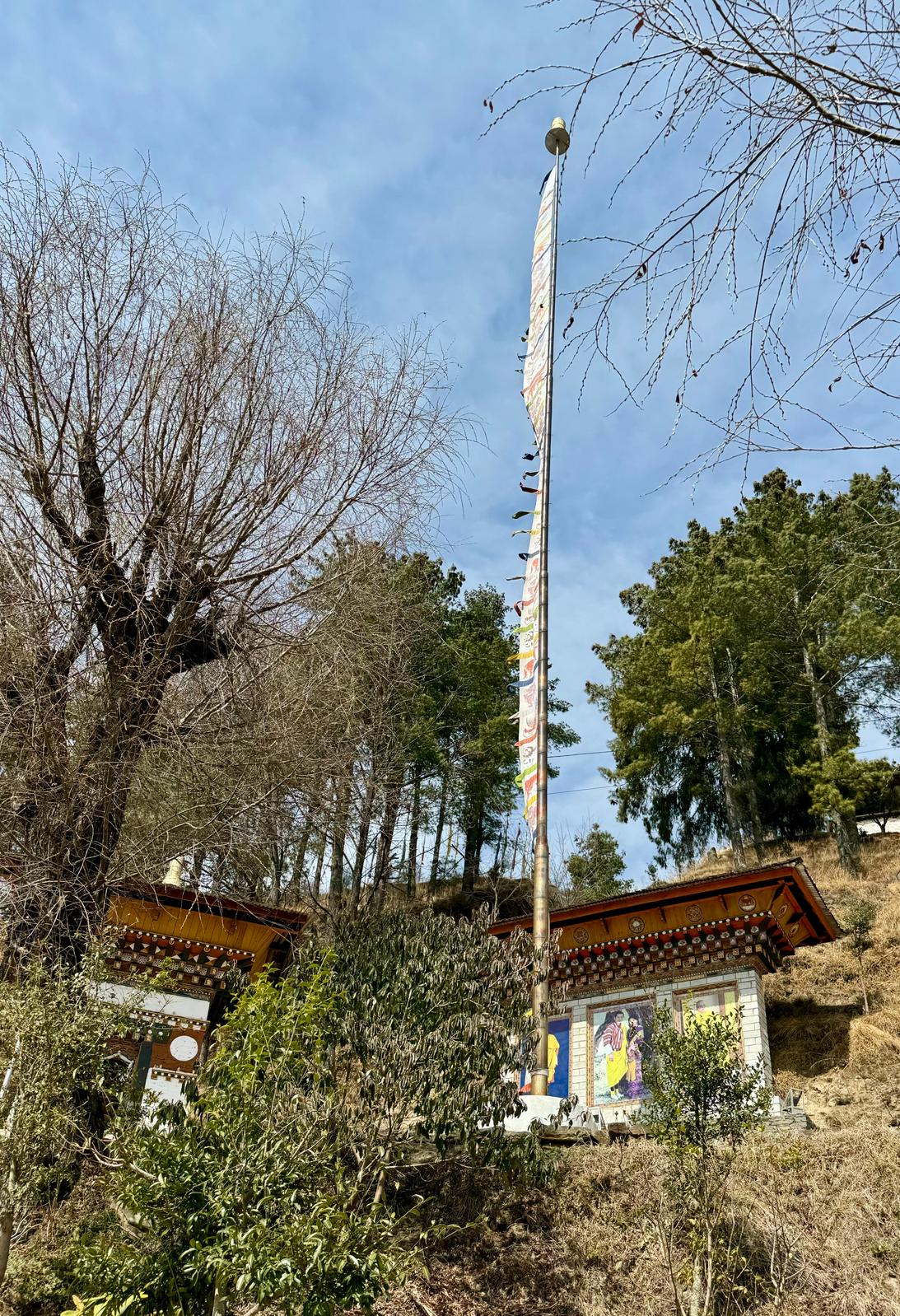
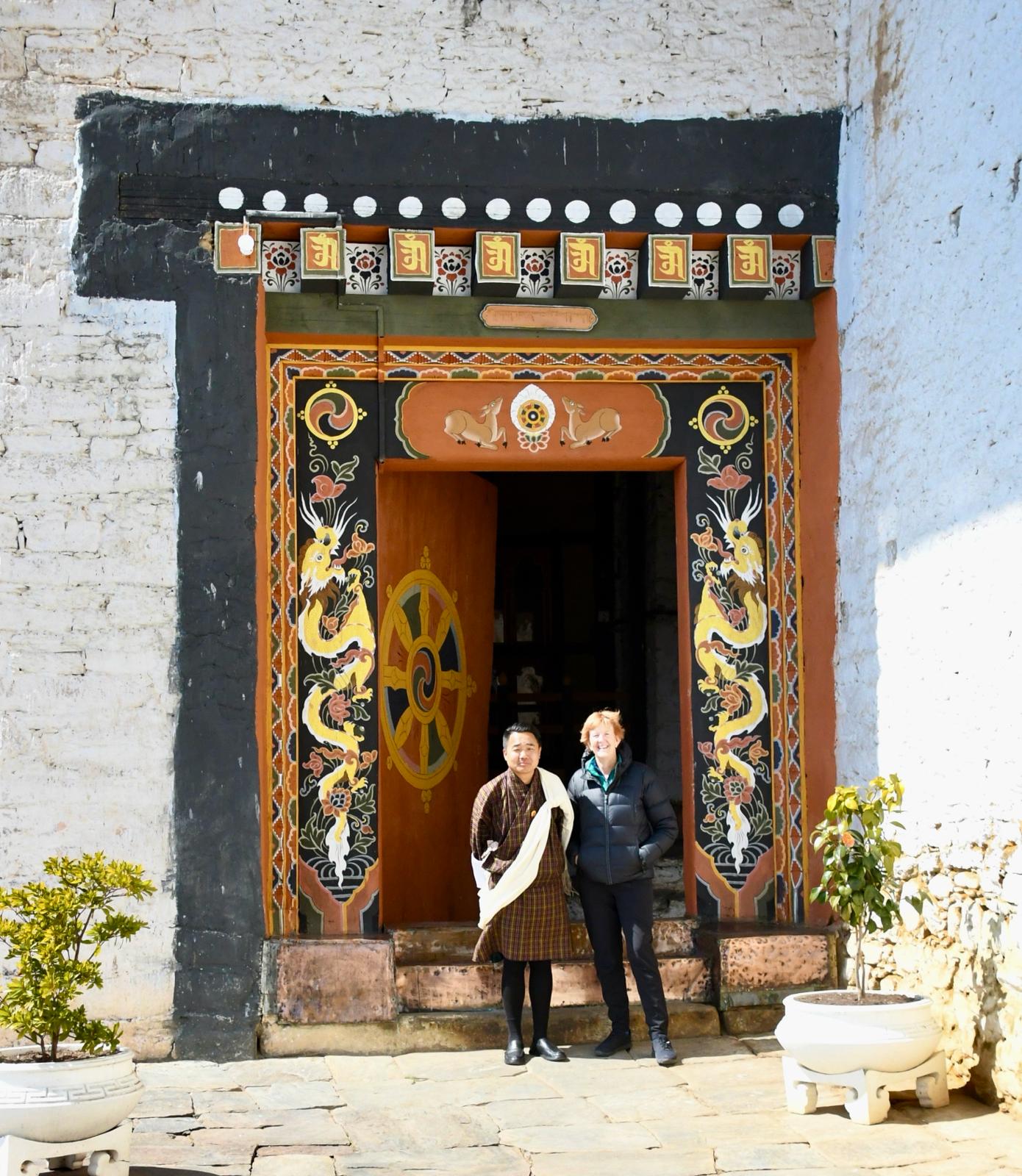
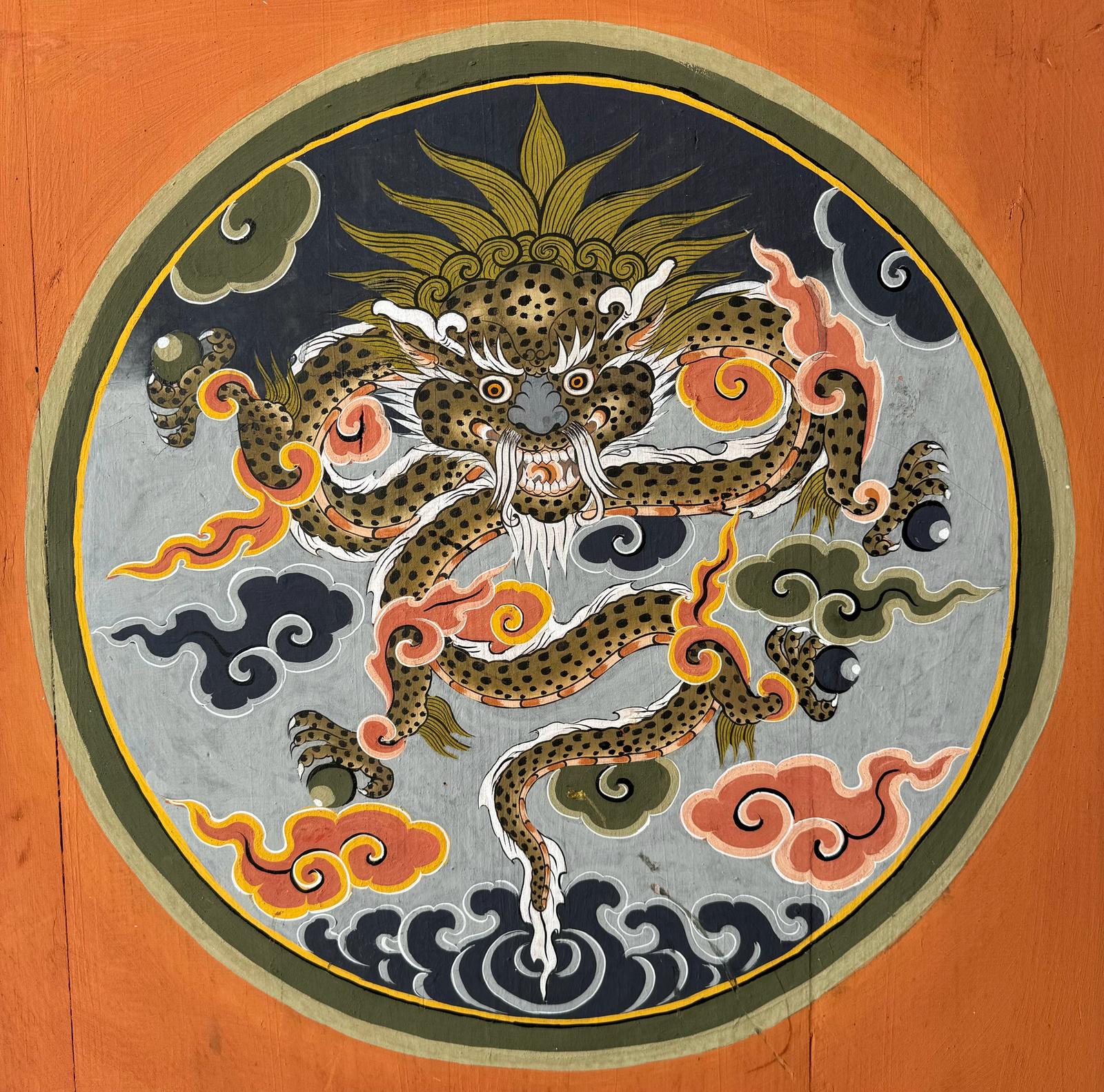
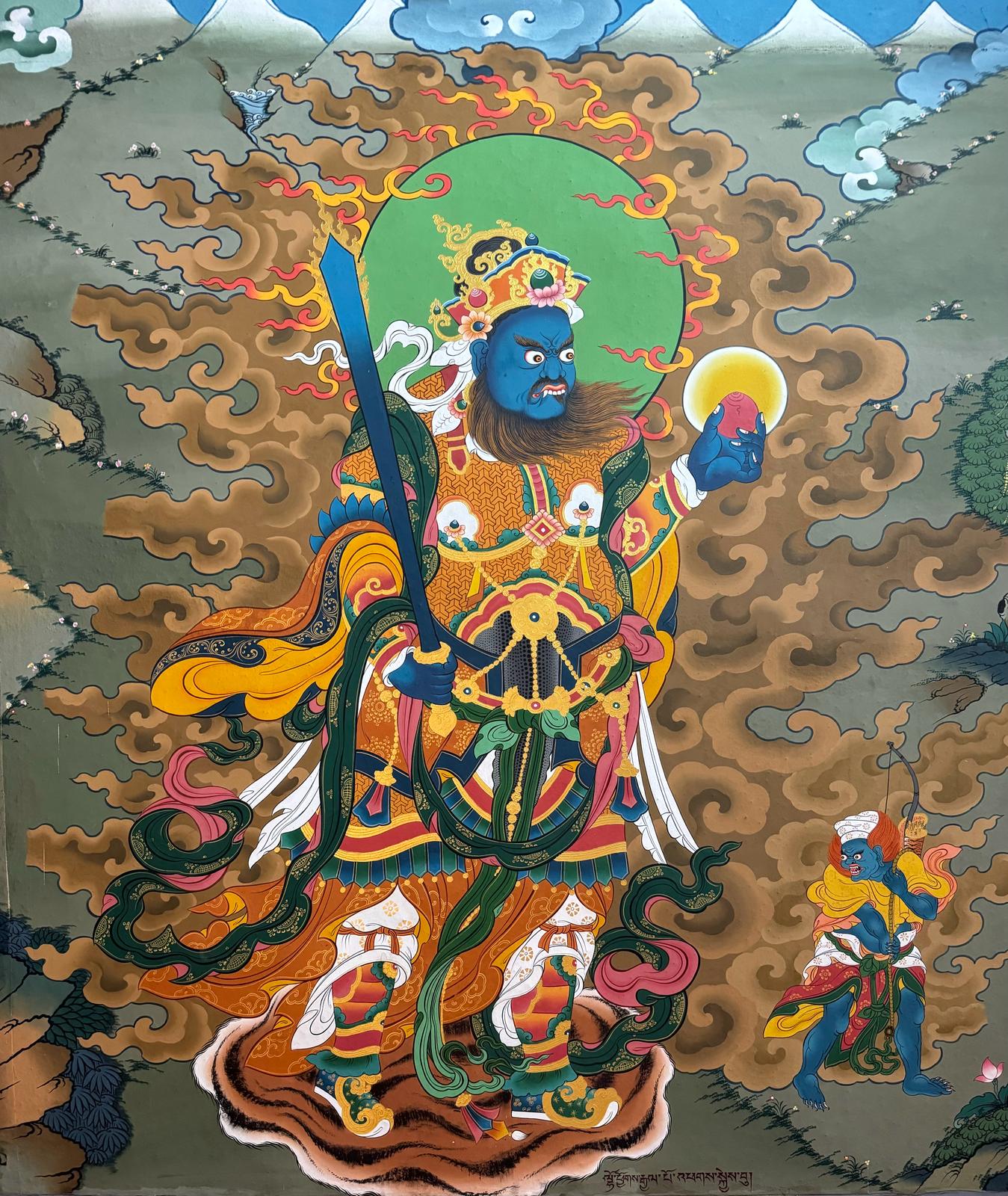
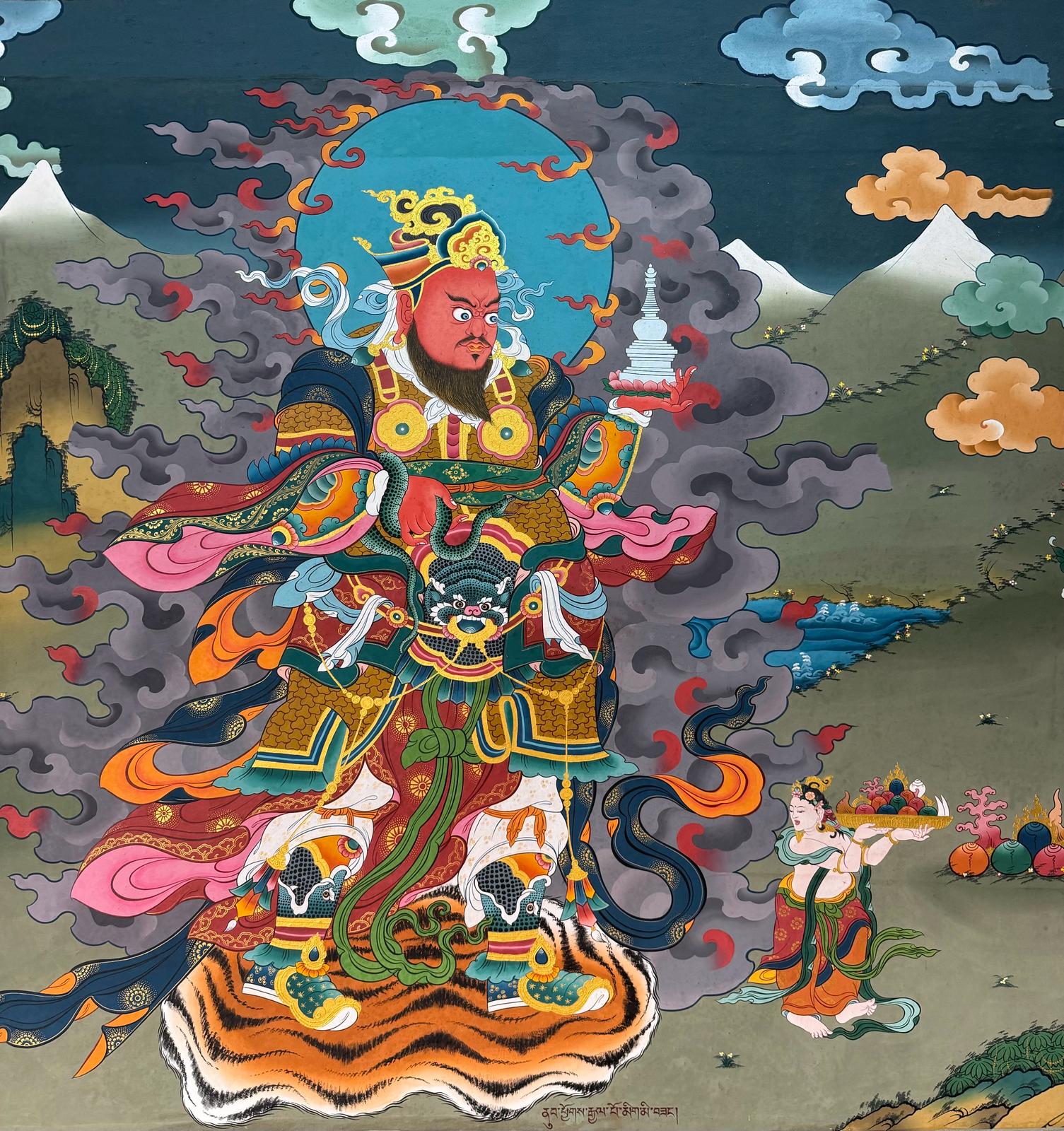
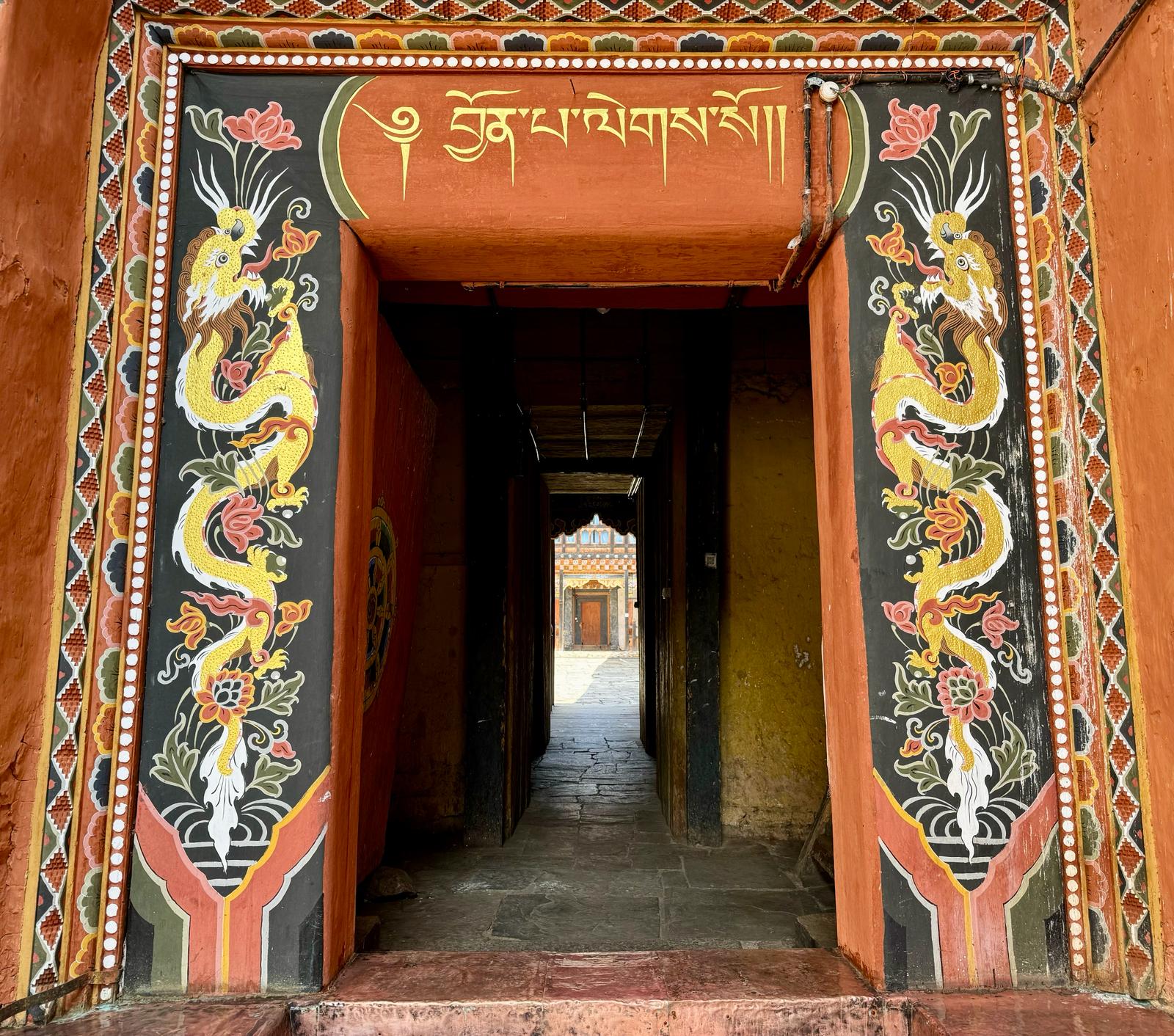
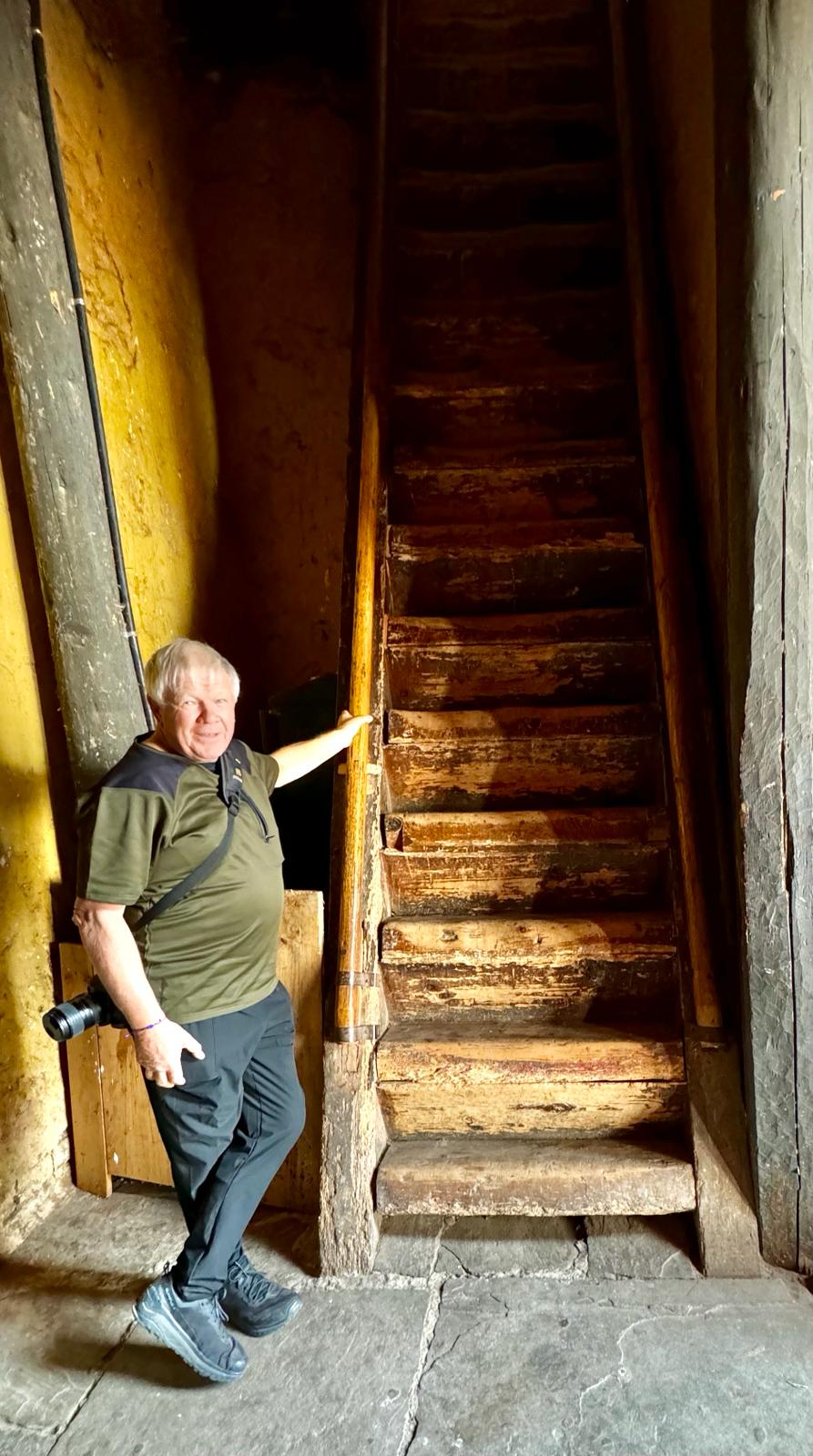
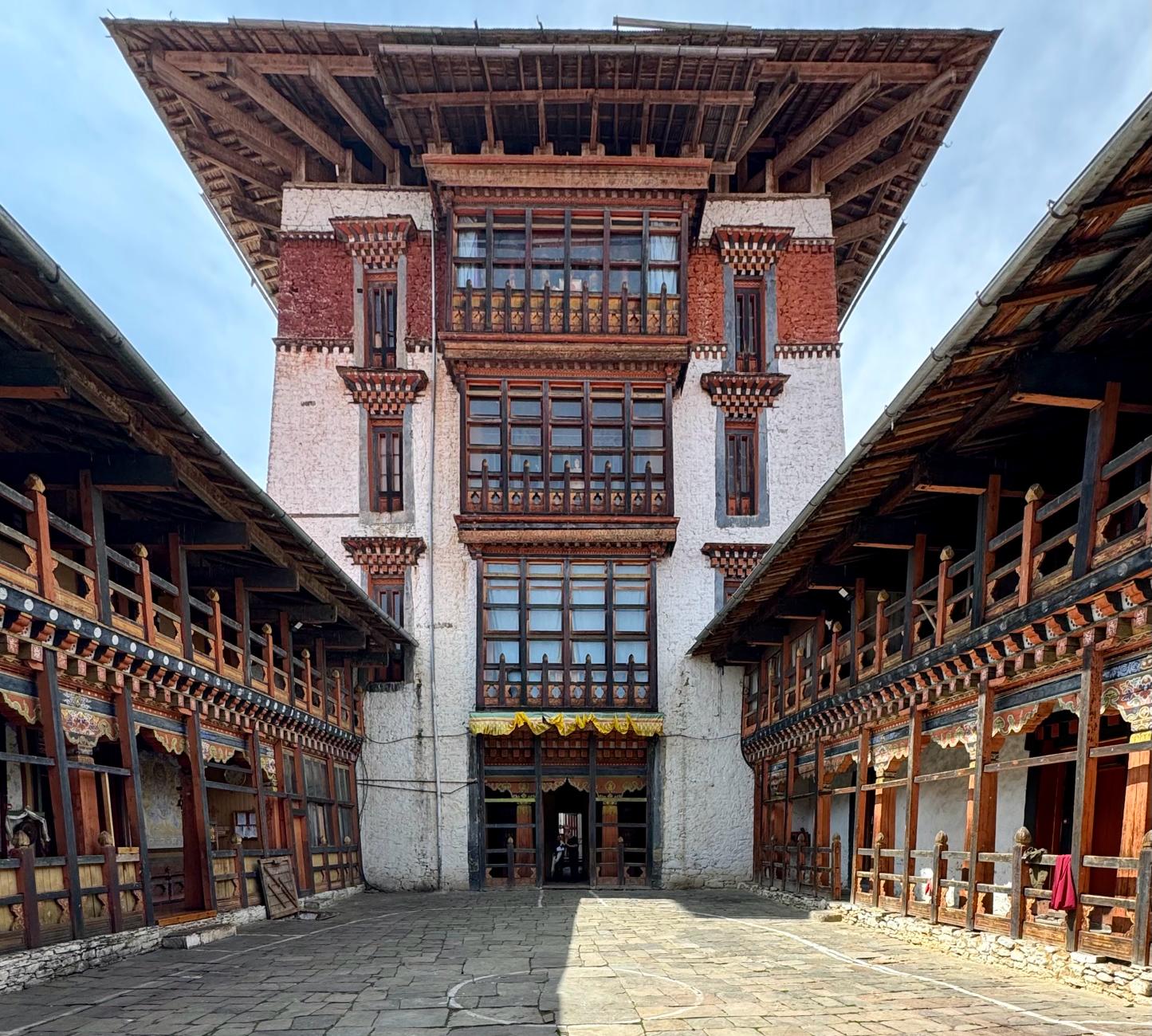
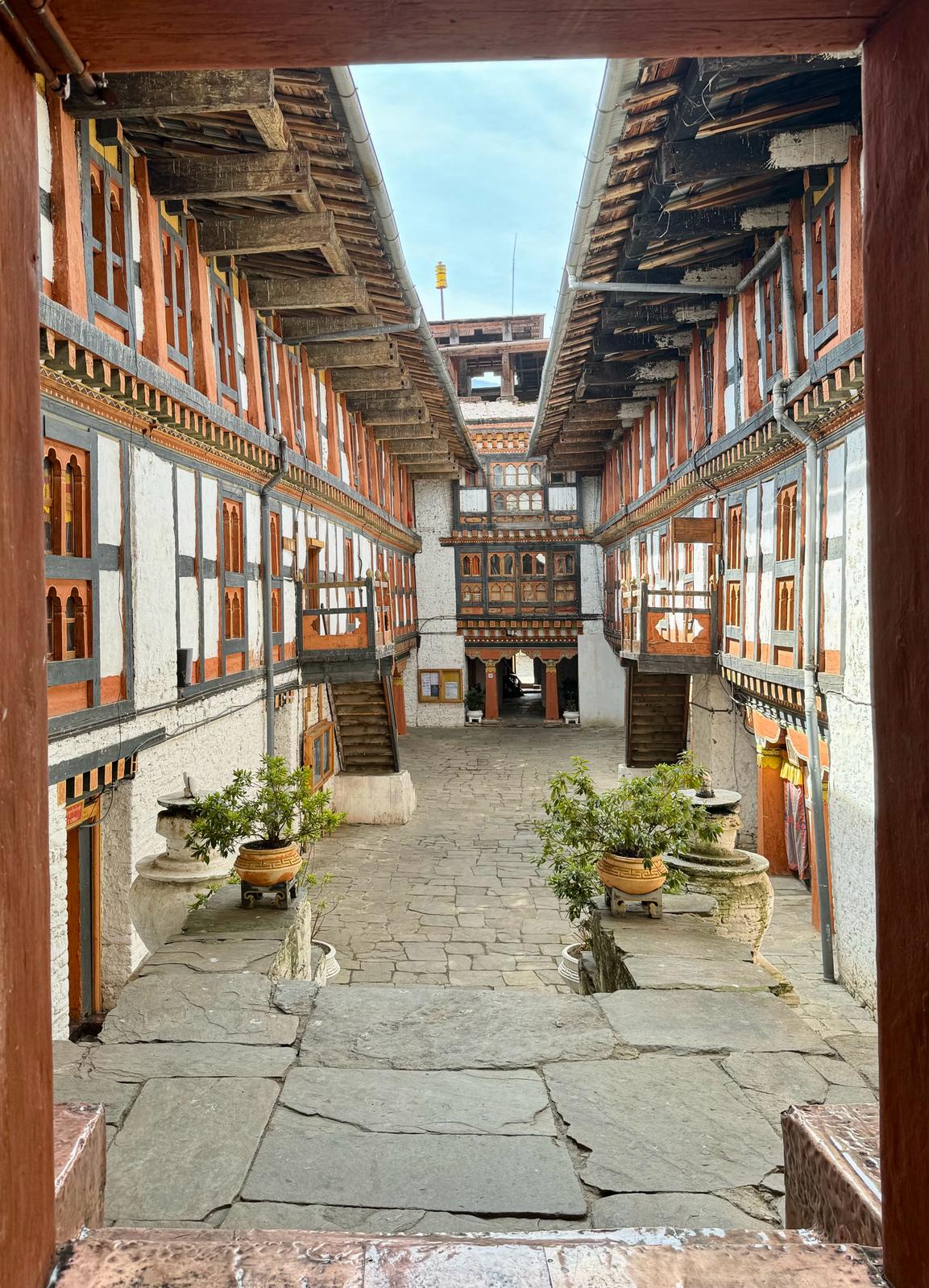
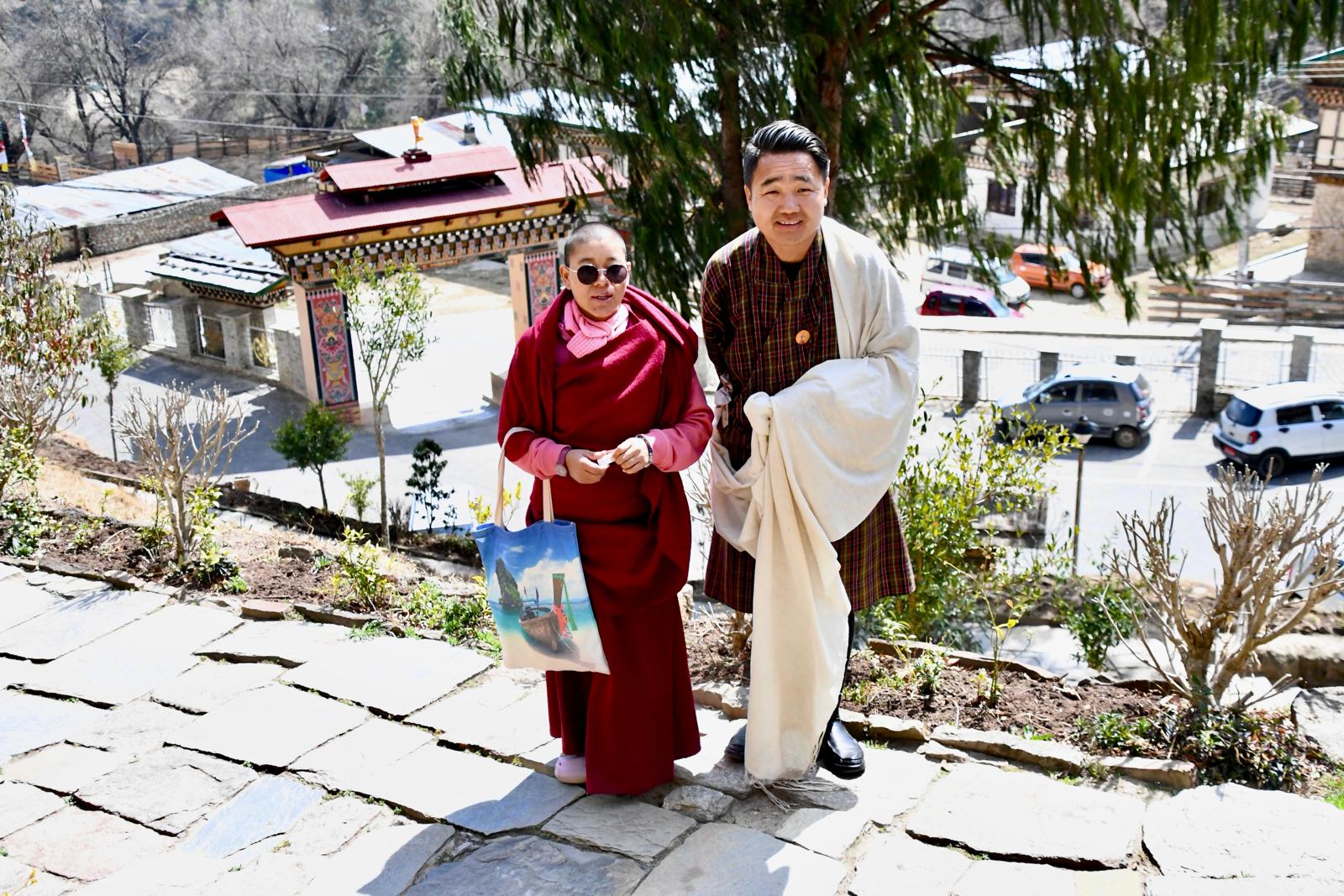
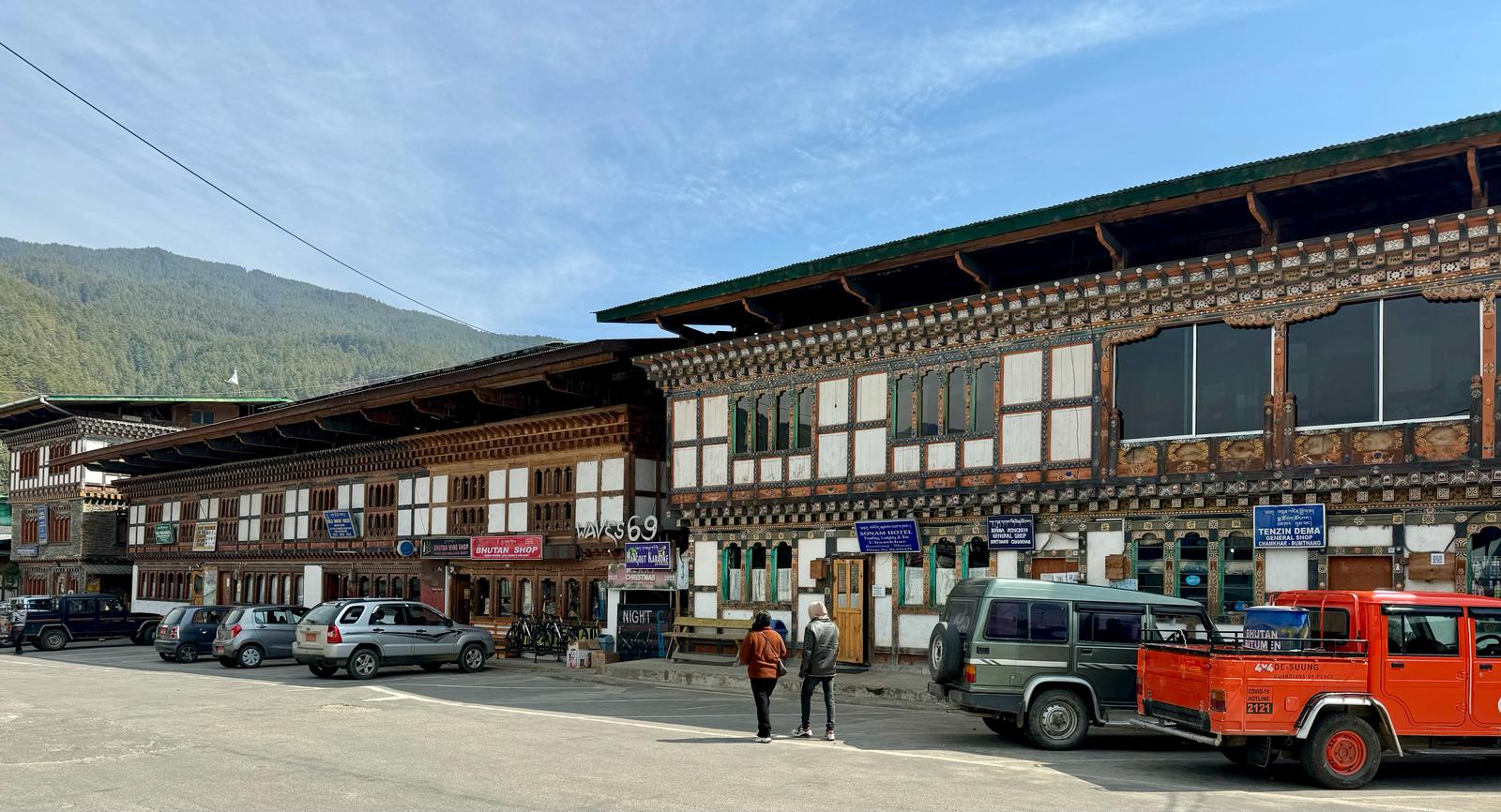
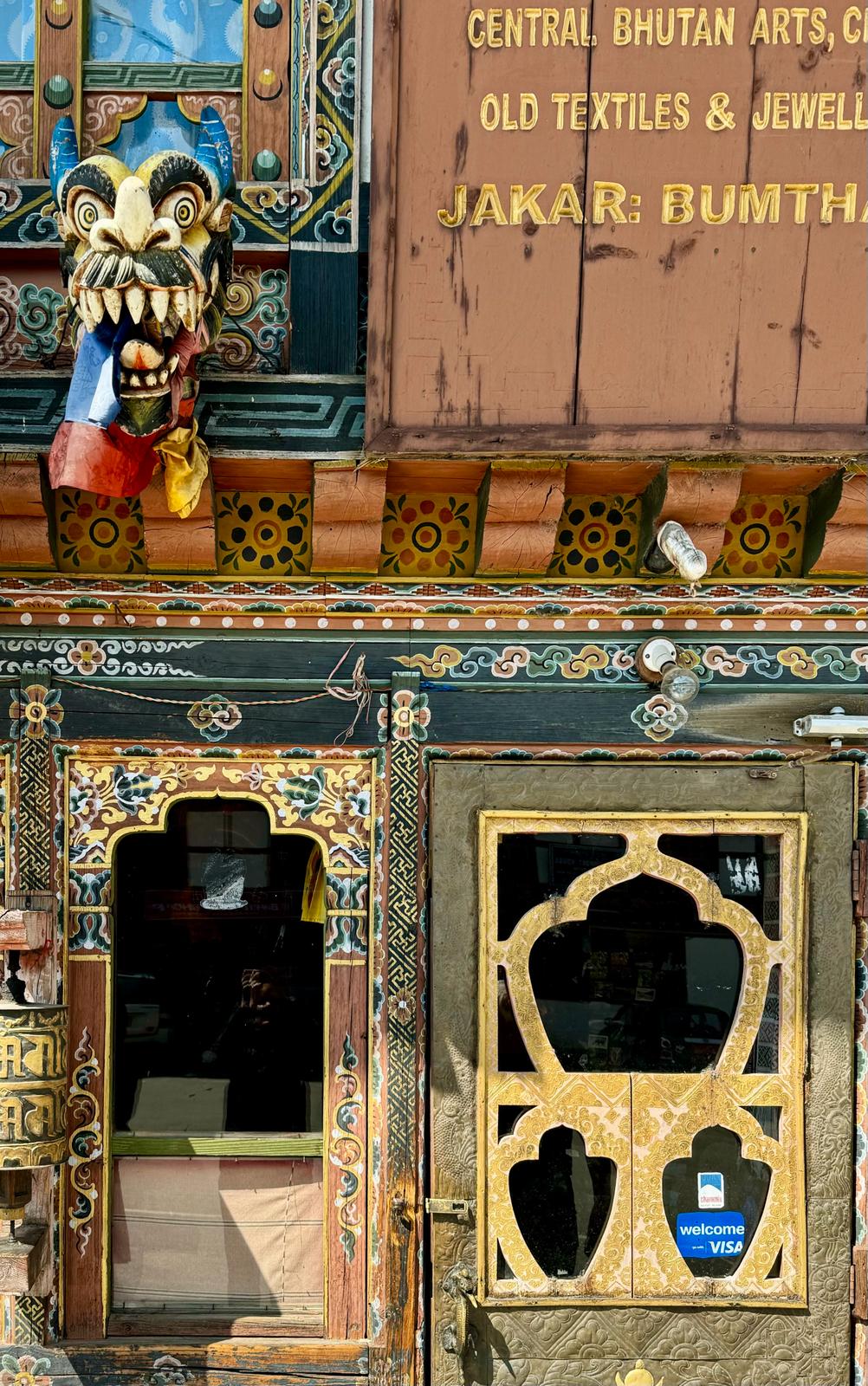
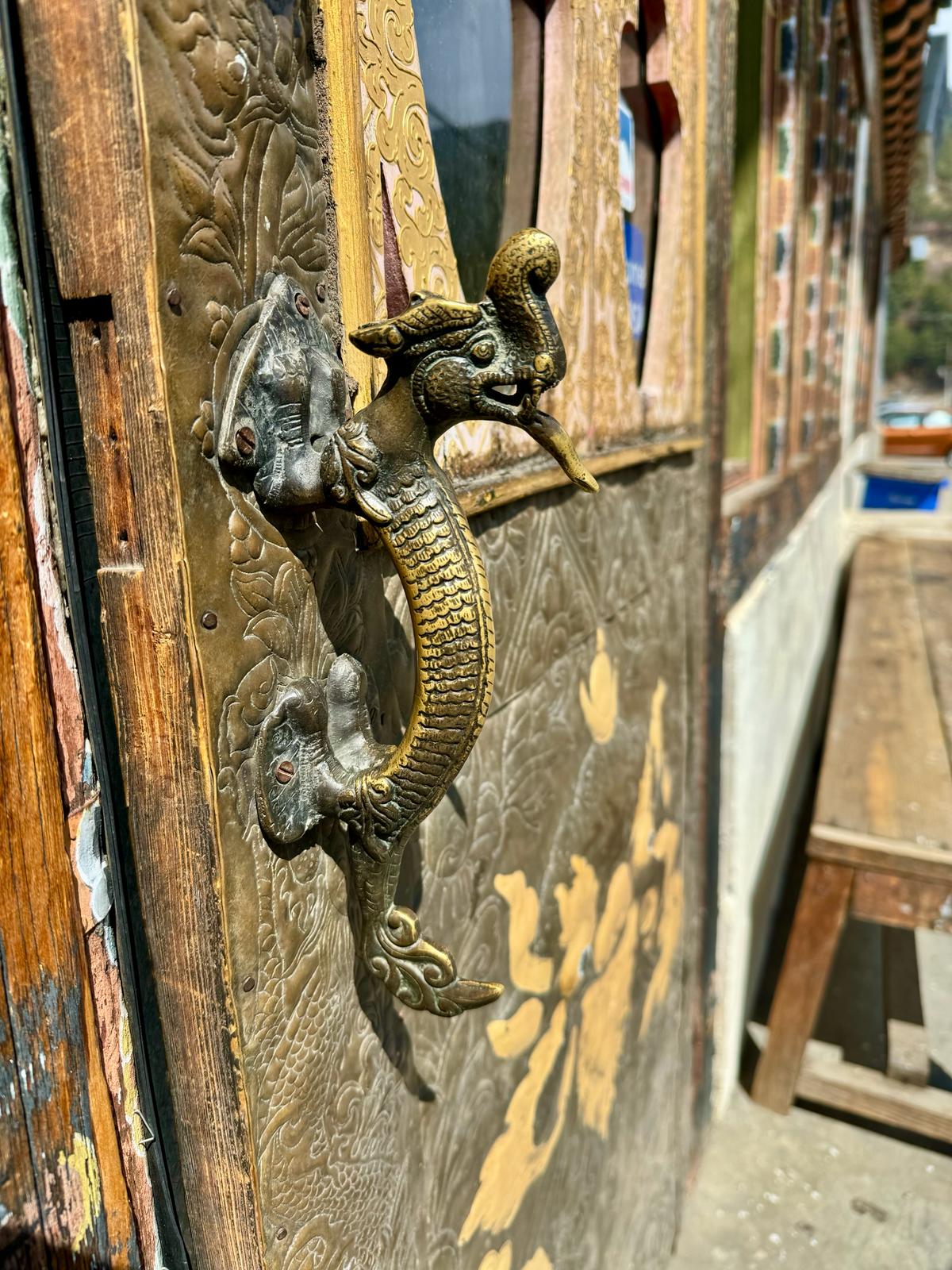
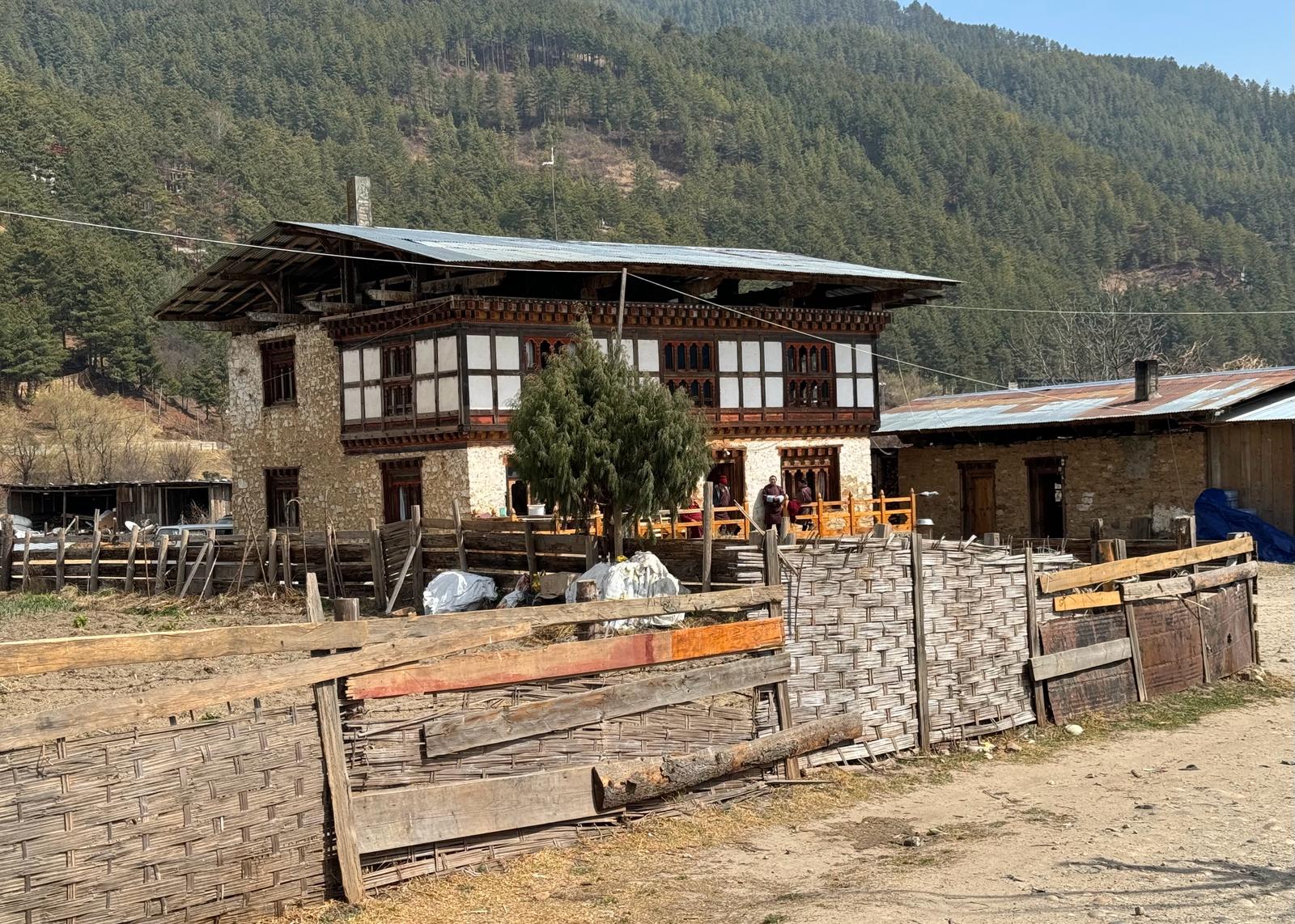
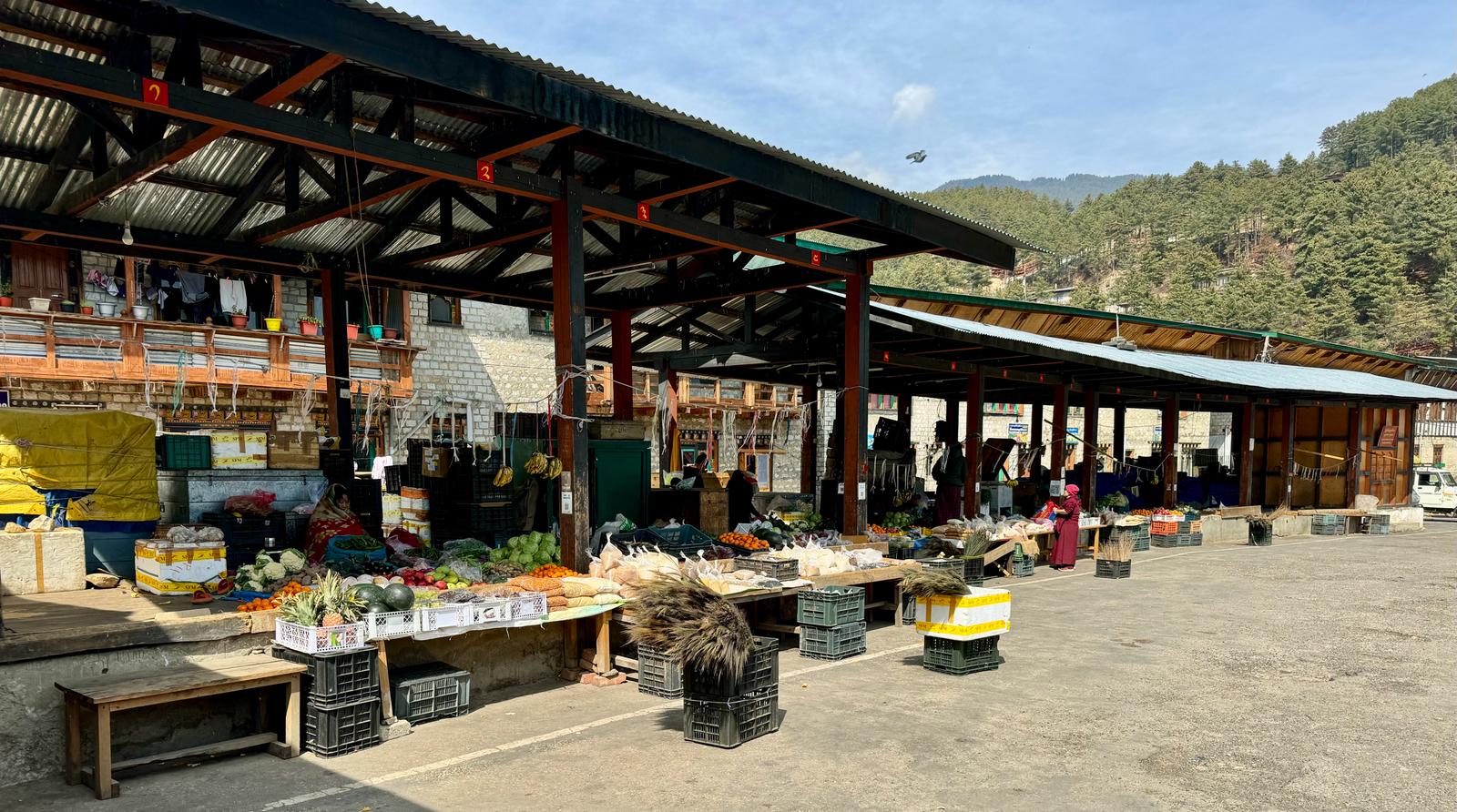
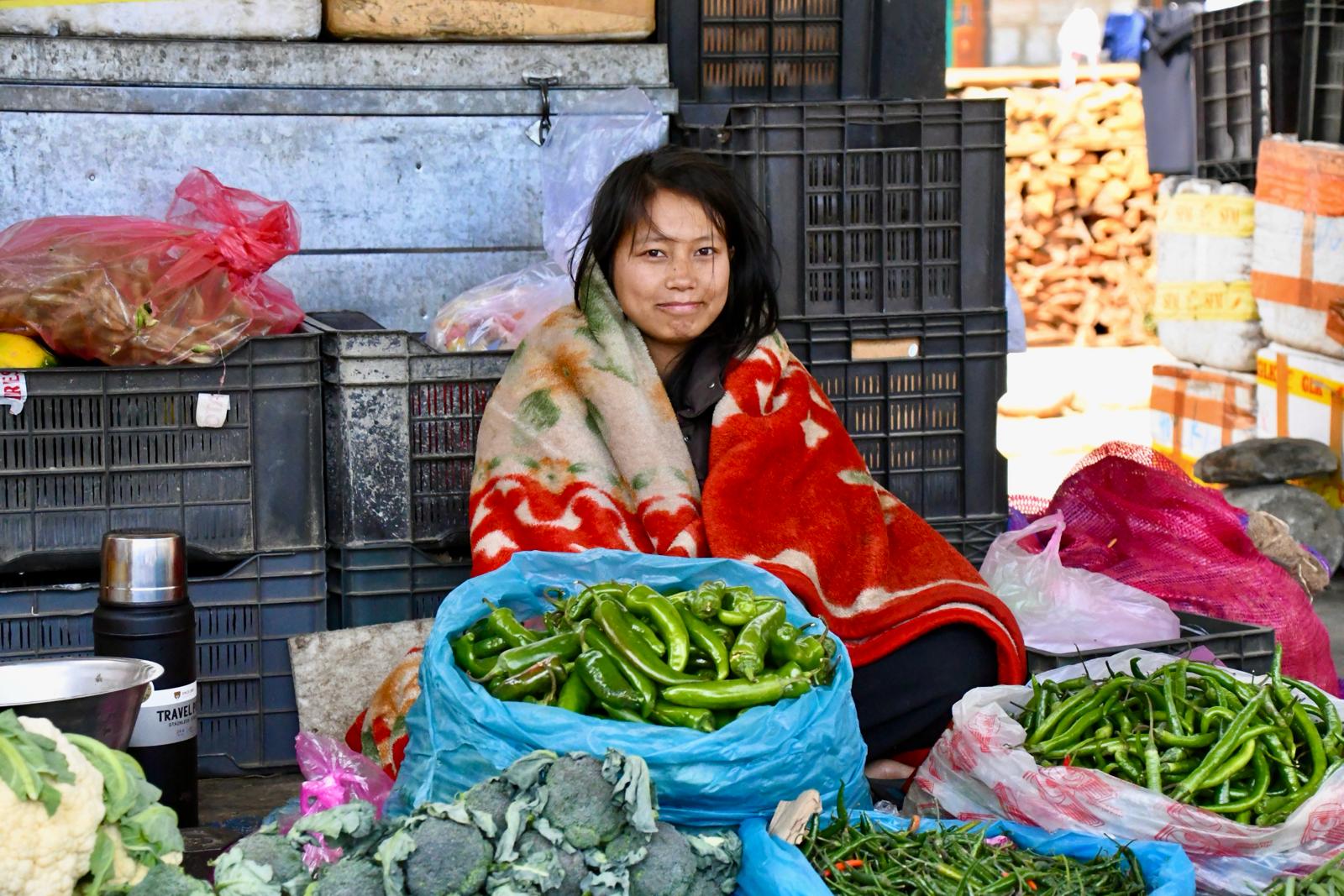
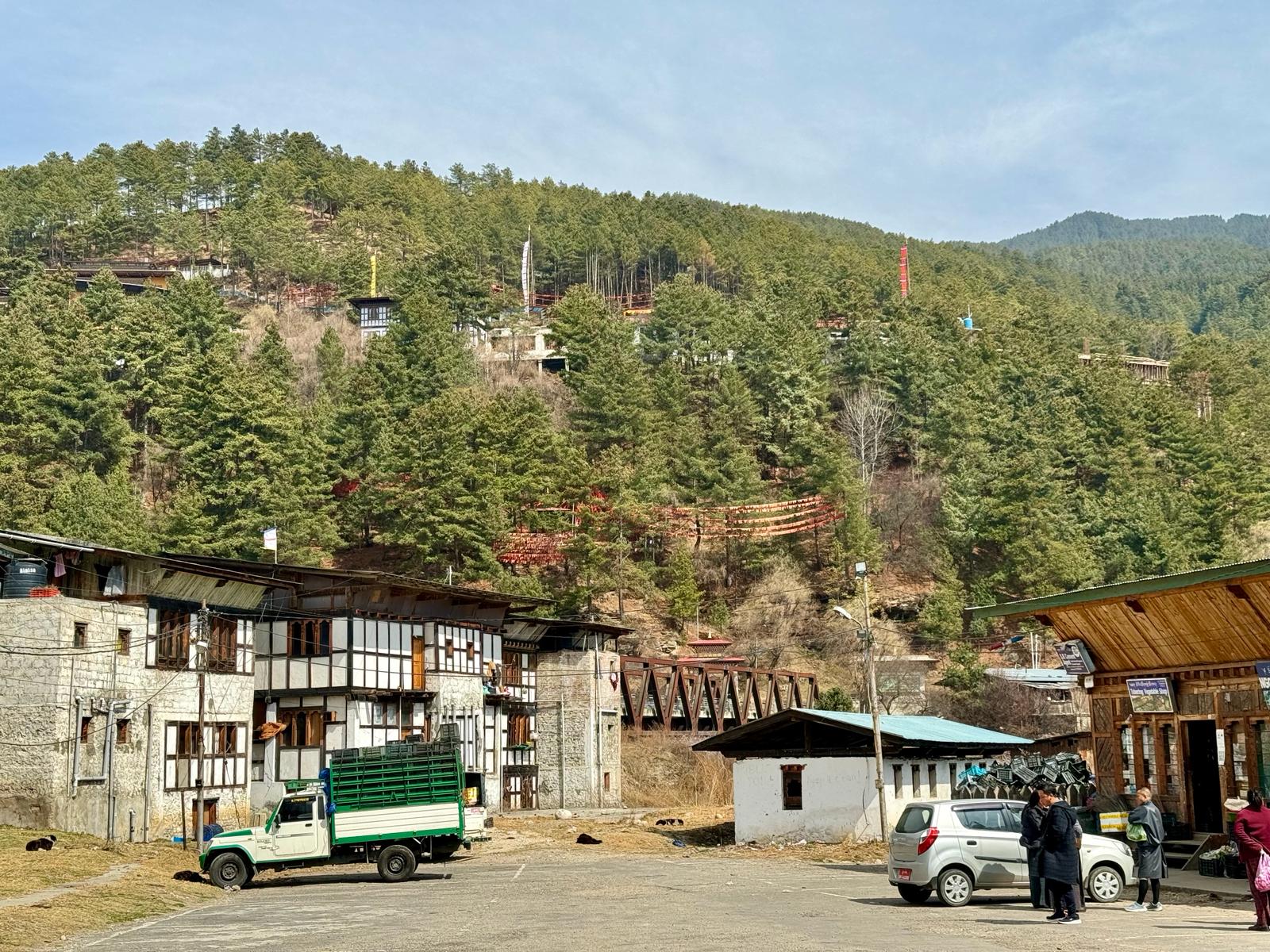
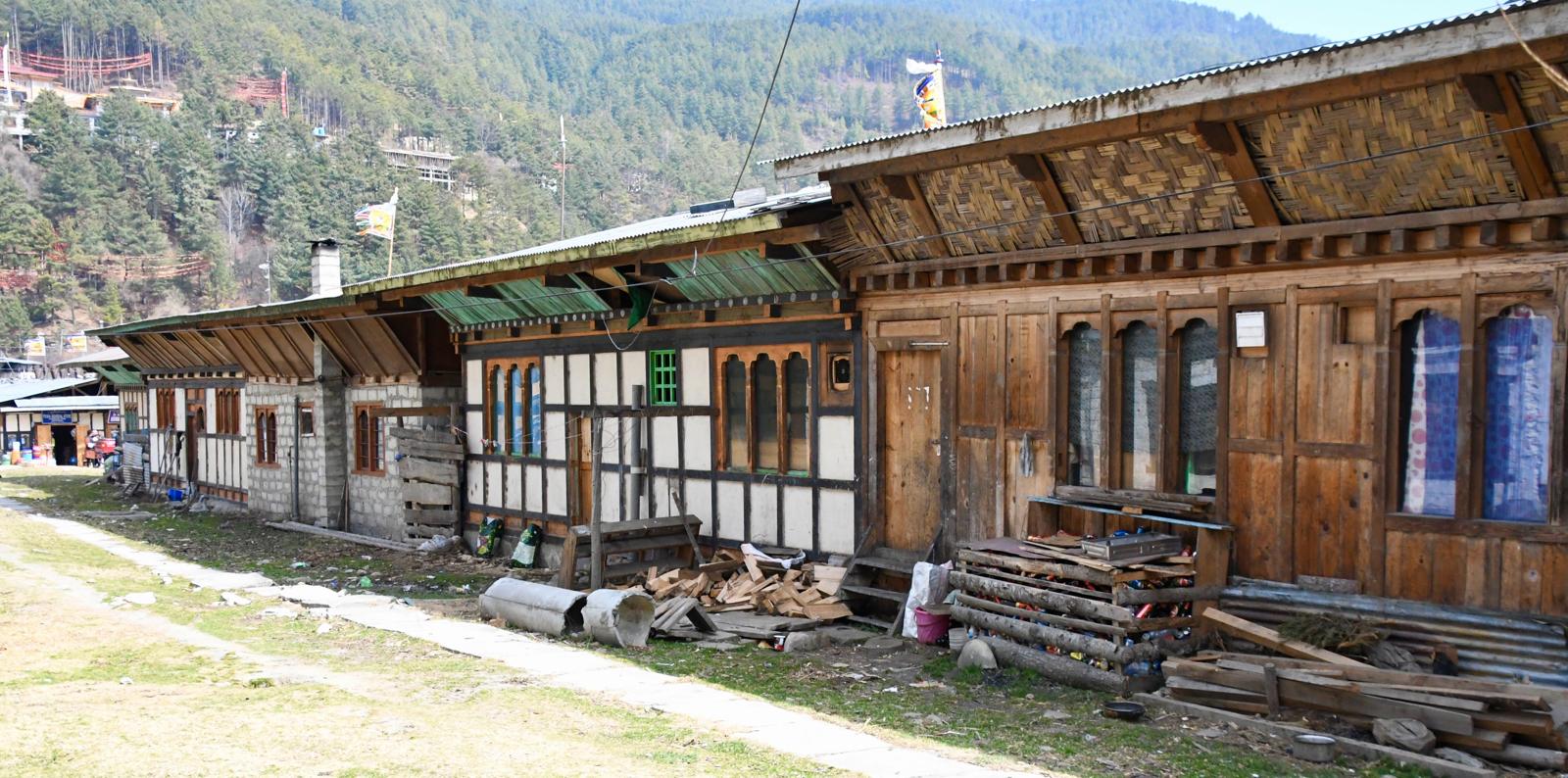
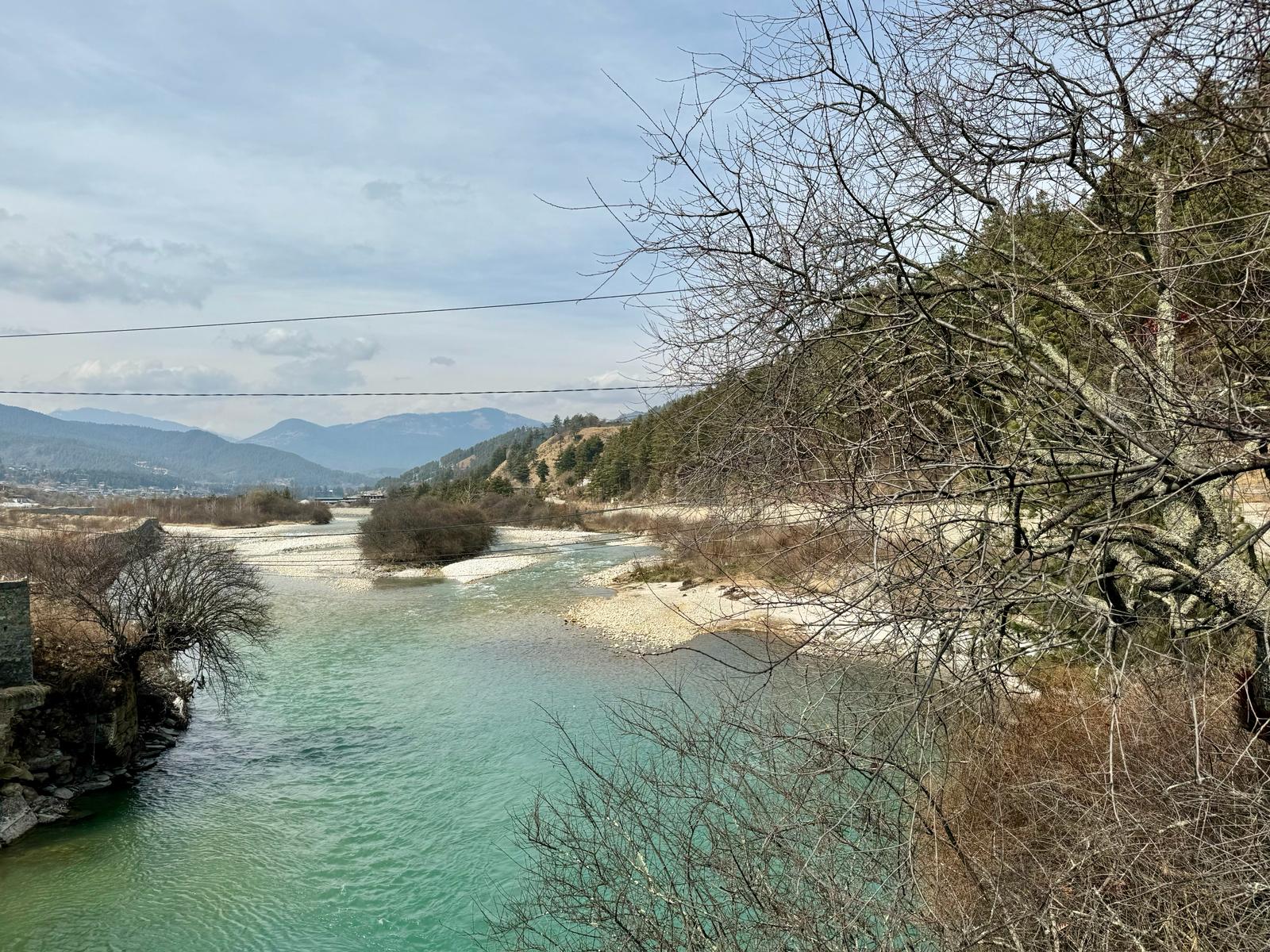
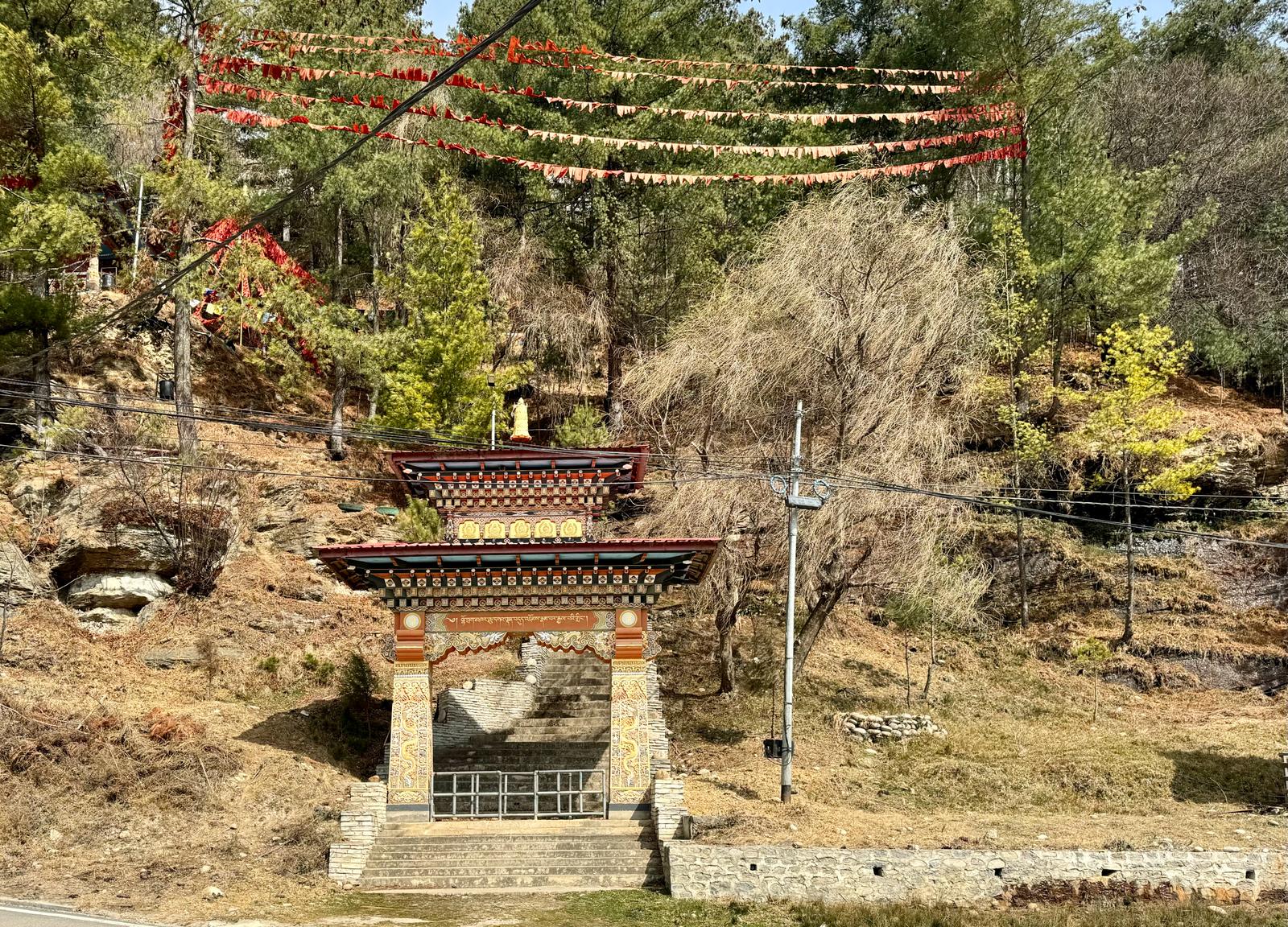
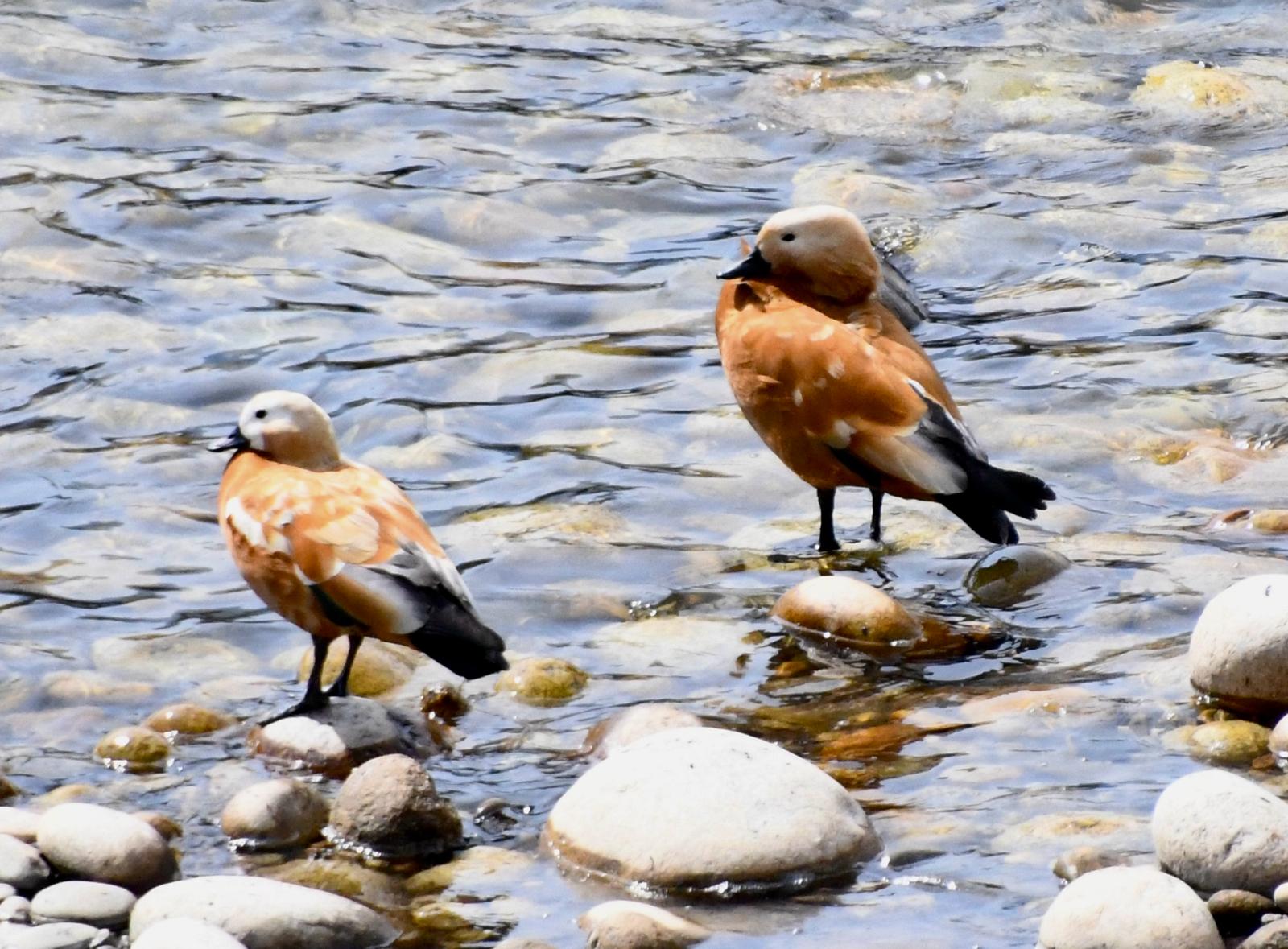
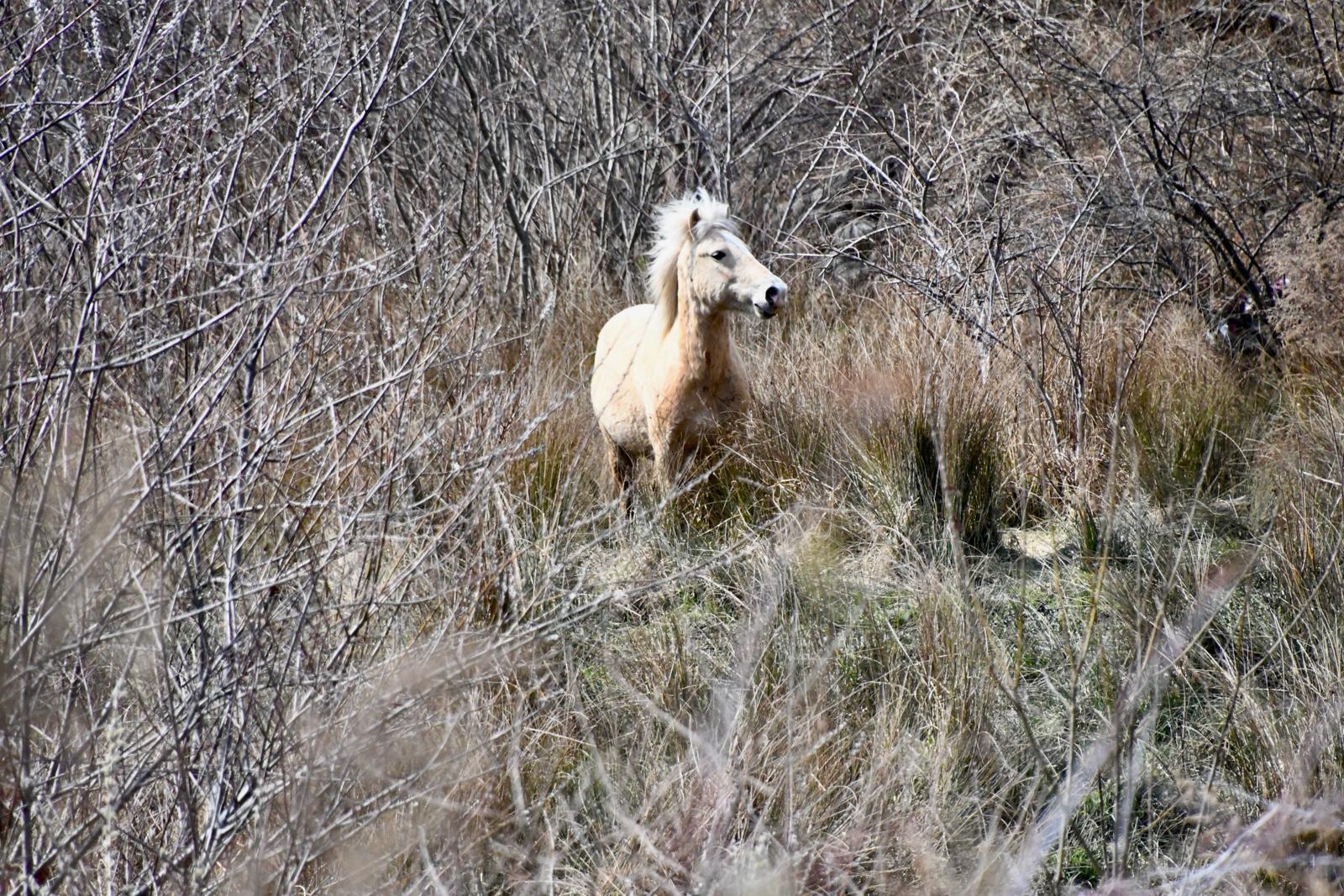
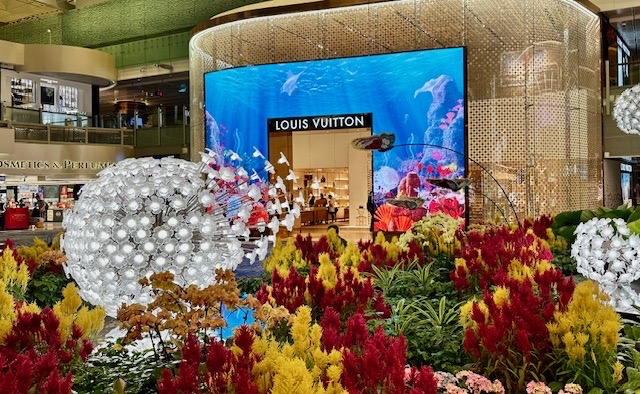
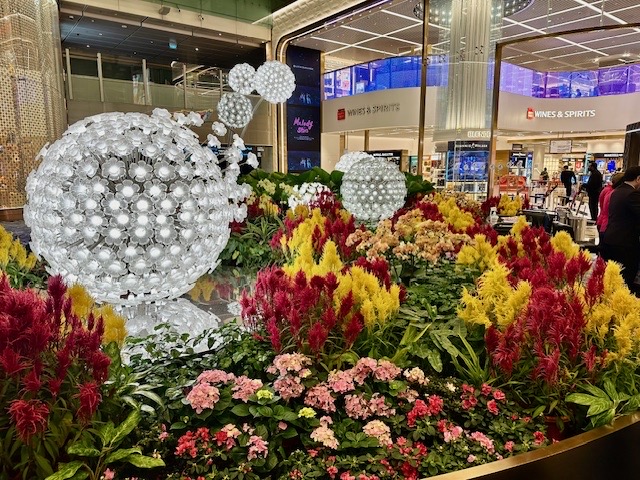 The Butterfly Garden at Changi Airport
The Butterfly Garden at Changi Airport
 View over Guwaharti
View over Guwaharti






